You are using an outdated browser. Please upgrade your browser or activate Google Chrome Frame to improve your experience.

- Trip Styles
- Destinations
- Guided Backpacking Trips


GUIDED BACKPACKING TRIPS
Our guided backpacking tours take you into the heart of world-renowned wilderness destinations like the Grand Canyon, Yellowstone and Yosemite.
Enjoy solitude and adventure as you embark on a self-sufficient journey deep into America’s most stunning wild areas. You’ll be carrying everything you need for the trip in a top-of-the-line, fitted backpack we provide. Pack weights vary between 25 and 45 pounds, depending on the area, the duration of the trip, the time of year, and your height and weight.
We provide everything except clothing, footwear, rain gear, personal items, and a couple small gear items. All the gear we provide (backpacks, tents, sleeping pads, sleeping bags, trekking poles, cooking gear) is top-of-the-line. Also, you can request to share a tent with others in your party or have one to yourself. All meals are included from breakfast the first day through lunch the last day, and your guide will prepare all meals.
Note: if you’d like to do a standard backpacking trip but prefer not to carry the gear, we offer porter services for $400 per porter per day. The porters can carry up to 30 lbs of guest gear and do not hike with the groups.
Top Backpacking Trips
- Most Popular – Rim to Rim in Grand Canyon
- Most Adventurous – Longs Peak Loop
- Best Wildlife – Thorofare Trek
- Best Waterfall Trip – Havasupai
- Coolest Campsites – Valleys and Glaciers of the Cascades
- Best Views – Hermit Loop
- Top Weekend Trip – Young Lakes & Mount Conness
- Top Family Trip – Thunder Lake
- Best Hot Springs – Bechler River Traverse
- Best Fall Colors – Mount Sterling Appalachian Loop
All Guided Backpacking Trips Trips ( 96 results)
Filter trips.
Destination
Trip Length
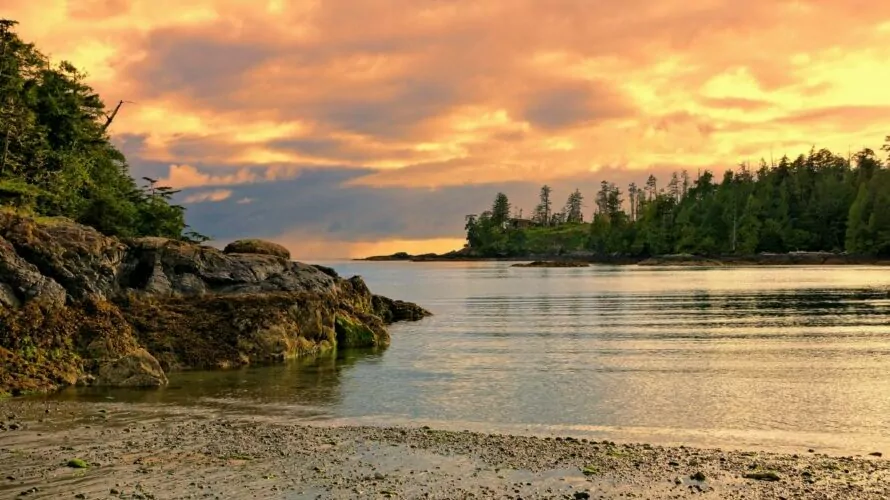
West Coast Trail Backpack
Alpine Peaks, Lakes and Waterfalls Thru Hike
Summer Rim to Rim in the Grand Canyon
Autumn Rim to Rim in the Grand Canyon
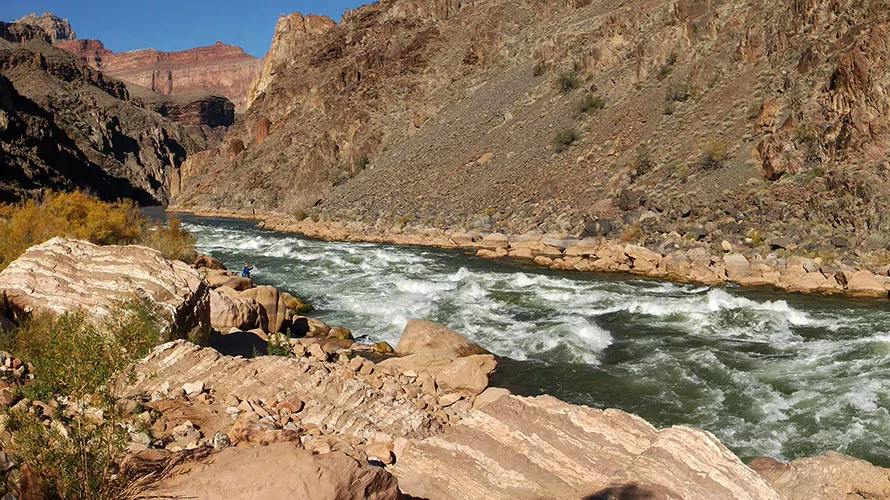
Hermit Loop
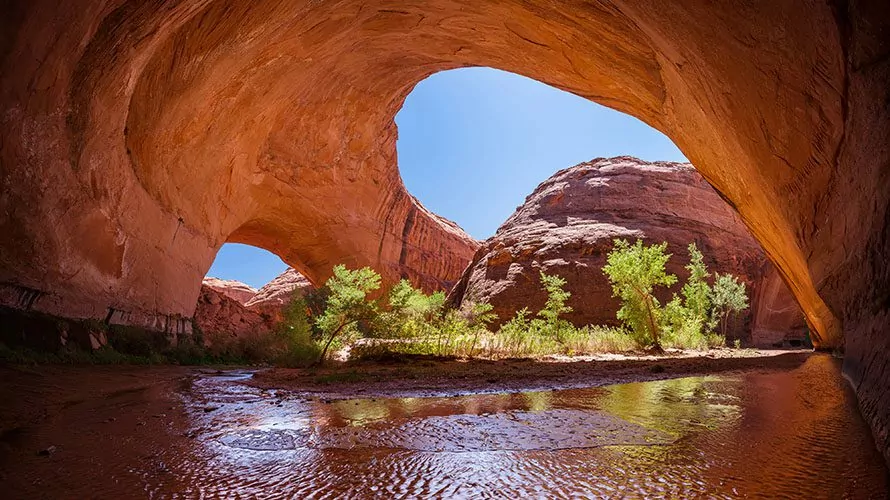
Coyote Gulch
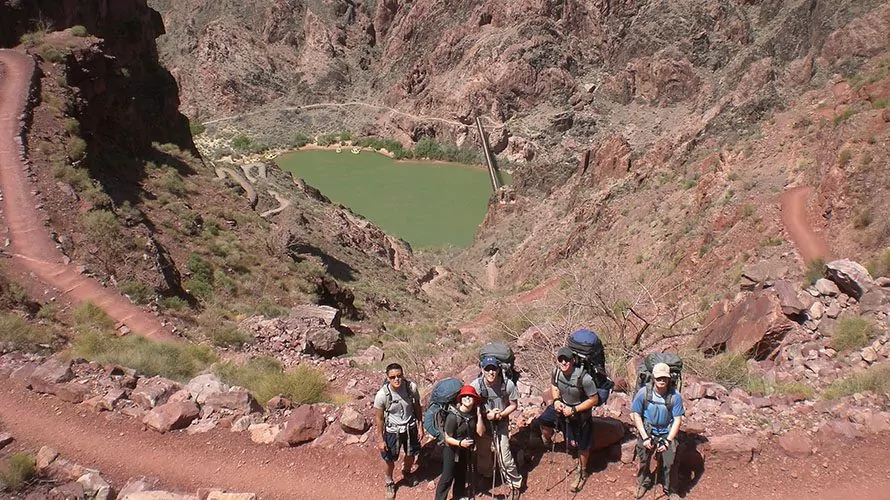
Grand Canyon Classic
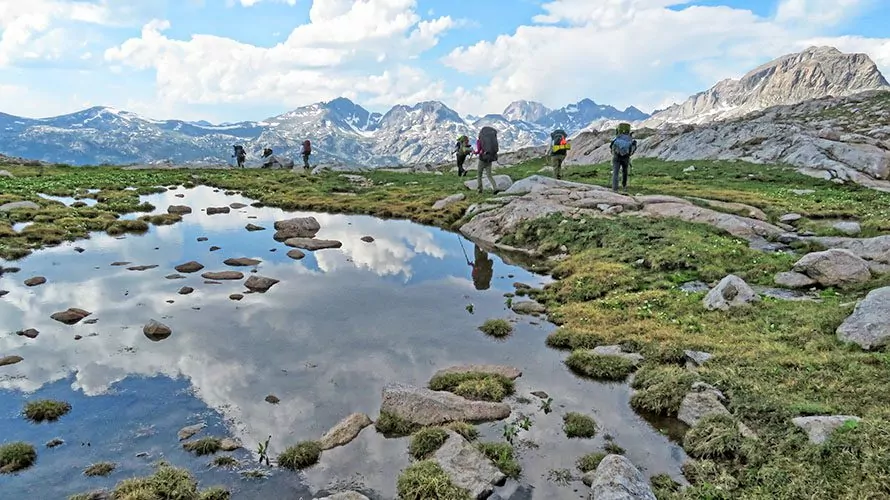
Boulder Lake to Green River Lakes
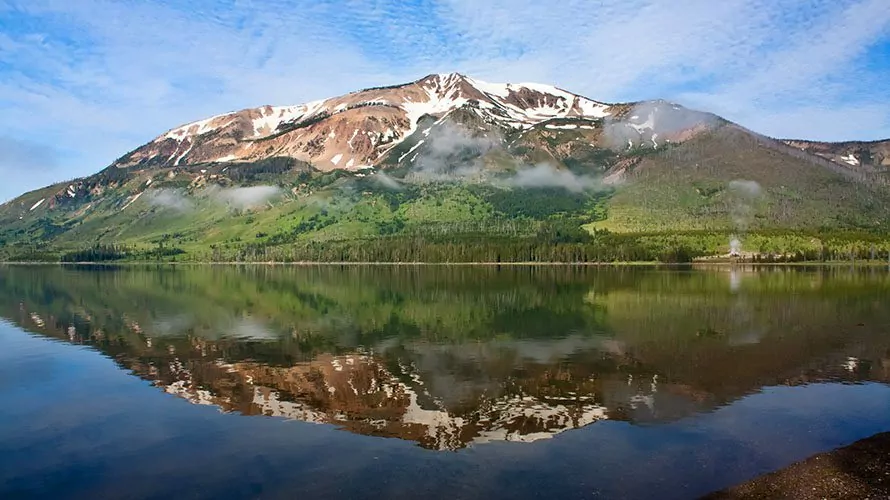
Heart Lake to Snake River
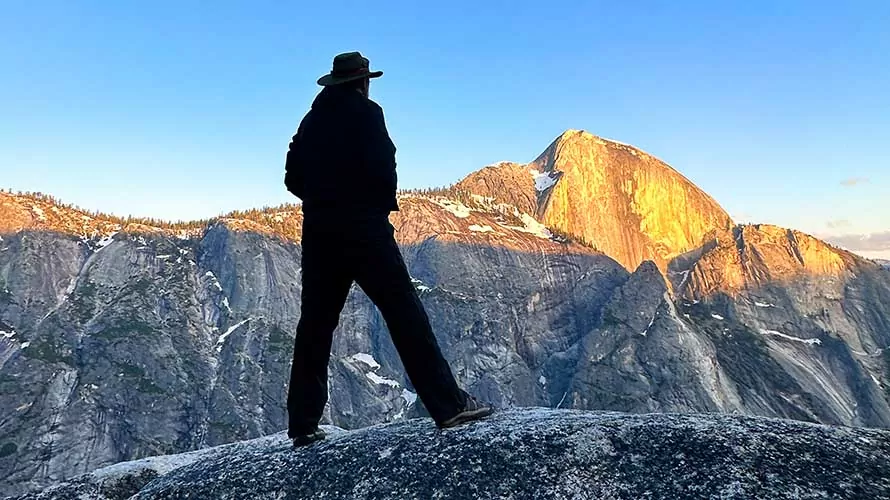
Yosemite Falls and North Dome Traverse
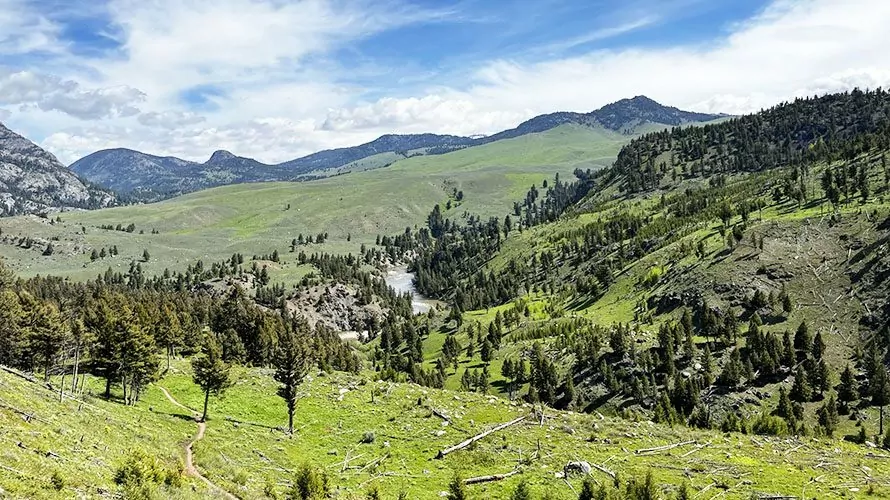
Yellowstone Spring Trekking Adventure
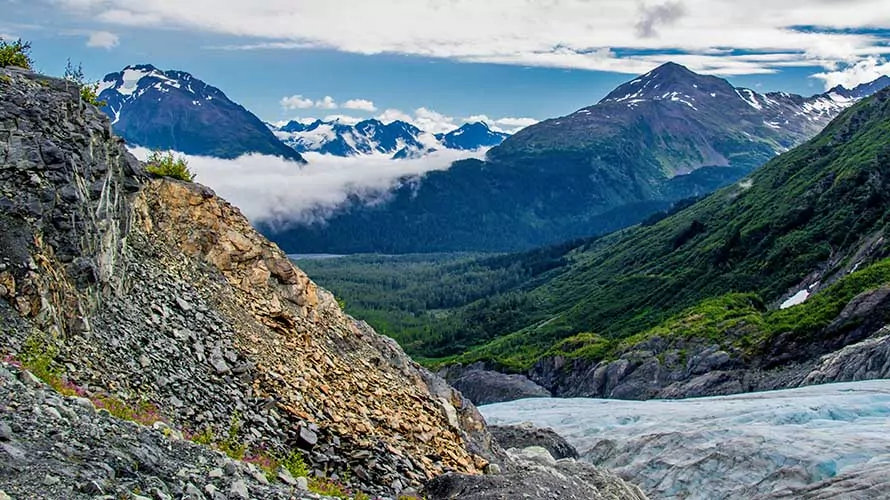
Wild Alaska Coast and Glacier Trek

Stock/Porter Trips
Experience the adventurous backcountry of America’s national parks and wilderness areas with the added joy of hiking with only a light day pack! Let porters, llamas or pack mules carry the gear so you can maximize your enjoyment while hiking and enjoy more elaborate backcountry meals! Trips include all camping gear, meals, a professional hiking guide, and porters, llamas or mules to carry the supplies.
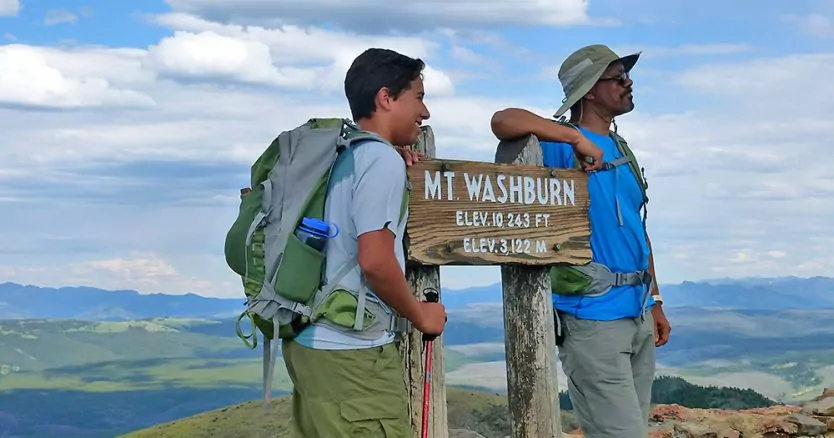
Basecamp Trips
Our basecamp tours are adventurous hiking trips that take you deep into the wilderness on challenging day hikes and return you to a comfortable, vehicle-accessible camp each afternoon for showers and exceptional meals around a campfire! These trips are excellent options for people who want a memorable outdoor experience with fantastic hiking and also access to showers, cold drinks, perishable foods…etc. Trips include local transportation, camping gear, meals, park entrance fees, and a professional hiking guide.

Inn-based Tours
Hike your national park(s) of choice in style! Join us for an unforgettable hiking vacation featuring a variety of adventurous forays into the wilderness each day with cozy lodging and charming restaurant meals each night. Learn about the amazing natural and cultural history of the area and challenge yourself on exceptional hikes. Trips include local transportation, lodging, meals, park entrance fees and a professional hiking guide.
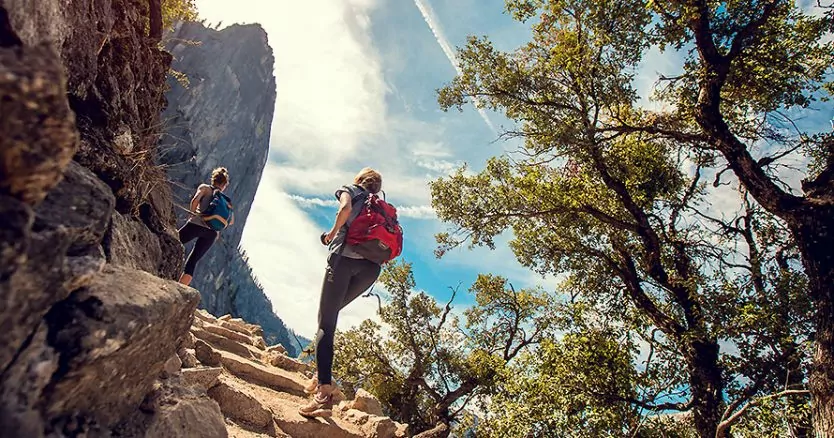
Day Hike Tours
Make the most of your day at the Grand Canyon, Yellowstone, Yosemite or Rocky Mountain National Park on a guided day hike! Learn about the amazing natural and cultural history of the area, enjoy the peace of mind that results from hiking with a local expert, let us take care of the gear and food, and hear amazing stories that have taken place in the Park. All hikes include use of a backpack, trekking poles and crampons (Grand Canyon in winter); snacks and lunch; and a professional hiking guide.
MORE ABOUT GUIDED BACKPACKING TRIPS
What is a backpacking trip.
A backpacking trip differs significantly from a normal camping or hiking excursion in that it involves hiking away from roads, trail heads, parking lots…etc. with everything we need on our backs. We carry all of our food, kitchen gear, clothing, camping equipment, water filters and more on our backs in technical, multi-day backpacks. And we set off into the wilderness as a self-sufficient group. Each outing varies in terms of moving camp or staying in the same camp for multiple nights. Some trips are loops, others are thru-hikes (meaning point-to-point hikes that require shuttles), and still others are out-and-backs. Every backpacking tour is unique and all are hand-picked for their adventure, natural beauty, campsites, and amazing hiking.
THE JOY OF BACKPACKING
As every backcountry guide knows well, there’s a shift that happens to people after 2-3 days in the wilderness. Surrounded by the peace, silence, natural beauty and an environment largely uninfluenced by humanity, the tranquility of nature begins to permeate our consciousness. Our minds slow down and become quieter, our senses heighten, our appreciation of our surroundings expands, our bodies relax even while working hard, and the rythms of the natural world begin to feel familiar. Our daily activity aligns with the sun. We wake at first light and watch the sun ease its way over cliffs, mountains or canyons; and at the end of the day we watch it set in an often brilliant light show before sitting around a campfire or crawling into our sleeping bags. The days are full with simple yet stunningly fulfilling activities: crossing rivers, hiking over passes, ascending canyons, eating, resting, appreciating where we are, connecting with our fellow travelers. The joys of backpacking are not easily conveyed in words – ultimately, the only way to truly understand it is to experience it for yourself.
WHAT’S INCLUDED ON A WILDLAND TREKKING BACKPACKING TOUR?
Our backpacking trips are all-inclusive! What that means is we worry about nearly all the logistics so you don’t have to. We take care of necessary national park and camping permits, which can be difficult to secure. All top-of-the-line gear is provided, which includes technical, multi-day backpacks; sleeping bags and pads; tents; trekking poles and more. (It’s a lovely thing to not have to travel with backpacking gear and our average guest is outfitted with approximately $1000 of retail outdoor gear!) We provide all meals from breakfast the first day through lunch the last day, and our guests rave about our meals. Local transportation is included, which often involves shuttling to/from different trailheads, a logistic that can be very difficult to arrange if not on a guided tour. Last but certainly not least, a certified, professional backpacking guide is included, and our award-winning team of guides is the best out there.
WHY JOIN A GUIDED BACKPACKING TRIP?
There are many reasons our guests join our trips. Here are some common ones:
- Some guests want to hike with a local, professional guide to increase the safety and enjoyment of backpacking in an unfamiliar area.
- Some people are new to backpacking and prefer to hike with experts for peace of mind and to learn best practices.
- For some of our guests, a specific backpacking trip (like Half Dome, Rim to Rim, or Iceland’s Laugavegur Trek) is on their bucket list and they don’t want to purchase all the gear and equipment to do a single trip.
- Some folks are most interested in the educational aspect of learning about the area they’re hiking through.
- Some guests join our guided tours for the ease and convenience of letting us handle the logistics so they can focus 100% on enjoying the hiking experience.
- For most of our guests it’s a combination of some or all of these points that they join our trips
JOIN A MOUNTAIN OR CANYON TREK?
Generally, our backpacking tours can be categorized by mountain trips and canyon trips. Mountain trips are in places like Yosemite, Yellowstone, Rocky Mountain National Park, the North Cascades, Great Smoky Mountains…etc. Canyon trips are in places like Grand Canyon, Sedona, Grand Staircase-Escalante, Death Valley, Canyonlands…etc. Mountain trips feature forests, meadows, rivers, lakes, snow-capped peaks, glaciers, wildlife, and often higher elevation hiking. Canyon trips feature desert oases, arches, desert viewpoints, geological phenomena, cultural history, and wonderful winter and shoulder season temperatures. Many of our return guests alternate between mountain backpacking trips and canyon backpacking trips, experience the best of both worlds! Read more below for more information about where to go at which time of year!
WHEN TO GO ON A TRIP
This is a very common question, and not one easily answered. The better question is probably, “I’d like to go on a backpacking trip in {month or season}; where should I go?” If you’d like to go in the spring, then it’s best to look toward canyon and high desert destinations like the Grand Staircase-Escalante or Canyonlands in Utah, the Grand Canyon , Southern California , and the Great Smoky Mountains (Smokies are a mountain destination but at lower elevation). Summer is best in the mountains – destinations like Yellowstone , Rocky Mountain National Park , Yosemite and the Pacific Northwest . Fall can still be great in the mountains (usually through September), and then in October and November the canyon and high desert destinations are going to be better. Finally, winter is best in desert areas like Grand Canyon, Joshua Tree and Death Valley. Still have questions? Give us a call at 800-715-HIKE (4453) to learn more!
THINGS TO BE AWARE OF
There are several basic things to be aware of, whether you’re joining a guided trip or doing it on your own:
- First, bring the right clothing and equipment . This is absolutely critical. In the mountains or in the desert in spring, fall and winter you’ll want to have plenty of non-cotton clothing. In the desert in the summer months, you’ll want to have cotton clothing. Waterproof/breathable rain gear is essential, as are solid footwear, good and light backpacking tent, warm sleeping bag, sleeping pad, water filter or treatment, first-aid kit and more. If in doubt, join a guided trip to make sure you’re prepared.
- Second, know where you’re going and have a good map plus the ability to read it and orient yourself on it.
- Third, be aware of possible medical situations like heat stroke , hypothermia and hyponatremia . Know the symptoms, how to avoid them, and what to do if you or a companion begin to show symptoms.
- Fourth, have an emergency communication device. Inreach Explorers are light, affordable and offer GPS texting as well as one touch emergency notification capabilities and GPS location tracking.
- Finally, tell someone where you’re going and when you’re going to return.
wildland Wires
Sign up to receive our exclusive Wildland Wire emails and stay up to date with Wildland Trekking's promotions, discounts, contests, outdoor tips and tricks, trip reports and more!
- 1 800 970 7299
- Live Chat (Online) Live Chat (Offline)
- My Wishlist
- Find a Trip
Your browser 'Internet Explorer' is out of date. Update your browser for more security, comfort and the best experience on this site.

Hiking & Backpacking Tours
- Destinations
- United States
- Hiking & Backpacking Tours
When it comes to immersing yourself in the great outdoors, nothing beats camping in the wilderness beneath a sky full of sparkling stars.
Have all the fun of an adventurous outdoor experience without any of the organizational hassle by embarking on a hiking & backpacking tour through some of the USA’s most captivating landscapes – the Intrepid way. Take in the sights of national treasures like Zion National Park , Joshua Tree National Park, and Olympic National Park during the day, and at night, help your guide set up camp, swap stories with your fellow travelers, and let the sounds of Mother Nature slowly sing you to sleep. Simply put, unforgettable doesn’t even begin to describe it.
Backpacking vs base camp vs hut-to-hut

Backpacking
Our backpacking trips are all about switching off and getting back to basics. Say goodbye to running water, and hello to cathole toilets! Carrying a backpack loaded with camping gear, personal items and group supplies, you’ll hike through untamed backcountry and set up a new camp each day with your group. Two words: pack light.
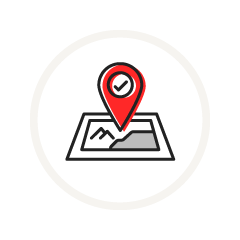
Our base camp trips are perfect if you don’t want to lug a backpack around, or if you'd prefer to camp with a few extra creature comforts. After enjoying daily hikes on front country trails, you’ll return to the same campsite each day equipped with proper toilets, showers, bigger tents and a camp kitchen.

If you’re an adventurous type who also likes sleeping on a real mattress (we don't blame you), our hut-to-hut trips could be for you. You’ll still need to carry your backpack as you hike through the backcountry, but you’ll stay in huts each night that range from basic bunkhouses to comfortable motels depending on the trip.
Our backpacking tours
Hiking and backpacking in yellowstone, 4 days from 1605.
See the best of Yellowstone on an Intrepid small group hiking and camping adventure...
Hiking and Backpacking Yellowstone's Bechler River Traverse
5 days from 2045.
Avoid the crowds and see the best of Southern Yellowstone National Park’s backcountry...
Hiking and Backpacking North Carolina's Appalachian Mountains
3 days from 1070.
Discover great trails, incredible views, spectacular summits and more on a small group...
Our base camp tours
Hiking and camping in zion, 3 days from 1560.
Experience Utah’s most famous national park as a standalone canyon country experience...
Hiking and Camping in Joshua Tree
4 days from 1775.
Experience Joshua Tree’s surreal landscapes, cool oases, and famous Joshua Trees on a 4...
Hiking and Camping in Yellowstone
5 days from 2230.
See the best of this iconic national park on five spectacularly diverse, hand-picked...
Hiking and Camping in Utah
6 days from 2360.
Experience Utah’s most famous national park destinations and see the best of Zion,...
Our hut-to-hut tours
Hike new hampshire's appalachian trail and presidential peaks, 4 days from 1895.
Spend an incredible 4 days hiking the highest mountains in New Hampshire, the...
Highlights of our hiking & backpacking tours
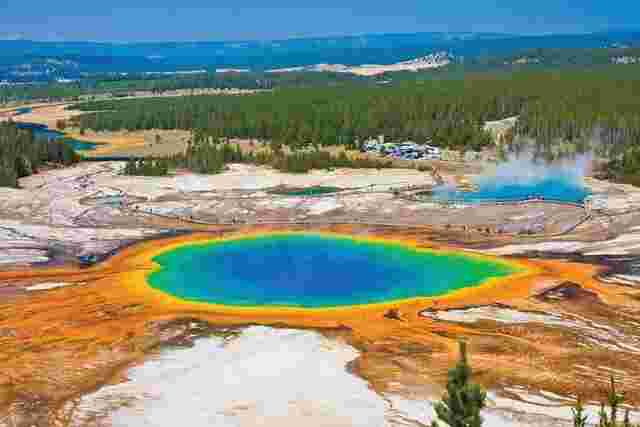
Take in the sights of Yellowstone National Park
Leave the busy roads and noisy sounds of everyday life behind as you embark on an adventure through one of the USA’s most beloved parks. Brimming with epic natural features, Yellowstone National Park boasts landscapes that need to be seen to be believed and luckily for you, you’ll get to see them all on hikes during the day before resting your body and camping out under the stars every night.
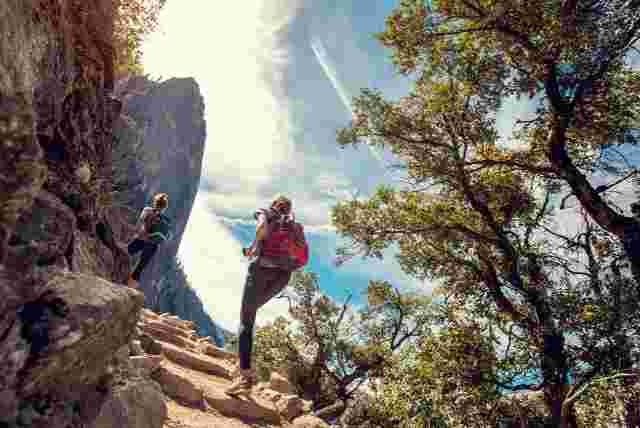
Marvel at the natural wonders in Yosemite
If you’re searching for remarkable sights that’ll give your camera its hardest workout yet, then search no longer – Yosemite National Park’s North Rim offers all that and so much more. Perfect for both outdoor enthusiasts and hardcore hikers, this trail boasts giant waterfalls, majestic peaks, and flower-filled meadows you’re bound to ooh and ahh over. And at night, set up camp, enjoy a hearty meal, and fall asleep under the night sky’s twinkling stars.
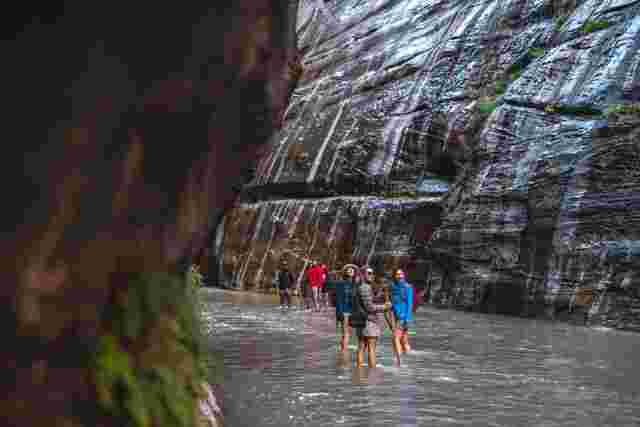
Explore Utah's wild west
Picture this: you wake up to the peaceful sounds of Mother Nature and have your morning coffee surrounded by spring-fed creeks, huge canyons and colourful cliffs. Spend six days hiking in Utah ’s most iconic national parks and watch these otherworldly landscapes come alive. Trek through Bryce Canyon’s awe-inspiring “hoodoos” and natural amphitheatres, wade through the rushing waters of Zion’s slot canyons, and explore the labyrinth of potholes, arches, and grottos in the dreamy Escalante.
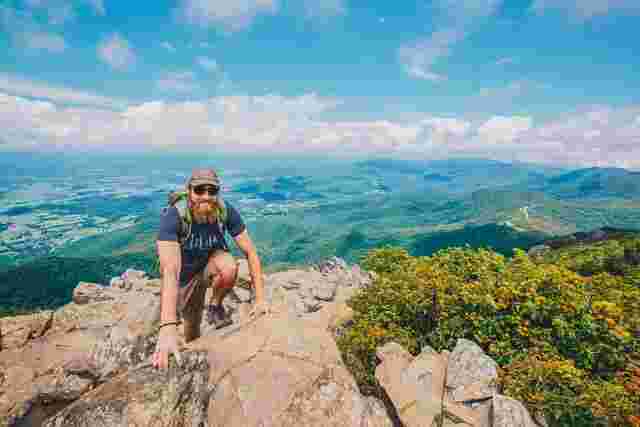
Hike the Appalachian Trail
Explore one of the most beautiful sections of the Appalachian Trail on a three-day backcountry adventure through the Blue Ridge Mountains. You’ll journey deep into the wilderness of the Cradle of Forestry, wind through postcard-perfect grassy meadows and witness the majestic cascades of Looking Glass Falls – maybe jumping in for a swim to cool down. The best part? You’ll camp on the summit of the spectacular Shining Rock and enjoy lunch on huge ledges overlooking the rolling plains of Ivestor Gap.
Popular US National Parks
Our US National Park Tours offer something for all kinds of adventurers, explore our range below.

Yosemite National Park

Yellowstone National Park

Denali National Park

Grand Canyon National Park

Zion National Park

Glacier National Park

Joshua Tree National Park

Badlands National Park

Death Valley National Park

Arches National Park

Olympic National Park

Mount Rainier National Park

Kenai Fjords National Park

Rocky Mountain National Park

Winter hiking and snowshoeing tours

Walking and trekking tours
Our hiking & backpacking tour reviews, essential info & faqs, what's the range of backpacking and hiking trips available.
We offer a wide range of all-inclusive backpacking and hiking tours in some of the USA's best national parks and scenic trails. Apart from getting yourself to the meeting point and bringing your personal items, everything is organised and provided for you including an expert hiking guide, permits and fees, meals, and most camping and hiking gear. Our trips range from base camp tours that include easy to moderate day hikes on front country trails to multi-day backpacking or hut-to-hut adventures in high mountains and backcountry routes.
What do I have to carry when we hike?
On our backpacking and hut-to-hut tours you'll need to carry a backpack that weighs between 25-45 lbs (11-20 kg) depending on the itinerary and season. It'll be loaded will be with your personal items (clothing, camera, toiletries, water bladder, etc), camping gear (tent, sleeping bag, sleeping pad, etc), and a portion of the group's food supplies or camping gear. Base camp tours are a bit different – we'll return to the same campsite each day so you can leave your main bag at camp. You'll still need a small daypack to carry your water bottle, snacks, camera and any other essential items while we're out hiking.
Should I bring/pack anything special?
We'll provide you with camping gear including a daypack, trekking poles, tent, sleeping bag, sleeping pad and pillow. Essentials you'll need to bring from home include a three-litre water bladder or bottle, hiking clothes and boots, headlamp, toiletries and medication, camera and any other personal items you might need. Just remember, it's no fun lugging a really heavy bag around so try to pack as light as possible.
How fit do I need to be to join?
While our range of backpacking and hiking trips differ in difficulty, it is recommended that you have a reasonable level of fitness so that the tour's enjoyable and you can get the most out of your holiday. To do this, try participating in some form of physical activity (such as long walks, running, cycling, etc) at least six weeks out from your trip. It's also a good idea to do some shorter test hikes with a backpack or something similar so you can become comfortable carrying your gear when the trip comes.
To help you choose the trip with the right level of difficulty, our team will forward an assessment form to you at the time of booking, and we will be open to discussing your choice and making suggestions if need be. You won't be confirmed for the trip until your form has been received and reviewed.
What sort of safety precautions are taken?
We value the safety of our customers, staff and fellow travellers very highly so you can rest assured that you'll be safe throughout the duration of your trip. Our leaders are well-trained and experienced (as well as insured) and don't cut corners when it comes to the wellbeing and safety of others. This means we only take well-researched trails and listen to all safety warnings when it comes to changing weather conditions.
Do I need special insurance for backpacking trips?
The short answer is no and yes - you won't need any extra insurance to cover any additional or technical activities that come with a backpacking and hiking trip but you will need to have an insurance policy that covers activities such as hiking and trekking. To make sure you're appropriately covered, we recommend presenting your insurer with the trip's itinerary.
Are backpacking and hiking trips accessible?
Intrepid is committed to making travel widely accessible , regardless of ability or disability. That’s why we do our best to help as many people see the world as possible, regardless of any physical or mental limitations they might have. We’re always happy to talk to travellers with disabilities and see if we can help guide them towards the most suitable itinerary for their needs and where possible, make reasonable adjustments to our itineraries.
Do I need a COVID-19 vaccine to join a backpacking and hiking trip?
Travellers on this particular trip are not required to produce proof of full vaccination against COVID-19. However, any guest who has been in close contact with someone known to have COVID-19, or who develops flu-like symptoms (cough, fever, shortness of breath/difficulty breathing, muscle pain, headache, sore throat, body aches/chills, recent loss of taste or smell), or who tests positive for COVID-19 within 14 days of their scheduled trip will not be allowed to join the trip without a negative COVID-19 test result.
Read more about North America

Apr 18, 2019
How to make the most of 24 hours in....
Atlanta, Georgia, is the birthplace of the civil rights movement, Coca-Cola and…...
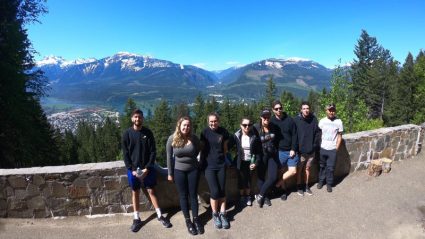
Dec 04, 2018
7 reasons why you should go on a....
You'll learn the infamous art of the moose call, among other things.
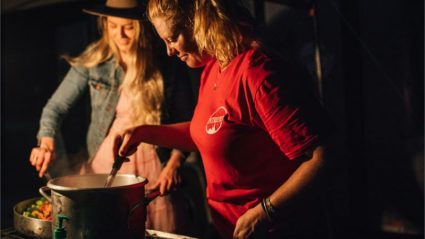
Dec 05, 2019
Vegan vegetarian food intolerances....
Two vegans, one vegetarian, one lactose intolerant and one gluten intolerant...
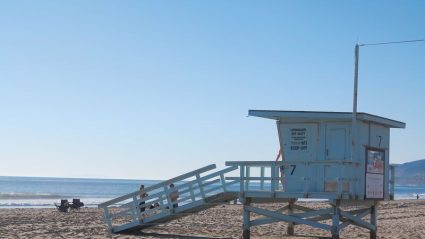
Jan 29, 2024
California or florida which us state....
Sometimes you just need a blog to tell you which US state you have to visit...
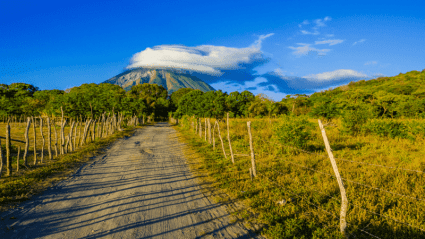
Sep 02, 2022
The top 8 destinations for travel in....
From getting off the beaten track in Romania to witnessing the great wildebeest...
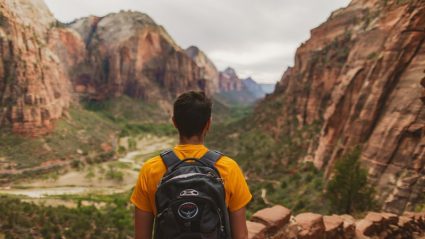
Jun 28, 2022
Off the beaten path: how to explore....
Joining forces with legendary backcountry trekking group, Wildland, Intrepid has...
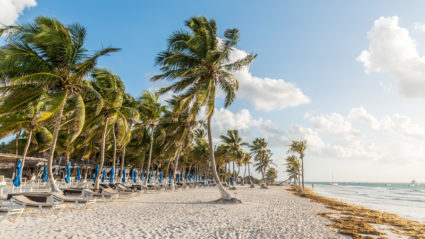
Nov 08, 2018
How to have the ultimate family....
If you’re after a family adventure beyond the gated mega-resorts, here are 5...
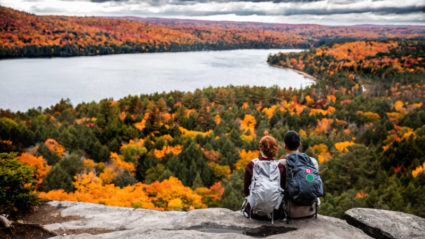
Jul 01, 2017
15 places in canada that will give....
Say the word 'Canada' and it's likely that a desktop background-esque scene...

May 16, 2017
A guide to mérida, mexico’s most....
Many Mexicans agree that Mérida is one of the most beautiful cities in the Yucatán...
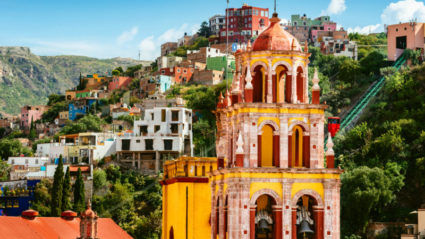
Jun 03, 2017
5 towns in mexico’s highlands to....
Here are five colonial towns in the highlands of Mexico that will make you forget...

Feb 24, 2023
Navigating history, culture and power....
Intrepid traveller Anela Malik raises important questions about Black history and...
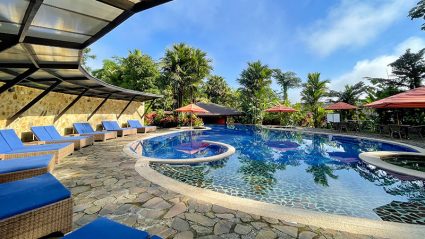
Sep 07, 2022
Travel is back and we just dropped 10....
After two-and-a-bit years of lockdowns, border closures and travel plans being put...
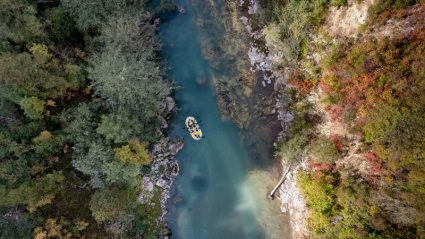
Dec 31, 2022
23 new travel experiences for 2023 .
It’s a new year, and that can only mean one thing: it’s time for another adventure!
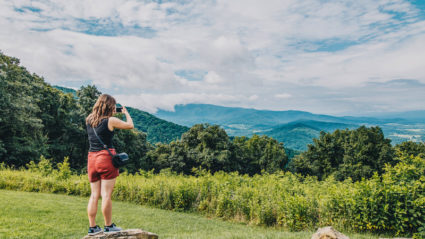
May 11, 2021
Into the wild: top 10 national parks....
From deserts, canyons and mountains, to alpine forests, lakes, tropical reefs,...
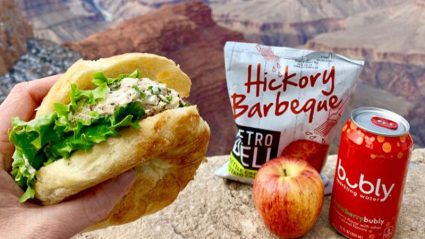
Sep 07, 2021
A feast for the eyes and stomach:....
Looking for somewhere to relax and gobble up the views? Check out some of best...
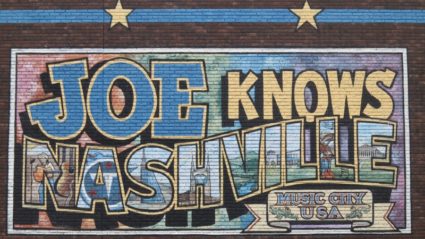
Nov 19, 2017
Ribs, rock ‘n’ roll and raucous times....
Skipping America's Deep South is a big, fat, deep-fried, sugar-coated, bourbon...
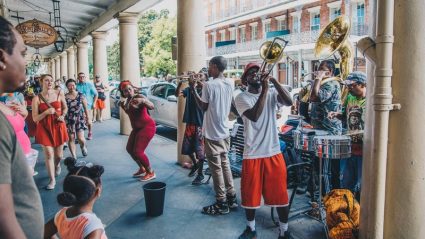
Mar 15, 2022
8 new usa experiences that amplify....
Want to learn Cajun cuisine from the only female-owned African American cooking...
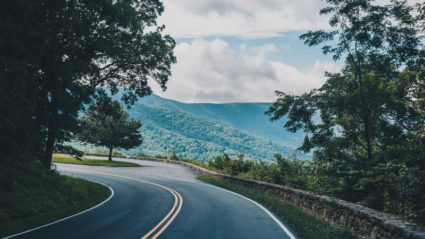
Oct 16, 2018
5 of the usa’s best road trips (and....
We take a look five of the United States’ most iconic road trips, with a guide to...
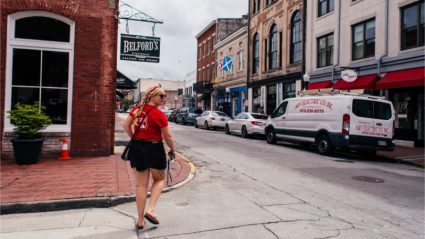
Nov 28, 2019
Southern hospitality is a thing. here....
From Nashville to Savannah and beyond, old school values and charm make the USA's...

Aug 20, 2021
11 amazing things to do in denali....
Denali National Park is packed with adventures to delight and excite travelers of...
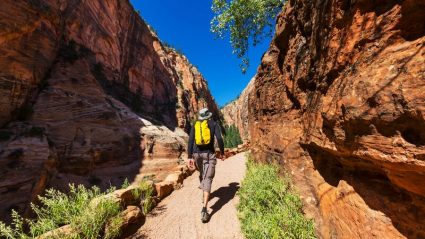
Take a walk on the wild side: 8 of...
Hiking in Zion gives a whole new meaning to walking on the wild side. Check out...
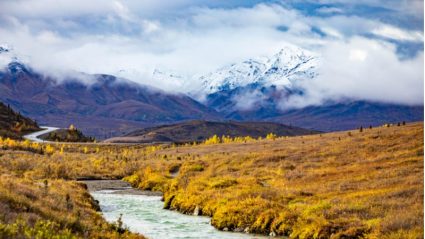
8 incredible hikes in Denali National...
Check out some of the must-do hiking trails for your trip to Denali National Park.
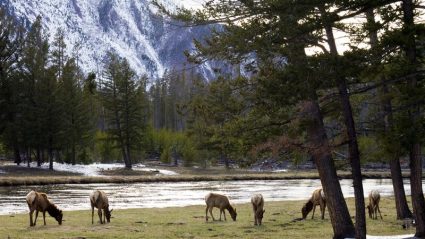
Aug 16, 2021
The 8 best hikes in yellowstone....
Let your curiosity lead the way on one of Yellowstone's iconic hiking trails.
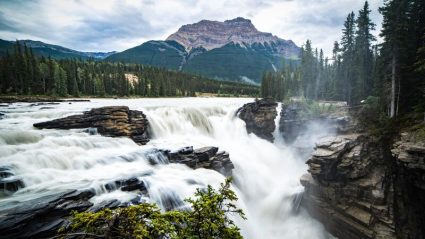
Oct 09, 2022
Canada or alaska which natural....
The easiest decision you've made all year...not.
Backpacking Trips For Solo Travellers
Travel & make new friends!
All accommodation, activities, in-country transport & select meals included on each trip!
- Philippines
- More Countries
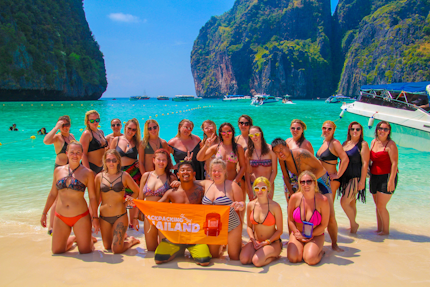
Backpacking Thailand
White-sand beaches, jungle, waterfalls, culture, nightlife, rescued elephants, floating bungalows, and so much more!
- Length 21 Days
- Avg. Age 18-45
- No. Of Activities 30+
- No. Of Meals 24
- Avg. Group Size 5-20
- Operator Backpacking Tours
- Starting Point Bangkok
- Ending Point Bangkok
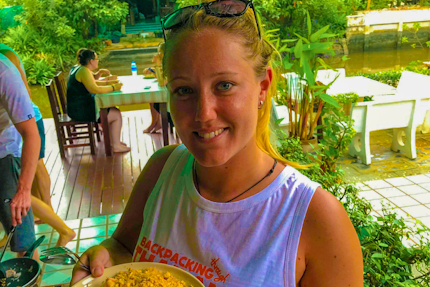
5 STARS ALL THE WAY! I absolutely loved my time on this tour. It was my first time traveling alone and I can say I've met some life long friends from all over the world.
Janet Sabine, Facebook, 25 May 2018

Backpacking Thailand: Island Paradise
Escape to paradise with our 12-day Backpacking Thailand: Paradise Islands tour! Join our thrilling adventure and meet new friends along the way.
- Length 12 Days
- Avg. Age 18-39
- No. Of Activities 15
- No. Of Meals 14
- Avg. Group Size 8 - 25

Volunteer Kindergarten: Thailand
Join our volunteer teaching opportunity in Thailand and make a positive impact while experiencing Thai culture and stunning beaches. Add extra week(s) from a choice of three volunteer programs.
- Length 1-12 Weeks
- Avg. Age 17+
- No. Of Meals 18
- Avg. Group Size 10-40
- Ending Point Hua Hin
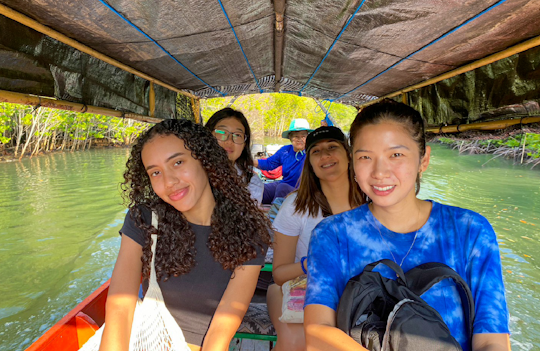
Construction & Renovation: Thailand
Join our Community Construction Program in Hua Hin and experience the thrill of making a real difference in a community! Not only will you be able to participate in a meaningful and impactful project, but you'll also get to explore a beautiful seaside resort city known for its stunning beaches, vibrant night markets, and delicious street food. And after a hard day's work, you'll have plenty of time to relax and bond with your fellow volunteers.
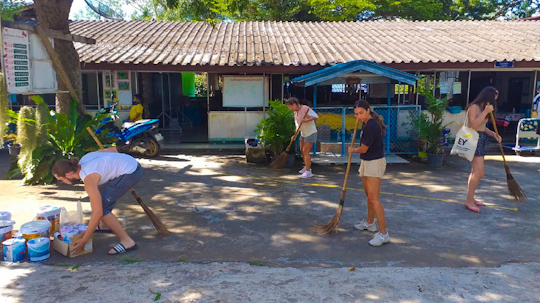
Environmental Conservation: Thailand
Join our Environmental Conservation effort in Hua Hin - a lively fisherman town and popular tourist destination - and be a part of a hands-on effort to protect the mangroves and work alongside local farmers. Get ready to roll up your sleeves and get involved in various tasks, such as preparing the seeds and soil, watering the plants, nursing, and planting the mangroves.

View All Thailand Tours
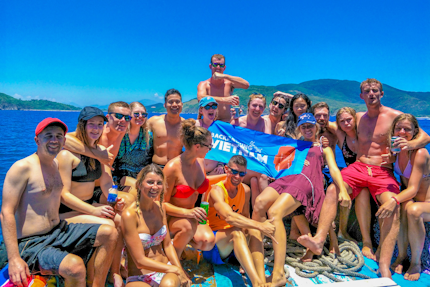
Backpacking Vietnam
Travel over 1,700 kilometres to ten locations - from Halong Bay down to Ho Chi Minh City - on the ultimate Vietnam adventure!
- Length 23 Days
- No. Of Meals 28
- Avg. Group Size 6 - 20
- Starting Point Hanoi
- Ending Point Ho Chi Minh
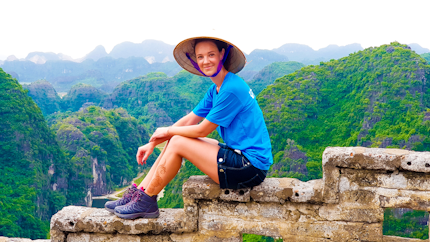
This was such an amazing experience! Still can't believe how much we did in 23 days, 'thank you' do not express how grateful I am, these are memories that will last me a lifetime. If you are considering BTV, go for it!
Anoesjka Myburg, Facebook, 9 Jan 2019

Backpacking Vietnam: Northern Adventures
Travel over 750 kilometres to five locations - from Halong Bay down to Hoi An - on the ultimate Vietnam adventure!
- Length 15 Days
- No. Of Activities 27
- No. Of Meals 20
- Avg. Group Size 5 - 20
- Ending Point Hoi An
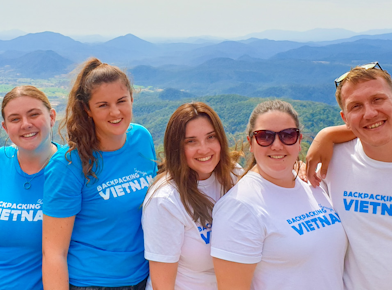
I had amazing time on the Vietnam tour this July, I would highly recommend to anyone thinking of doing this tour, we had so much fun. Once in a lifetime experience!
Aoife, Facebook, 5 January 2023
View All Vietnam Tours
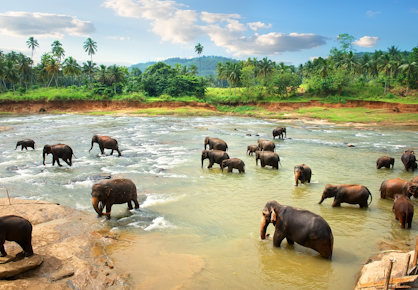
Backpacking Sri Lanka
Experience the best of stunning Sri Lanka with all the usual Backpacking Tours comforts you have come to expect! Sri Lanka is known for its incredible natural beauty, extraordinary biodiversity and miles of unspoiled beaches.
- Avg. Age 20-45
- No. Of Activities 28
- Starting Point Colombo
- Ending Point Colombo

I’ve been on two tours with Backpacking Tours now (Vietnam and Sri Lanka). Both times were two of the best experiences of my life and would recommend it to absolutely anyone.
Heather, Facebook, 3 Mar 2023
View All Sri Lanka Tours
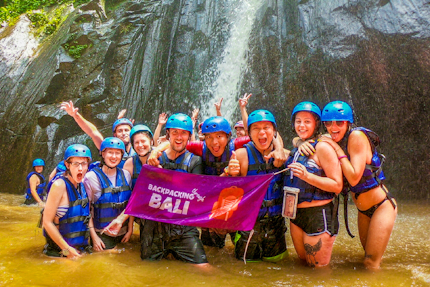
Backpacking Bali
Absolutely epic! Cliff temples in Uluwatu, sunset at Tanah Lot, SUP in Nusa Lembongan, so many waterfalls, snorkel with sea turtles, Gili T beaches and more.
- Length 18 Days
- No. Of Activities 32
- No. Of Meals 23
- Avg. Group Size 5-15
- Starting Point Kuta
- Ending Point Kuta

I can’t recommend this company enough! This is my third tour with backpacking and again it’s a very well organised and hits all the major spots you would want to see in Bali!
Beth Jones, Facebook, 14 Oct 2018

Turtle Conservation: Bali
The Turtle Conservation project is located on the charming island of Nusa Penida. Through this programme, you will contribute to the protection of the turtle population in Nusa Penida.
- Avg. Age All Ages
- Starting Point Denpasar
- Ending Point Nusa Penida
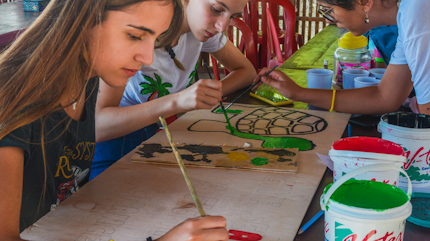
The turtle conservation team in Bali were the absolute best! without them, I would not have enjoyed myself as much as I did, and I feel like I was able to help make a difference. The biggest impact my volunteering trip had on me was the people and culture of Bali, showing me new perspective to life. Do it, best decision I've ever made!
Nicola, New Zealander, 19
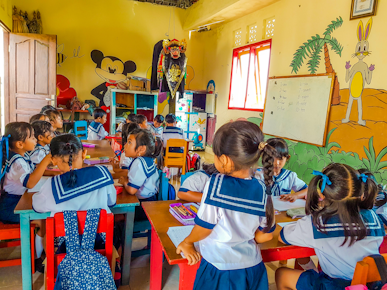
Volunteer Kindergarten: Bali
Work in local kindergartens in Ubud’s surroundings, teaching the children basic English in an informal and fun way!
- Avg. Age 18+
- Ending Point Ubud
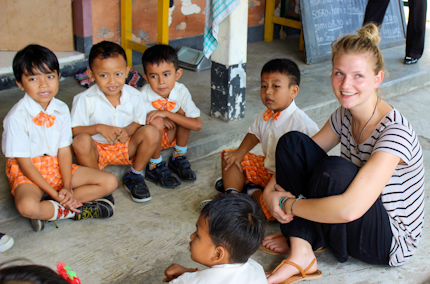
It might seem scary but you will meet so many new and amazing people, it is an experience you do not want to miss out on. The local team were the most genuine and amazing people, very helpful and there for you if you need literally anything. Volunteering has opened my eyes in so many aspects. I would love to do it again.
Rachel Dutrieux, Netherlands, 21
View All Bali Tours
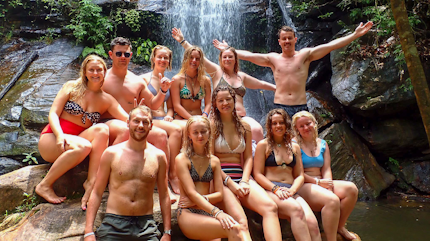
Backpacking Philippines
The Philippines is truly an unbeatable destination, if you’re into authentic experiences in the world’s most incredible tropical islands, then this is the trip for you.
- Length 14 Days
- No. Of Activities 12
- No. Of Meals 21
- Avg. Group Size 8-22
- Operator Trusted Partner
- Starting Point Manila
- Ending Point Coron
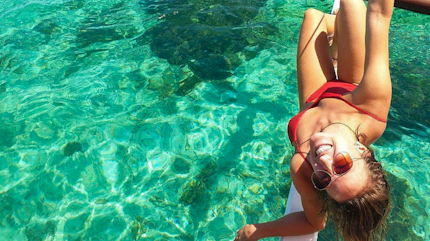
The organization of the trip was super good. The trip has been very active - we have seen and experienced a lot. Nevertheless, we could pull back and do our own thing if we wanted to. I would like to give special praise to our group leader Mike Mazurkiewicz. He was very well organized, always very nice and polite and also very interesting as a personality. I can definitely recommend this trip!
Kristina, March 3, 2023
View All Philippines Tours
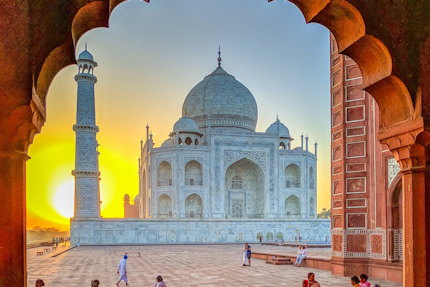
Backpacking India
Uncover India's magic! Experience Delhi and Rajasthan's vibrant culture, awe-inspiring architecture, exotic foods, and desert adventures. It's a journey bursting with unforgettable memories and experiences!
- No. Of Activities 20+
- No. Of Meals 19
- Avg. Group Size 8 - 22
- Starting Point Delhi
- Ending Point Delhi

Such an amazing trip and experience! If you have ever thought about visiting India, this is a great way to do it.
Lydia Eales, 24, Canada
View All India Tours
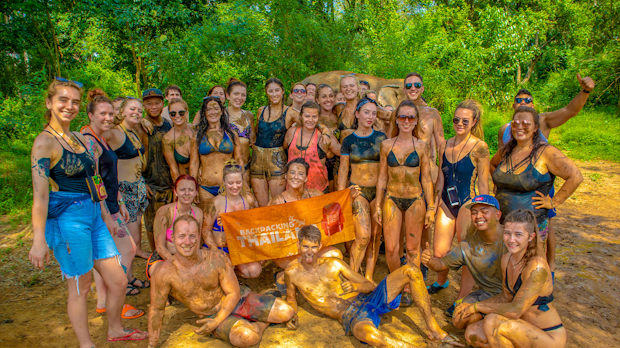
Book with spread payments
Sleep & travel in comfort
Local, English speaking guides
About Backpacking Tours
We started in 2013 with a 21-day "Backpacking Through Thailand" tour. Today, we offer many group tours and volunteer programs around the world!
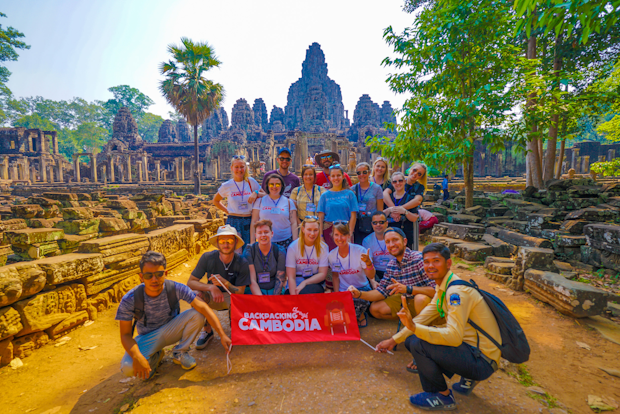
Fully licensed tour operator
Learn More!
10 picture-perfect spots in thailand for your instagram feed, discover the best countries to visit in june, july, and august, long-haul flight tips.
See All Articles
Read all reviews here .

9 Stunning Backpacking Trips in the U.S. You Should Know About
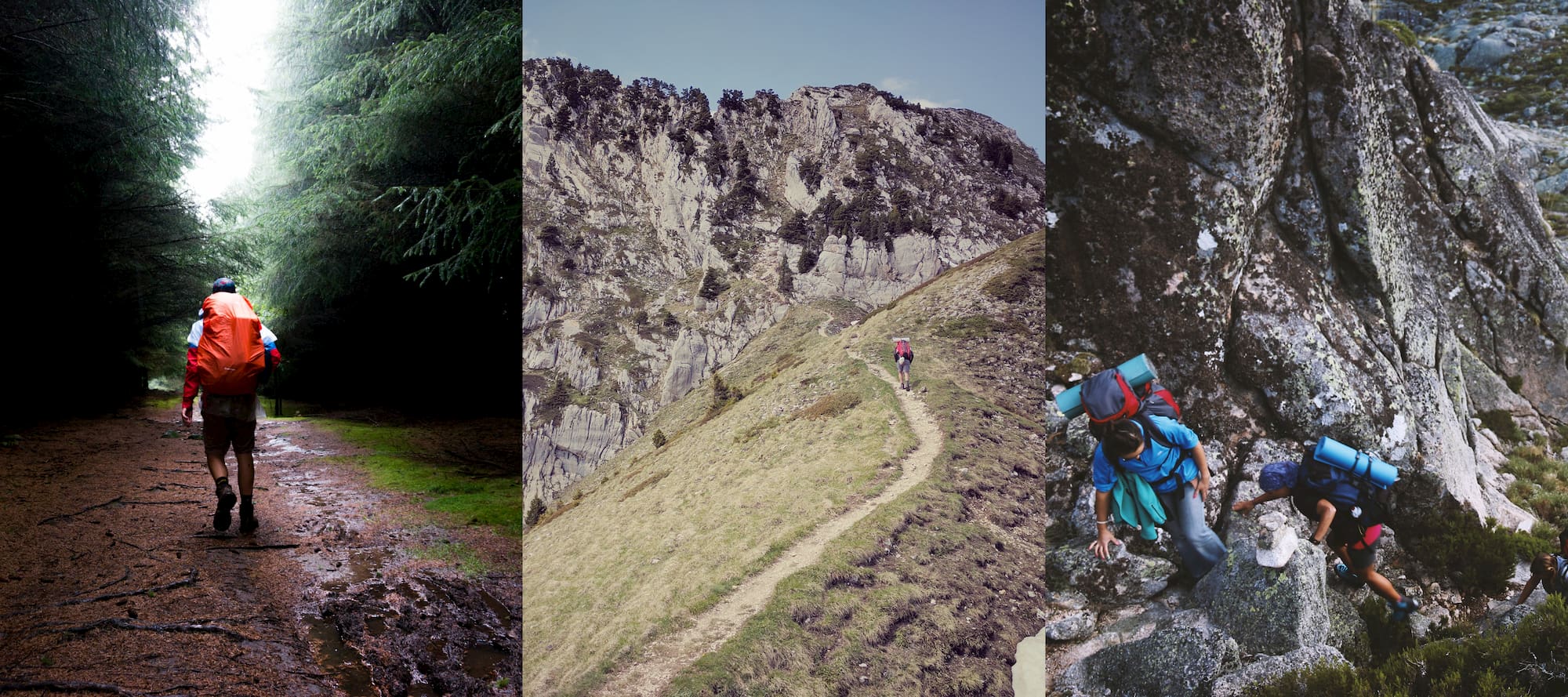
This article on the best backpacking trips in the U.S. is brought to you by Gregory , the makers of hiking backpacks that are tough enough for day hikes, weekend trips and thru-hiking adventures.
Backpack camping—an approach that involves hiking to your campsite, usually carrying a hefty backpack of gear with you—isn’t for everyone. The KOA North American Camping Report of 2019 supports that statement; while camping popularity in the U.S. has overall reached new heights among a wider audience of households in recent years, those new campers are generally drawn to car camping, glamping, and the more convenient destinations. Which means that backpacking continues to offer an escape from the crowds.
Venture out on a backcountry trail in any crowded national park and you’ll find the crowds all but disappear, just a few miles in. If you bring your camping supplies with you, a secluded, quiet camping experience awaits you in the wilderness.
The best backpacking trips in the U.S. span a range of experience levels. Once you’ve collected your gear (with some help from our backpacking checklist ), it’s time to pick a trail.
9 Bucket List Backpacking Trips in the U.S.

Photo Courtesy of William Saunders
This list of backpacking trips in the U.S. offer a range of accessibility depending on your skills and experience. No matter the experience level required, they’re all stunning and enjoyable. Researching this backpacking resource definitely made us want to get away from our computers and hit all of these trails.
1. The Lost Coast Trail —Northern California
Length: 24 miles Elevation Change: 1,542 feet Days: 2-4 Trailheads: Mattole Beach, Black Sands Beach
California’s Golden Coast gets visitors galore, with hotspots mostly south of the Bay Area. But head north, beyond the hillside mansions where the famous Pacific Coast Highway disconnects from the coastline, and you’ll find the Lost Coast Trail along the state’s King Range National Conservation Area. As a wilderness trail along some of the state’s rockiest beach terrain, this backpacking trip is relatively short, but the rock scrambles and sand dunes along the way make challenge and rewarding option for beginners.
Backpacking this trail requires an overnight permit from the Bureau of Land Management, available online from Recreation.gov. The trail is best done via a shuttle service between the two trailheads, as either route is point-to-point.
2. The North Coast Route —Olympic National Park,Washington
Length: 20 miles Elevation Change: 200 feet Days: 2-4 Trailheads: Rialto Beach, Ozette Campground
Positioned along the coastal portion of Washington’s Olympic National Park, this 20-mile backpacking trail is an ideal entry point for inexperienced backpackers with a penchant for seaside views. Backpackers will find a relatively flat shoreline and fair weather seasonally along this trail, ideal for a long weekend backpacking trip on the Olympic Peninsula. With one of the lowest elevation gains on this list, hikers looking to test their distance-per-day will find a perfect path ahead.
Camping along the trail is done at established campgrounds between the trailheads, and no permit is needed for the hike itself. Keep your eyes peeled for tidepools teeming with life, as much of the coast’s rocky shore plays host to underwater life.
3. Lake Aloha Trail —Central California
Length: 12 miles Elevation Change: 1,873 feet Days: 2-3 Trailheads: Echo Lake Trailhead
The Lake Aloha trail, on the southern end of California’s Lake Tahoe, is seemingly custom built for entry-level backpackers interested in a postcard-worthy view. A hike along this 12-mile loop trail takes you along a number of alpine lakes in the Desolation Wilderness, and brings you up 1,800 feet in total. Take a leisurely pace to make the incline portion much easier, and after a long sweaty hike, take a swim in Lake Aloha, where there’s dispersed camping along a ridge nearby.
Since this is one of the best backpacking trips in the U.S., snagging a reservation for camping in the area can be tough—look to plan this trip early in the off-season, and expect to check online regularly for openings. Campfires are never allowed in the Desolation Wilderness, and campers should check out safety tips from the Lake Tahoe Basin Management Unit .

The Timberline Trail
4. Mount Sterling Loop Trail (Via Low Gap) —Great Smoky Mountains National Park, Tennessee
Length: 28.5 miles Elevation Change: 8,110 feet Days: 4-5 Trailheads: Low Gap Trailhead, Big Creek Trailhead
Situated in the country’s most visited national park, the Mount Sterling Loop Trail offers an intermediate-level backpacking trip to the peak of one of the tallest points in the park. Hike from the Low Gap trailhead in Crosby, NC and pass through old growth forests—crossing state lines into Tennessee on your way. You’ll follow the Big Creek to the summit of Mount Sterling, where you’ll come across a firetower, built during the 1930s by the Civilian Conservation Corps—perfect for getting sweeping views of the misty mountains. Continue on from the summit and you’ll complete a loop around the mountain, circling back to the Low Gap Trailhead. The total 8,000+ elevation gain is subtle on the majority of the trail, although some points climb sharply via switchbacks as you begin to circle the mountain.
As part of the Great Smoky Mountains National Park , backcountry camping on this trail requires a backcountry permit from the park office, alone with reservations made in advance for campgrounds/shelters along the way. More information on reservations and permits can be found from the park’s Backcountry Office at 865-436-1297.
5. Timberline Trail —Mount Hood National Forest, Oregon
Length: 38.3 miles Elevation Change: 9,000 feet Days: 4-5 Trailheads: Timberline Lodge
Mount Hood is one of Oregon’s Seven Wonders, an active volcano just about an hour outside of Portland. While many make a point to visit the mountain’s cozy Timberline Lodge, backpackers looking for a more scenic view of this monolith can venture out on the Timberline Trail which circles the mountain. Start from the parking lot of Timberline Lodge and head east or west on the trail to get started; you’ll traverse roughly 9,000 feet of elevation change over about four days. The loop will circle you back to Timberline Lodge, where you should relax apres-hike with a warm drink indoors.
This trail involves a decent amount of trail merges, so be careful when navigating that you don’t make a wrong turn on to various off-shoots. The Timberline Trail can be dangerous when inclement weather is present, as with any instance of high-elevation hiking, you should feel confident that your backpacking skills match the worst weather scenarios you might face. No permits are needed for the hike.
6. Cottonwood Marble Canyon Loop Trail —Death Valley National Park, California
Length: 26-28 miles Elevation Change: 5,613 feet Days: 3 Trailheads: Stovepipe Wells
With terrain and scenery pulled straight from Mars, hiking around Death Valley National Park (or the Mojave desert in general) is as interesting as it is intense. The Cottonwood-Marble Canyon Loop Trail takes backpackers through a dry and stark terrain, and requires more planning than a typical backpacking trip. The trail, running close to 30 miles in a loop, will connect from the Stovepipe Wells trailhead, and can take about 3 days. As with most desert backpacking, you must plan your trip around water resources—this trail offers a few natural streams at some campsites but water is scarce for the majority of the hike. Along with plenty of water, be sure to bring a water filter to refill when available.
Getting to the trailhead requires a 4WD vehicle at all times of the year, but no pre-planning for a permit is needed. Permits are available for free at visitor contact stations across the park. The challenge of this trail lies mainly in the difficult conditions of the desert, so be sure to read Death Valley National Park’s tips on planning this hike in advance.
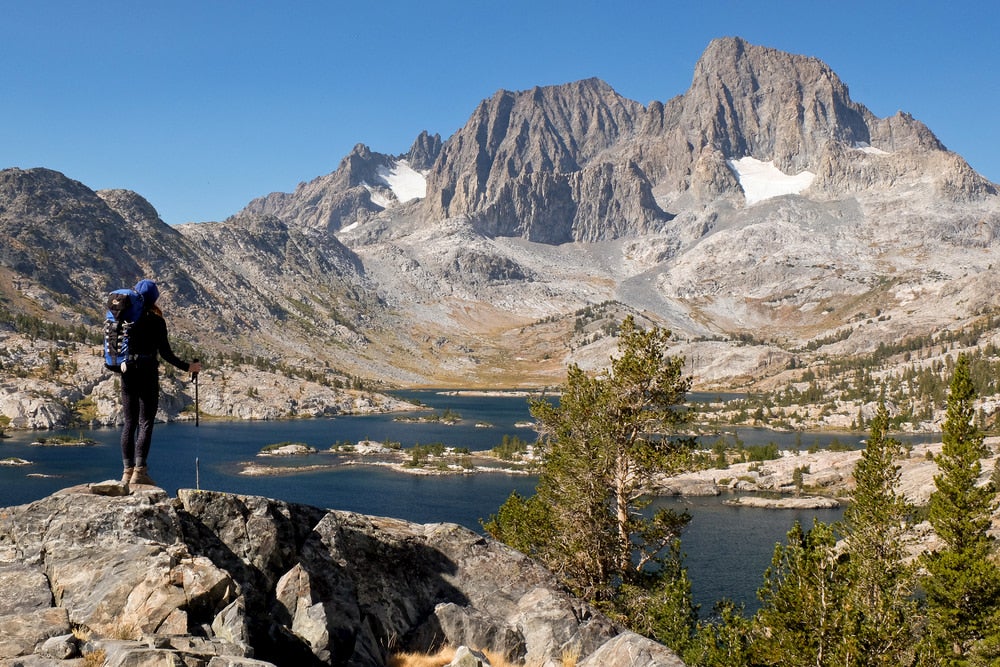
The John Muir Trail
7. The John Muir Trail —California
Length: 221 Miles Elevation Change: cumulative 47,000 feet Days: 20-30 Trailheads: (Southbound) Happy Isles, Sunrise Lakes, Glacier Point, Lyell Canyon
Cutting more than 200 miles through central California’s Sierra Nevada mountains, the John Muir Trail is as legendary as it is scenic. Plan for close to a month of hiking, camping, and exploring part of the state’s rocky, snow-spotted terrain, with an elevation gain more than 1.5 times the height of Mount Everest.
Getting yourself a backpacking permit for the John Muir Trail might be one of the hardest parts of this trip. Hikers should plan to enter the online lottery system as early as possible, about 24 weeks before your planned trip, or possible chance a first-come, first-served permit available from the ranger station. As well, hikers should plan out resupply stops at certain campsites and vantage points along the way.
8. The Wonderland Trail —Mount Rainier National Park, Washington
Length: 93 miles Elevation Change: cumulative 22,000 feet Days: 12-14 Trailheads: Fryingpan Creek Trailhead
With so many amazing mountains to climb and trails to backpack in the Pacific Northwest, it’s hard to think there could be one trail that stands above the rest. At least in elevation, the Wonderland Trail around Washington’s Mount Rainier does just that, circling the PNW’s only mountain over 14,000 feet.
The trail itself isn’t as lengthy as other advanced backpacking trips, but serves as a short-but-tough alternative to many other trails. Climbing over 22,000 feet in cumulative elevation gain along the Wonderland Trail, you’ll enjoy dense evergreen forests and snowy peaks year-round.
The trail’s high elevation is a serious consideration as thin air can wear on hikers who aren’t used to these conditions. Take caution when beginning and ending the trip, as acclimation might be necessary for a comfortable hike. While specific permits aren’t required to thru-hike the trail, a general wilderness permit is required for backcountry camping along the way.
9. The Long Trail —Vermont
Length: 272 miles Elevation Change: cumulative 69,000 feet Days: 20-30 Trailheads: Appalachian Trail Vermont/Massachusetts, Journey’s End Road
While it may not rival some of the more scenic trails in the western U.S., Vermont’s Long Trail offers hikers a look at a stunning variety of nature along one of the greenest states east of the Mississippi River. Stretching 272 miles from the southern border with Massachusetts to the Canadian border to the north, the oldest thru-hiking trail in the United States spares no view of the Green Mountain State throughout. What this hike lacks in dramatic views akin to the western U.S., it makes up for in greenery and ease‚ with a relatively balanced elevation incline throughout. While trail conditions can get muddy starting in the late summer and early fall, hiking through the New England fall foliage is one of the most popular attractions for the backpacking trip. Finishing the trail from north to south or south to north earns you the title of “End-to-Ender,” a boast-worthy epithet you can share at the breweries along the trail .
Planning for this hike is pretty simple; no permits are required for hiking or camping along the way. The Green Mountain Club has maintained the trail since its establishment in 1930, and offer tips and guidebooks online and in print for hikers planning ahead.
This post was brought to you by our pals at Gregory .

From small day hiking backpacks to top-of-the-line backpacking backpacks — Gregory has you covered!
Related Campgrounds:
- Clear Lake Campground , Mount Hood National Forest, OR
- Tahoe Valley Campground , South Lake Tahoe, CA
- New Melones Lake Camping , CA
- Sly Park Campground , Pollock Pines, CA
Popular Articles:
- Get the Latest 2023 Camping Travel Trends
- How To Find Free Camping in National Forests
- The Checklist Every First Time RVer Needs
- Find Free Camping With The Dyrt Map Layers
- The Ulimate Boondocking Guide To Free Camping
- Everything You Need To Know About Wifi For Your RV
- 7 of The Best Overland Routes in North America
- 14 Wilderness Survival Tools You Should Have in The Backcountry
- Here's What To Add To Your Primitive Camping Checklist
Kevin Johnson
Kevin is the Assistant Editor for The Dyrt, with bylines in National Geographic Traveler and Atlas Obscura. Although originally from the swamps of Washington, D.C., he's now based in the trees of Portland. He's been interested in geography and travel since seeing his first map as a kid, and is now working toward seeing it all in person. You can find him exploring the coastal beaches or a record store in his free time.
More Articles

7 Coffee Gear Essentials for Campers Who Need Their Caffeine (Like, Now)
On my daily commute to The Dyrt’s office in Portland, Oregon, I find myself passing five coffee shops within a 15-minute bike ride. Portland is…

Pickleball Has Become a Favorite Sport at RV Parks Across the Country
This article is brought to you by Liquid IV, which is the perfect addition to your pre- or post- workout routine. Get all the hydration…

- Backpacking Group Tours
- Flashpacking Group Tours
- Premium Group Tours
- All Group Tours
- Get a Quote
- Destinations
- Sustainability
- Gift Vouchers
- Educational Trips
Europe Trip Packages
Backpacking europe made easy.
Whether you dream of eating gelato on sun-soaked Italian piazzas, exploring the cobbled streets of Prague or seeing the lights of Paris, backpacking through Europe has to be on everyone’s bucket list.
But planning your Europe trip itinerary can be a minefield. There are so many things to consider: how to get around , where to stay , which destinations to include … and that’s before you’ve even considered what to do when you get there!
Coach tours can be an easy option, but travelling with a massive group can make your experience less authentic – it’s definitely not for everyone.
Want to plan your Europe backpacking trip with minimal stress , but without jumping on board a hop-on hop-off bus? We might just have a solution for you!
From self-guided European routes with all tickets and accommodation included, to fully guided small group trips to Europe , we’ve got a range of options that could be a great compromise. Check out our options below, read reviews or get in touch to find out more!
Self-Guided Europe Trip Packages
Pick from our popular routes or create your very own custom route . Just tell us where you want to go and when, and we’ll sort out the rest. We don’t prescribe activities or set times; we know each traveller has a different idea of what makes the perfect Euroventure:
“The team at Euroventure was outstanding! Not only were they knowledgeable and helpful, but they were always quick to respond, very accommodating, and made every part of our trip personal and meaningful. Highly recommend Euroventure and would definitely book with them again.” – Dannah
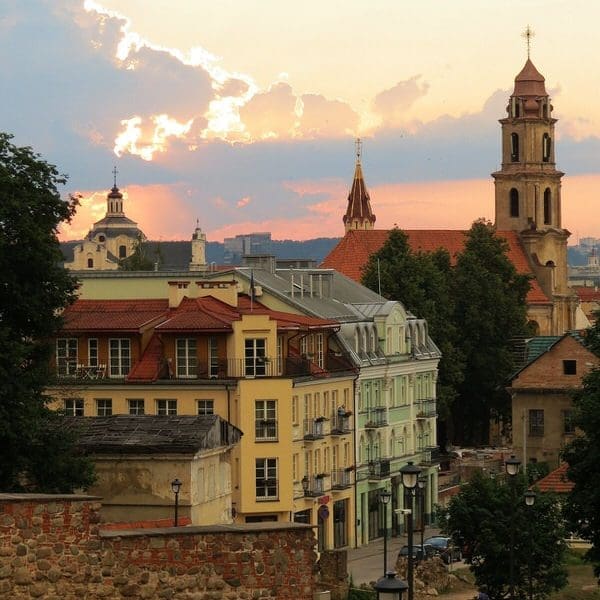
Group Trips to Europe
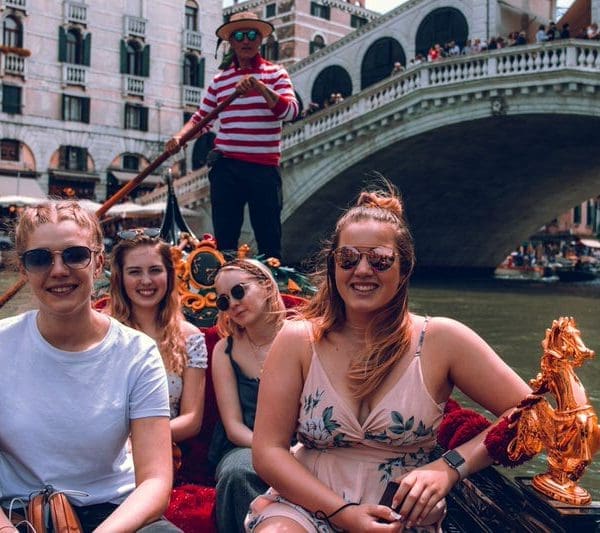
Join one of our backpacking tours for 18-30-somethings . You’ll travel with like-minded backpackers and a knowledgeable tour leader in a small group of up to 20 people, allowing you to experience a more authentic side to each country. Travelling safely on trains, buses and ferries like a native, you’ll get a unique insight into local culture:
“I went on the 2 week Central Europe group tour and it was honestly one of the best experiences of my life. We went to Amsterdam, Berlin, Prague, Vienna and Venice. The included activities in each city were amazing!” – Lauren
Popular Set Trips

Le Grand Tour: Puy du Fou

From Paris to Berlin: 1 Week
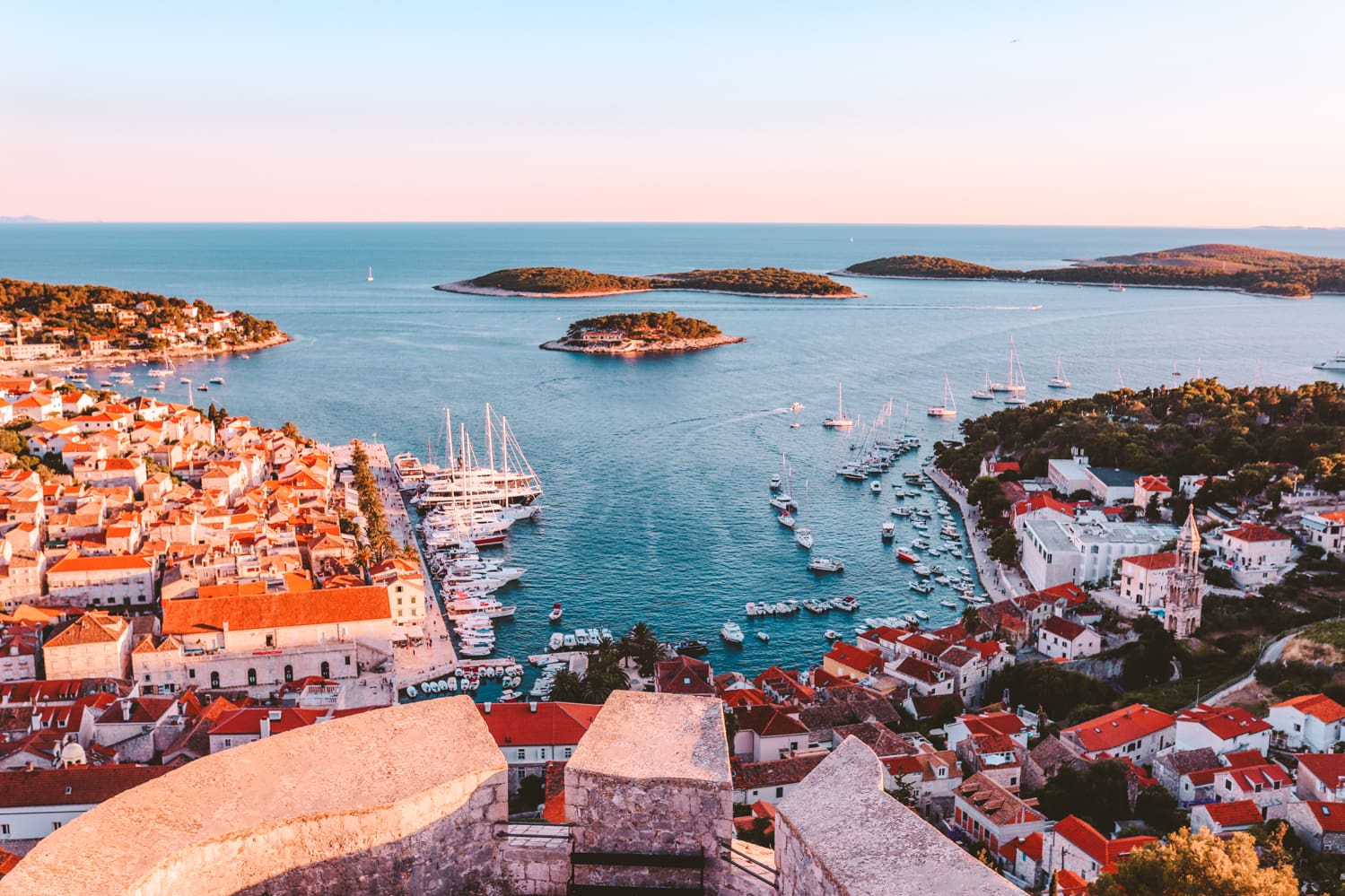
Islandbound: 2 Weeks
Popular group tours.
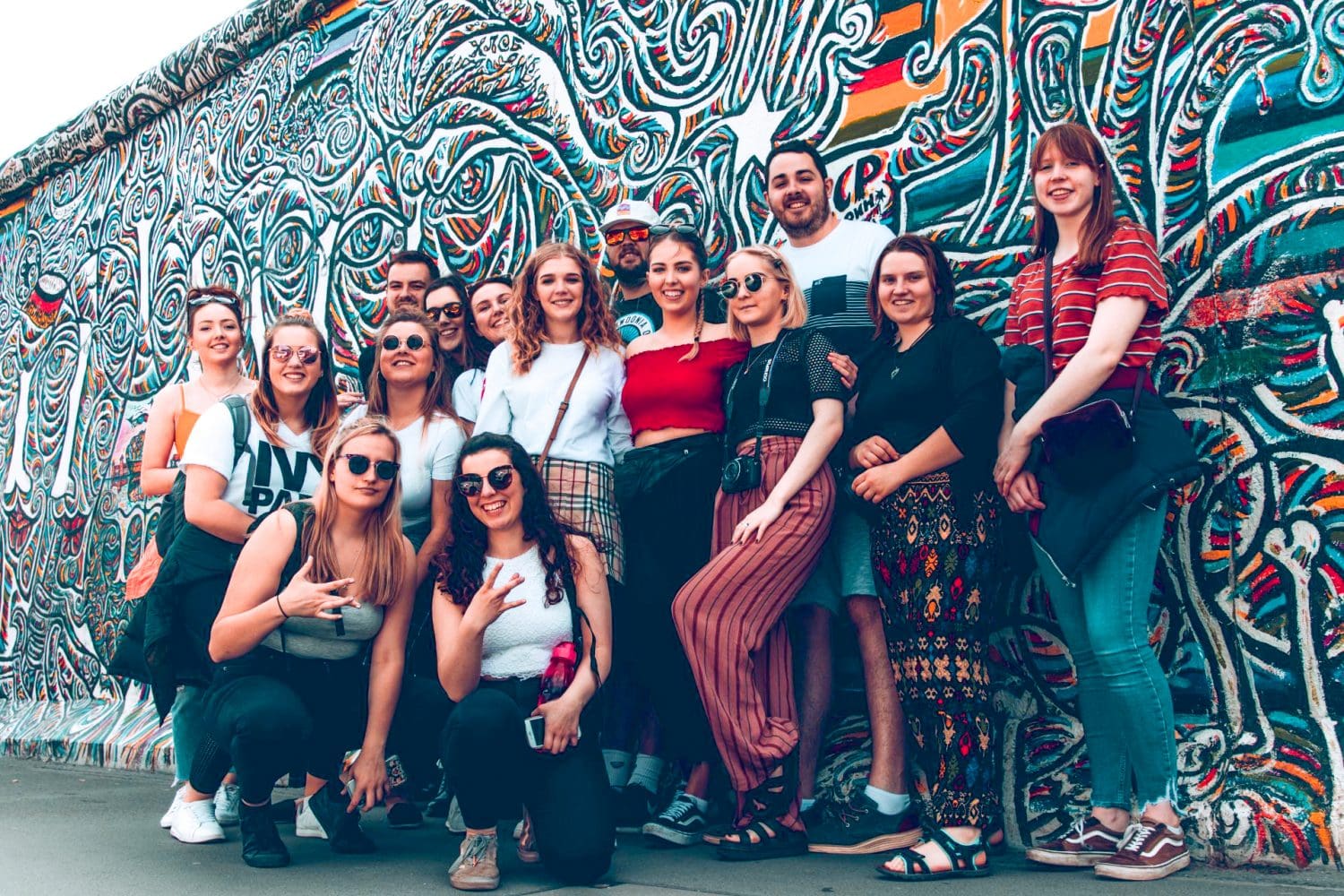
Whole of Europe Group Tour: 4 Weeks
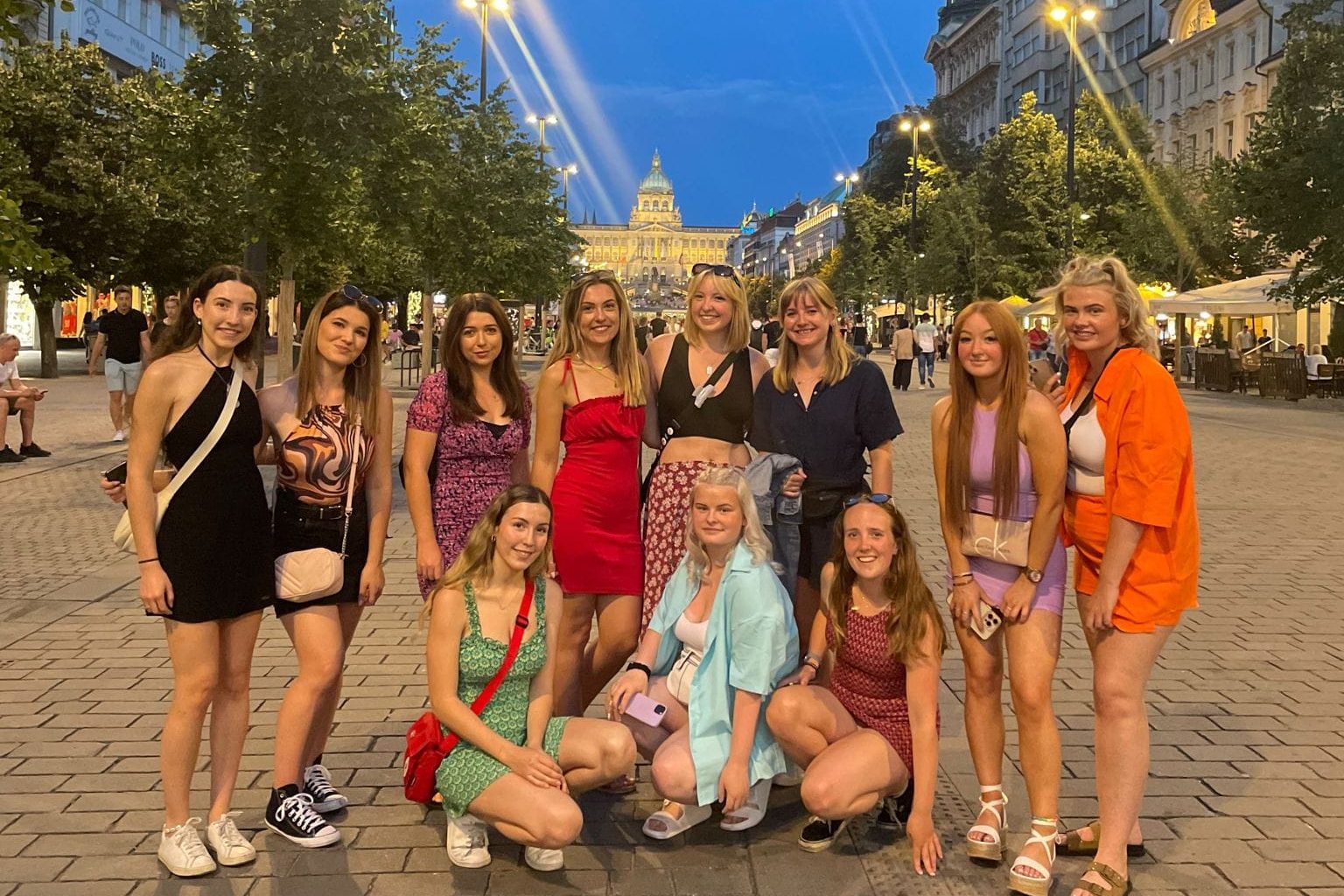
Girls on Tour: Central Europe
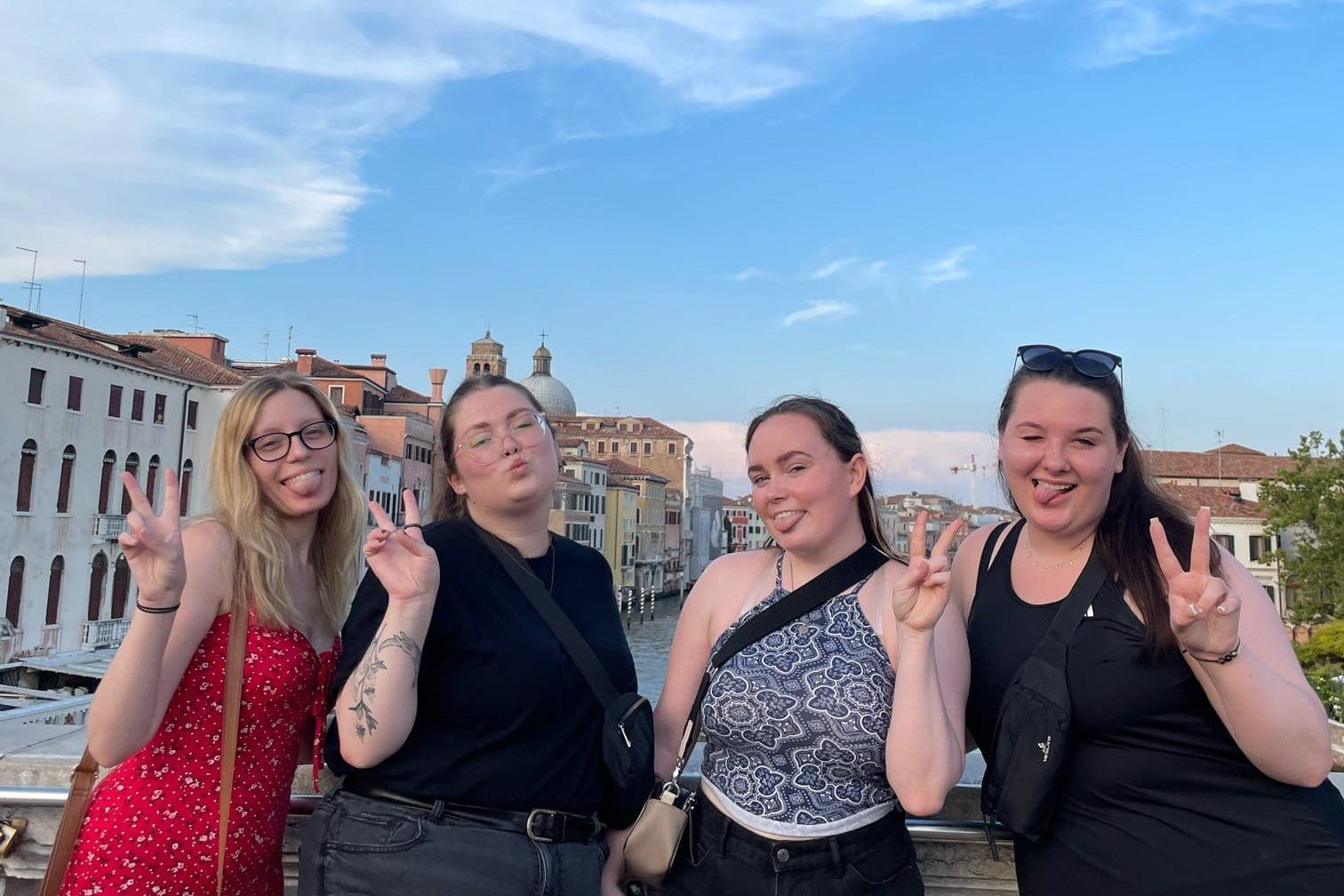
Girls on Tour: Western Europe
WhatsApp us
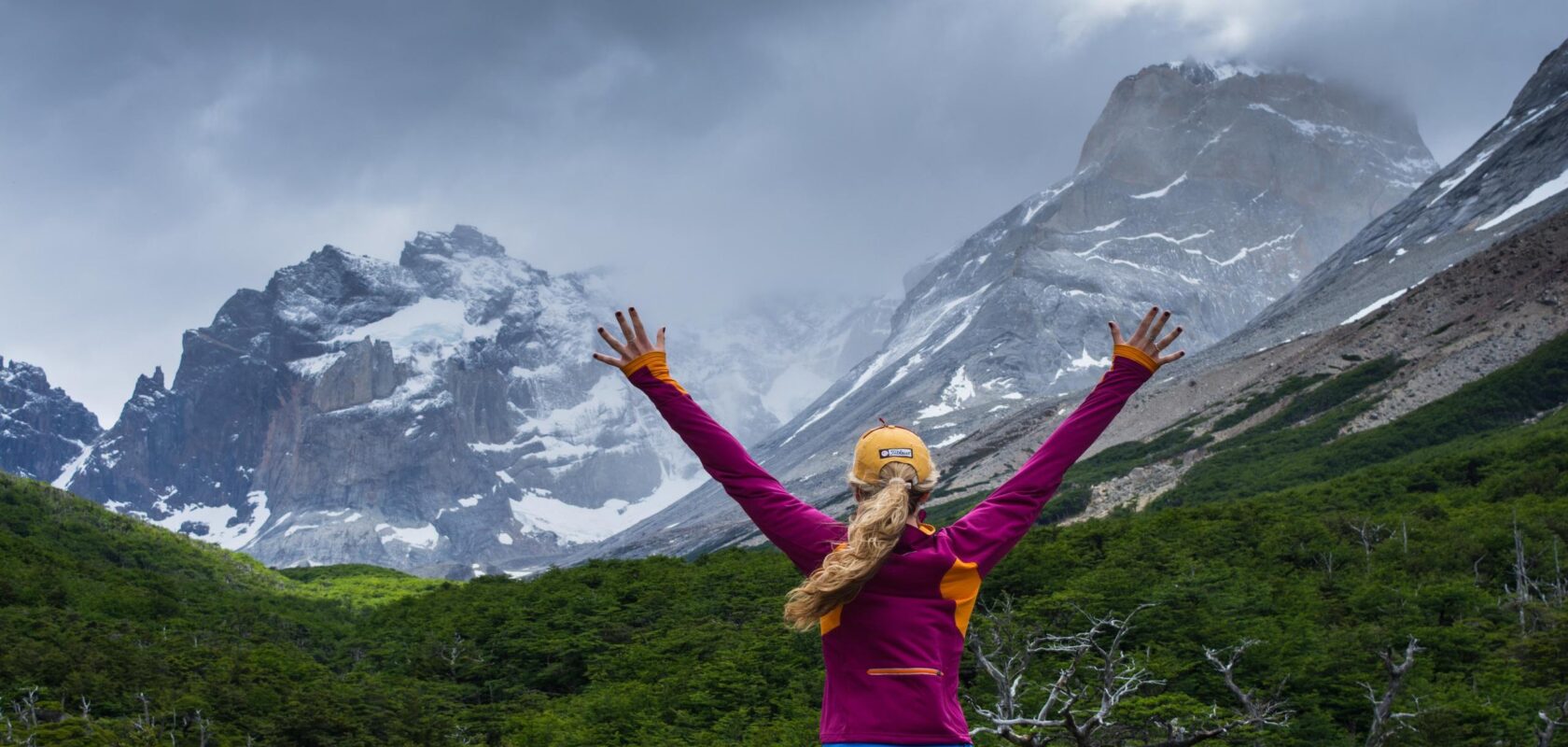
Hiking Trips
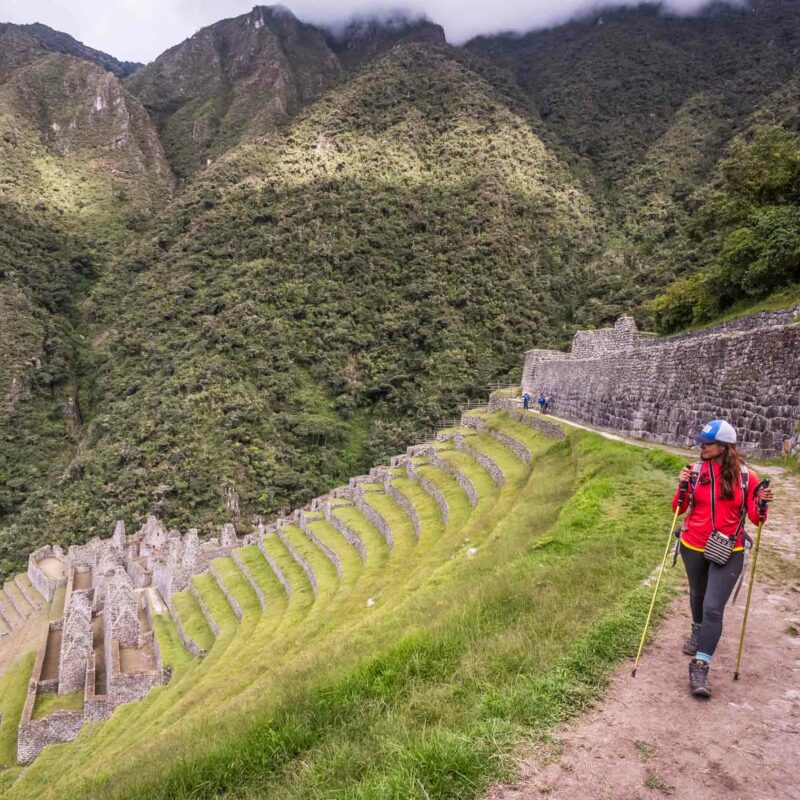
Guided Hiking Adventures
Hiking has always been an essential element of the OARS experience—we’ve been sharing incredible hikes in remote river canyons with our guests since 1969. We’ve since combined our love of hiking with what we do best—guiding—and have established a full series of guided hiking tours.
Designed for our travelers who regularly hike, run, bike, and lead an active lifestyle, OARS-guided hiking trips are thoughtfully designed to meet the needs and interests of our travelers while featuring the very best a region has to offer with local, knowledgeable guides. And whether it’s a hiking-intensive rafting trip through Canyonlands National Park or a lodge-to-lodge trek in Peru, you’ll find all the creature comforts and delicious meals you’ve come to expect on every OARS adventure.
Join us on one of our unique hiking tours and we’ll show you the unforgettable nature of an active OARS vacation.
Find Your Perfect Trip
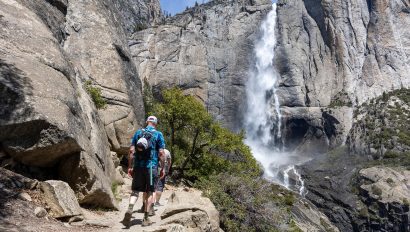
Yosemite Hiker
Location: California Adventure Level: Challenging Minimum Age: 12
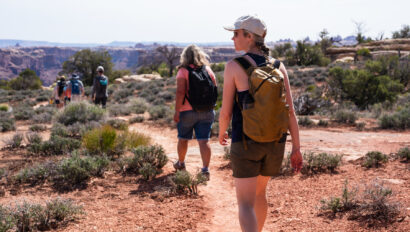
Stillwater & Cataract Canyon Hiker
Location: Utah Adventure Level: Moderately Challenging Minimum Age: 12
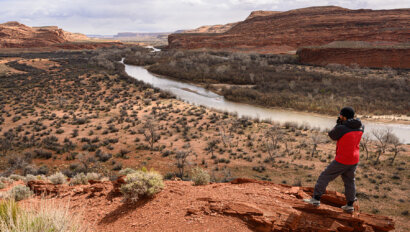
San Juan River Hiker
Location: Utah Adventure Level: Moderate Minimum Age: 12
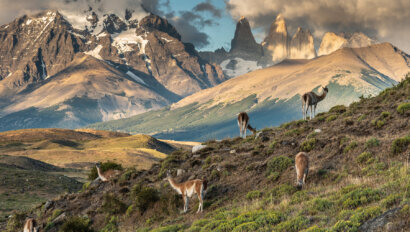
Patagonia Wildlife Safari
Location: Patagonia, Chile Adventure Level: Moderate Minimum Age: 6 (10 – 12 for hiking)
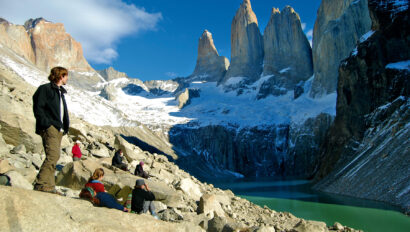
Patagonia Hiking: Torres del Paine W Trek
Location: Patagonia, Chile Adventure Level: Moderately Challenging Minimum Age: 13
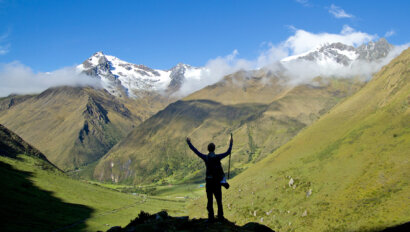
Mystical Peru Lodge Trek
Location: Machu Picchu, Peru Adventure Level: Challenging Minimum Age: 12
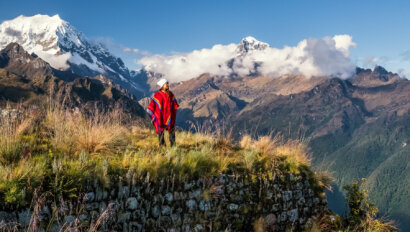
Inca Trail Trekking
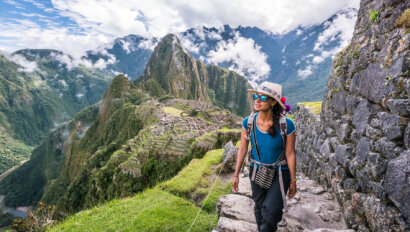

Machu Picchu Hiker
Location: Machu Picchu, Peru Adventure Level: Moderate Minimum Age: 10
Specialty Trips
Yampa River Natural History & Hiking Adventure – 5 Days
Join OARS and discover the natural history of the Yampa River on this rafting and hiking adventure with award-winning author Dr. Patrick Tierney
Colorado & Utah
May 20, 2024 – May 24, 2024
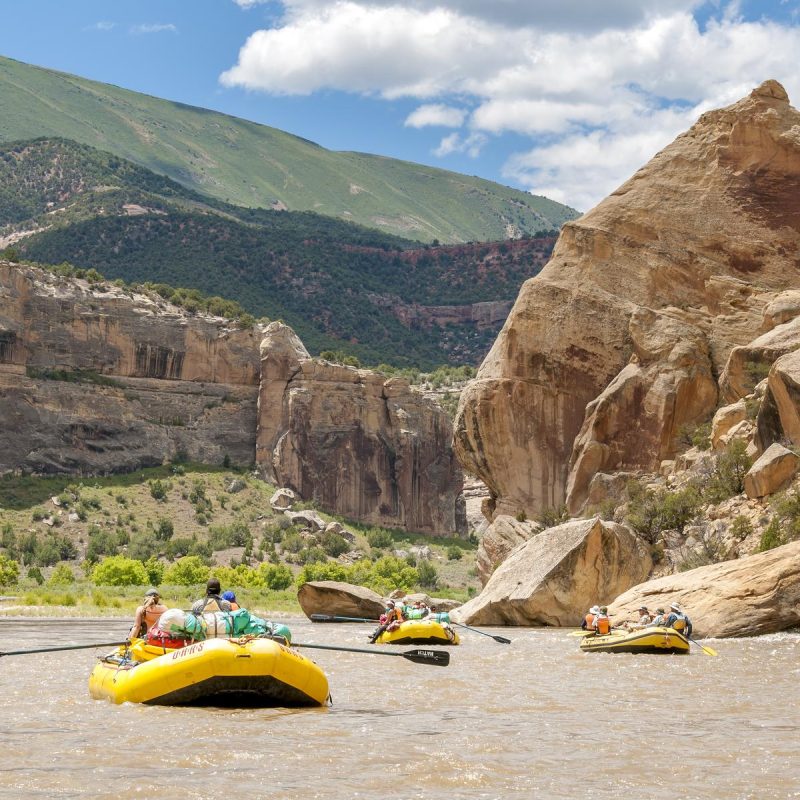
Desolation Canyon Hiker – 6 Days
Discover the beauty of Desolation Canyon on this combination Green River rafting and Utah hiking adventure with OARS
September 14, 2024 – September 19, 2024
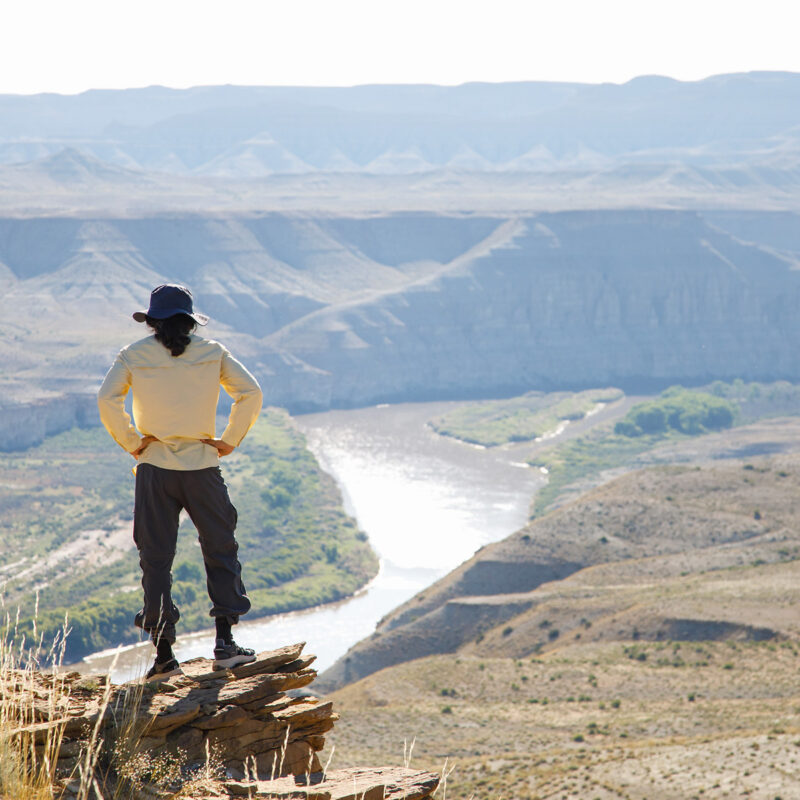
Middle Fork of the Salmon River Hiker – 6 Days
Discover the beauty of Idaho on this combination Middle Fork of the Salmon River rafting and hiking adventure with OARS
June 6, 2025 – June 11, 2025
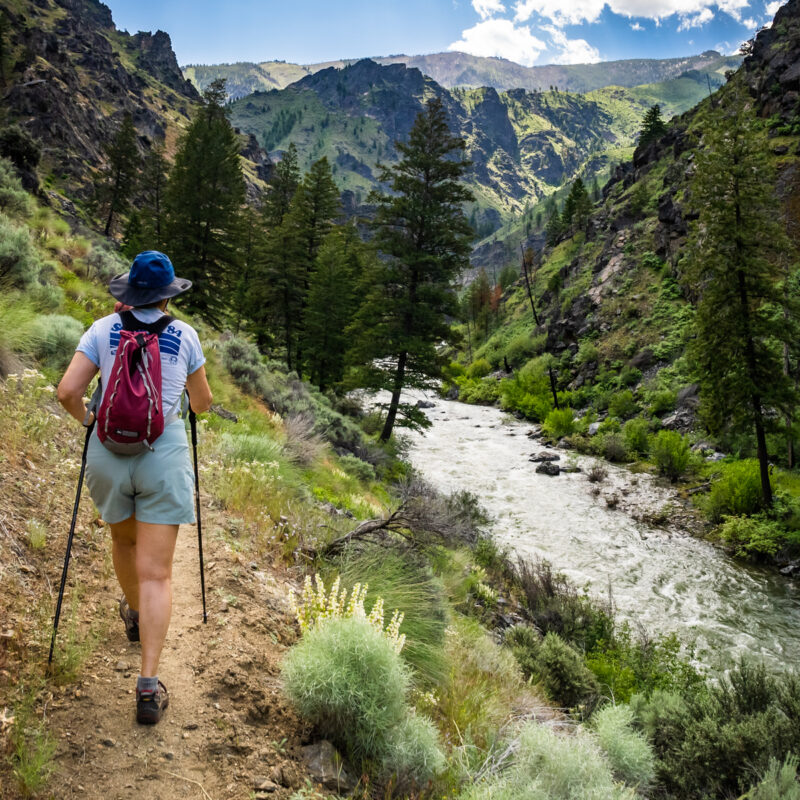
Once in a lifetime trip. Great way to learn about Peruvian history and culture while experiencing a hike back in time. Excellent food, nice tents, great guide – and the weather even cooperated in December! 50th Birthday Tripper from Colorado Inca Trail Trekking Guest
Related Blog Posts
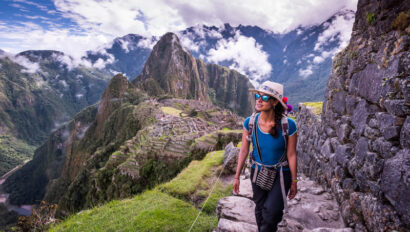
How to Thrive on a Multi-day Hiking Adventure
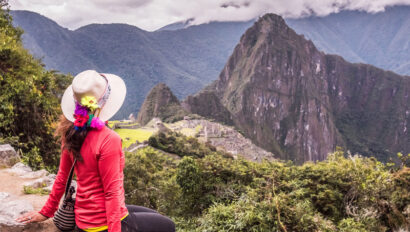
7 Common Misconceptions About Hiking the Inca Trail
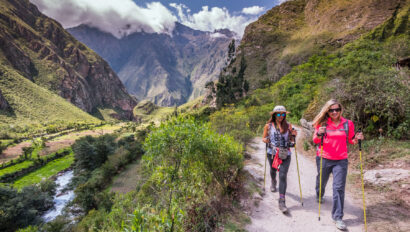
10 Bucket List Hikes Around the World
Discover your next oars adventure.
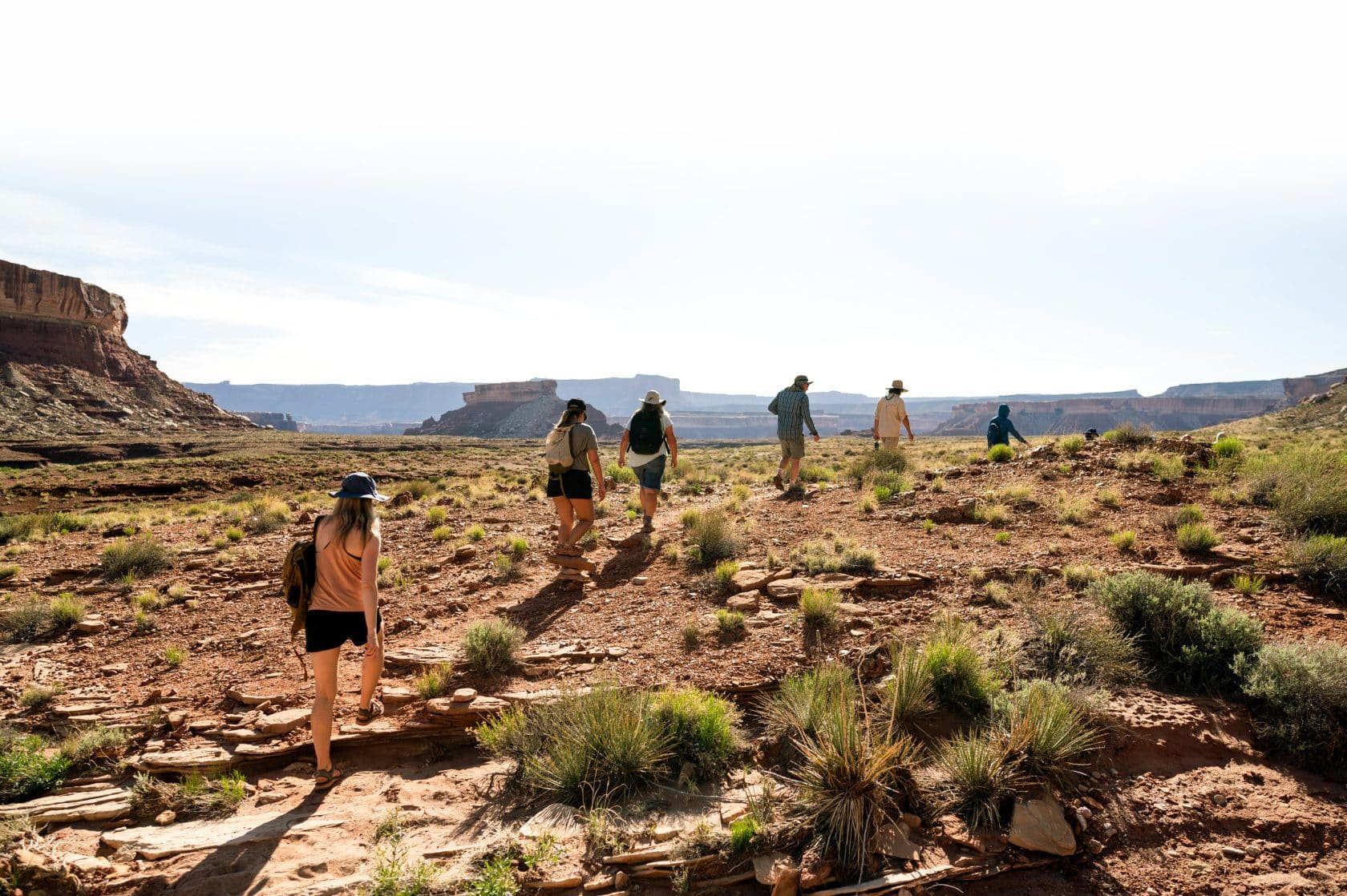
Compare Adventures
Select up to 3 trips to compare
2-FOR-1 GA TICKETS WITH OUTSIDE+
Don’t miss Thundercat, Fleet Foxes, and more at the Outside Festival.
GET TICKETS
BEST WEEK EVER
Try out unlimited access with 7 days of Outside+ for free.
Start Your Free Trial
Powered by Outside
The Best Backpacking Packs for Any Adventure
We spent five months testing the year’s top multiday packs. these 10 rose above the rest..
Heading out the door? Read this article on the new Outside+ app available now on iOS devices for members! >","name":"in-content-cta","type":"link"}}'>Download the app .
Shopping for a multiday pack can be intimidating. Big haulers are often pricey, and the variety of materials and features can be mind-numbing. To help you streamline your shopping, we spent five months putting more than a dozen and a half of this season’s best packs under the microscope—and under a whole lot of weight. These are the packs worth taking home.
At a Glance
- Editor’s Choice: Mystery Ranch Radix 57 ($299)
- Best for Short Overnights: Deuter Aircontact Ultra 35+5 ($240)
- Most Versatile: Sierra Designs Nexus Lite 35-50 ($250)
- Lightest: Black Diamond Betalight 45 ($400)
- Best for Long Trails: Outdoor Vitals CS40 Ultra ($368)
- Best for First-Timers: Rab Muon 50 ($260)
- Best Organization: Lowe Alpine Yacuri 55 ($320)
- Best for Technical Terrain: Mountain Hardwear Direttissima 55L ($420)
- Most Eco-friendly: Fjällräven Kajka 65 ($375)
- Best for Bigger Bodies: Osprey Rook/Renn 65 EF ($190)
Choosing the Right Backpacking Pack
How we test, meet our testers.
All gear in this guide was tested by multiple reviewers. When you buy through our links, we may earn an affiliate commission. This supports our mission to get more people active and outside. Learn more .
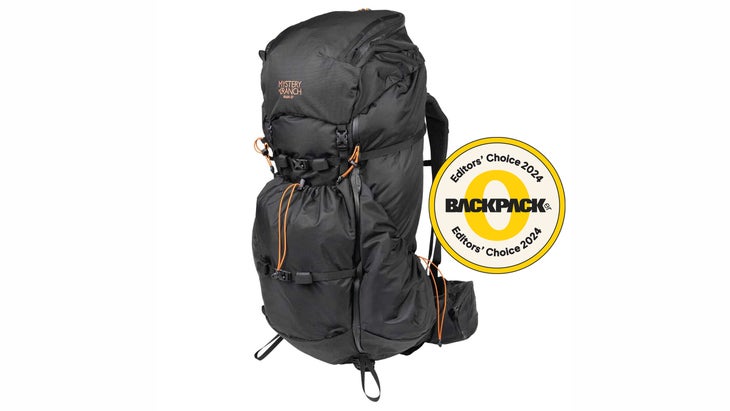
Editors’ Choice
Mystery ranch radix 57.
$299 at Backcountry (Women’s) $299 at Backcountry (Men’s)
Weight: 3.8 lbs Size: M’s S-XL and W’s XS-L
Pros and Cons ⊕ Superior load carry ⊕ Carrying comfort ⊗ Tiny hydration sleeve
The Radix 57 doesn’t just look sexy with its sleek monochrome fabric and tantalizing, full-length side zipper. It also delivers best-in-class comfort, load carry, and gear access all in a sub-4-pound package—about a pound less than many other packs capable of carrying similar loads. The secret: shaving weight by using space-age materials—not skimping on suspension. On the outside, a strong-but-gossamer 100-denier Robic nylon is reinforced with a grid of ultra-high molecular-weight polyethylene (UHMWPE), a uniquely strong and waterproof thread. While the pack itself isn’t seam-taped—and therefore isn’t waterproof—the use of the UHMWPE makes it highly water-resistant as well as abrasion-resistant. “I’ve squeezed under large blow-downs and past grabby bushes and trees,” reports Washington-based tester Matt Wise. “The pack hasn’t been phased.”
On the inside, a 7000-series aerospace-grade aluminum frame keeps loads close to the back. The frame, which is lightbulb-shaped and contoured to match the spine, provides both vertical stability and adequate torsional flex to support a natural gait. Load lifters and a cushy hipbelt further boost comfort. As a result, testers were able to heft up to 50 pounds without soreness. While there are other UHMWPE packs that can carry up to 60 or 70 pounds, most cost twice as much. “It’s the best pack I’ve tested yet,” says Wise. “It’s become my go-to for three- to four-day trips.”
Organization is outstanding for a lightweight pack: an off-center, full-length zipper flays the bag open nearly flat, making gear access and camp setup a breeze. The waist pockets each fit a phone, and large lateral pockets are angled for easy access while hiking. Even better news for weight-conscious hikers: the roomy toplid, compression straps, and frame are all removable, allowing it to function as a breezy overnight pack; the Radix 57 weighs just 3 pounds stripped.
Read our full review to learn more
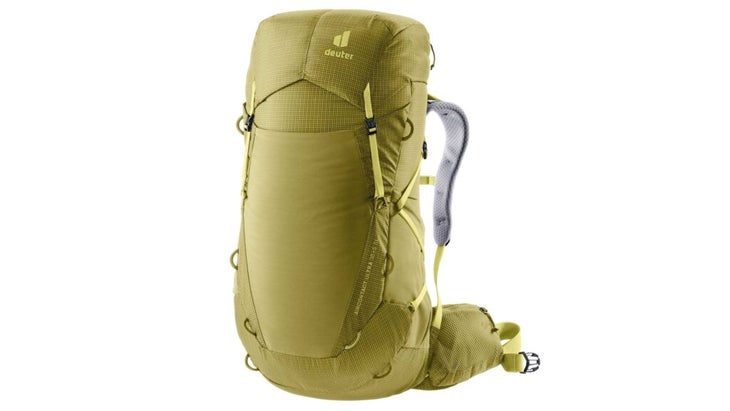
Best for Short Overnights
Deuter aircontact ultra 35+5.
$240 at Amazon
Weight: 2.5 lbs Size: M’s and W’s, two sizes each
Pros and Cons ⊕ Lightweight ⊕ Breathable ⊕ Good load-carrying capacity ⊗ Small pockets
The Aircontact Ultra has been an outstanding bag for years—we gave the 50+5 an Editor’s Choice Award in 2022 —thanks to its low weight, well-rounded features, and impressive durability. But the new 35+5 is a whole different beast. This pack sports a redesigned suspension that’s lighter and more breathable—and yet still more robust than some others in this weight range. The pack’s W-shaped, 2-millimeter spring-steel frame is molded to follow the S-curve of the back. This 3D contouring enhances its strength, letting us carry up to 25 pounds with ease. While the bag is relatively narrow, the 40-liter rating feels spot-on; we were able to fit a lightweight overnight kit and still had room to spare.
Generous sacral padding prevents lower back soreness, and molded foam in the backpanel permits some airflow—a feature tester Robin Mino was happy to have on a weekend trip to Colorado’s James Lake Wilderness in 70-degree heat. She also appreciated the generous stretch-mesh dorsal pocket, which allowed her to stuff layers quickly as the mercury rose.
Two small hipbelt pockets were adequate for snacks—but not a phone—and the removable toplid easily held a hat, gloves, and sunscreen. This toploader offers no bottom- or side-zipper access to the main packbag, but the minimalists among us didn’t mind. “The organizational layout is simple, which made it easy to pack overnight gear for quick trips around the Colorado Front Range,” reports packs category manager Corey Buhay. So far, she says, the material—a 175-denier polyamide with a UHMWPE ripstop grid—shows no signs of wear, even while scraping past boulders and talus in Colorado’s Eldorado Springs Canyon. (Note: Deuter’s use of “Ultra” in the pack name is unrelated to the popular ultralight material of the same name.)
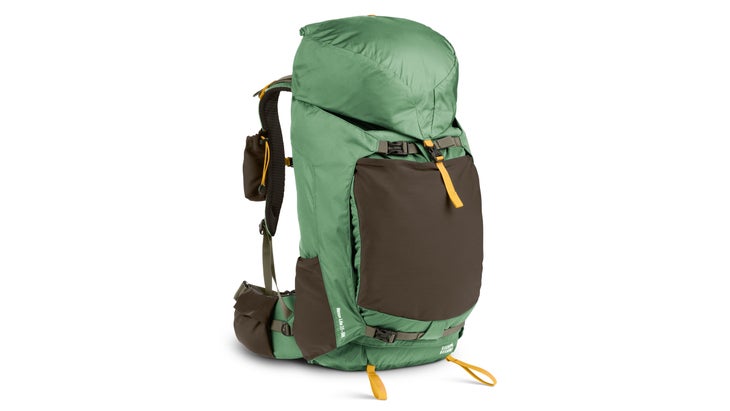
Most Versatile
Sierra designs nexus lite 35-50.
$250 at Sierra Designs
Weight: 3 lbs (multiday configuration), 2.4 lbs (daypack configuration) Size: Unisex, S/M and M/L
Pros and Cons ⊕ Modular components ⊕ Good durability ⊗ Minimalist hipbelt ⊗ No hydration hose port ⊗ Zipperless entry can be fiddly
Plenty of packs expand or contract by a few liters. Few are capable of full metamorphosis. Enter the Sierra Designs Nexus. Simply snap on a removable, stuff-sack-like garment bag (which acts as a roomy external pocket) and toplid, and this 35-liter daypack transforms into a fully fledged 50-liter overnight bag. Stretch-mesh side pockets, a hydration pouch, and hipbelt pockets made it easy to grab water and gear in either configuration. Better yet, the Nexus felt comfortable at both day-trip and overnight weights up to 25 pounds. Thanks to the roll-top, which expands for bigger loads, Backpacker Assistant Editor Emma Veidt was able to carry her sleeping bag, pad, stove, tent, and layers without issue. Credit goes to a Y-shaped aluminum frame. The system transfers weight to the lightly padded hipbelt while allowing shoulders to rotate naturally with each arm swing. “It was so comfortable—no pack sway,” said Veidt after an Appalachian Trail section hike. And when she found herself in need of an afternoon nap, she was able to use the removable, water-resistant garment bag—which has a soft inner liner—as a backcountry pillow.
Durability was impressive, not only because the pack utilizes a DWR-coated, 200-denier recycled nylon, but also because zippers, a notorious weak spot, are absent from this buckle-only pack. The only place we missed the zips? On the hipbelt pockets, where stretch-mesh flaps fit snacks and a headlamp, but provide limited security.

Black Diamond Betalight UL 45
$400 at Black Diamond
Weight: 1.9 lbs (1.1 lbs stripped) Size: Unisex; XS-L
Pros and Cons ⊕ Lightweight ⊕ Plentiful organization ⊕ Durable materials ⊗ Subpar breathability ⊗ Price
The Beta Light UL was already one of the lightest bags we tested this season. But, thanks to a removable hipbelt, frame, and backpanel, it can get even lighter. At just 1 lb. 2 oz. fully stripped, this sleek fastpacking pack quickly became our go-to for speedy, big-mileage missions.
The Beta Light UL owes its gravity-defying weight to a minimalist layout and ultralight materials. The frame is comprised of dual aluminum stays, which transfer loads of up to 35 pounds to a lightly padded hipbelt. A closed-cell foam panel helps protect the back from pointy cargo (though it isn’t very breathable). Even with the stays removed, the pack was able to support about 25 pounds with ease, thanks to a broad, vest-style harness that spreads weight across the chest and shoulders. A toploading entry—which closes via a cinch and buckle—provides the only way in or out of the main pack bag. However, generous chest pockets kept essential sundries close so we never had to go digging.
While most ultralight packs call it quits at three pockets, the Beta Light UL sports a 3-liter internal hydration sleeve, three chest pockets, and two hipbelt pockets, each big enough to fit a phone or camera.
Ultra 200—a superlight, waterproof laminate fabric—covers the majority of the bag. Taped seams make it fully waterproof. Over four months of testing, the Ultra 200 defied torrential rain on foraging trips in Alaska as well as scratches from pine branches and sharp scree. Even the finely woven nylon stretch mesh on the lateral bottle pockets and dorsal shove-it pocket escaped all but one small hole over the course of the season.
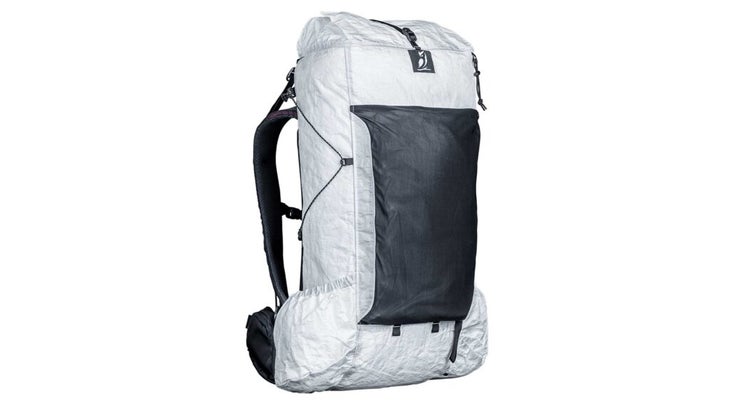
Best for Long Trails
Outdoor vitals cs40 ultra.
$368 at Outdoor Vitals
Weight: 1.7 lbs Size: Unisex, S-L torso and S-L belt
Pros and Cons ⊕ Lightweight ⊕ Comfortable carry ⊕ Carbon frame ⊗ Subpar organization ⊗ Minimal padding
Thru-hikers, add this one to your vision board. At well under two pounds, the CS40 is lighter than many top ultralight packs. But unlike many of its contemporaries, this baby comes equipped with load-lifters, a real hipbelt, and a full frame. The dual carbon stays add just an ounce each—but boost the CS40’s load-carrying capacity to 35 pounds. Even more impressive: pack category manager Corey Buhay found the CS40 remained comfortable even fully loaded, thanks to the hipbelt’s dual adjustment points and broad hip wings. While the belt’s minimalist padding left our more bony-hipped testers sore, most found it perfectly contoured to prevent hot spots, even after sweaty, 20-mile days in the Appalachians.
A U-shaped foam back panel provides targeted padding. While the close-to-body fit did inhibit breathability, it also prevented pack sway. “I could cinch down the main compartment and not feel any wobble during summit trips,” says Colorado tester Robin Mino after a season of bagging Fourteeners.
Organization was decent. The main bag is sufficiently cavernous to fit a bear canister while maintaining room for the rest of your kit, and the roll-top adds about 10 extra liters fully extended. Two small zippered hip pockets fit snacks and sunscreen, and each side pocket (angled for accessibility while hiking) fits a Nalgene. The dorsal stretch pocket was perfect for stuffing wet layers. While the pack isn’t seam-taped and won’t keep your gear safe during extended downpours, the waterproof Ultra 200 fabric and rolltop design kept gear dry through both light rain and wet bushwhacks. Both the abrasion-resistant Ultra 200 and accessory stretch mesh ended the season without a scratch.
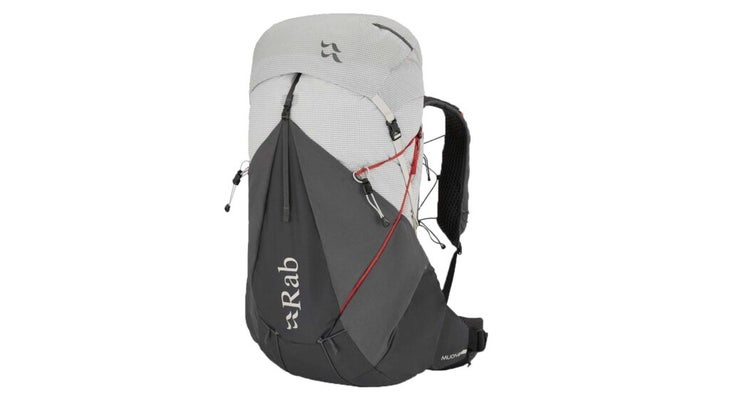
Best for First-Timers
Rab muon 50.
$260 at Backcountry (Women’s) $260 at Backcountry (Men’s)
Weight: 2.3 lbs Size: M’s and W’s, one size each
Pros and Cons ⊕ Comfortable carry ⊕ Huge pockets ⊕ Relatively lightweight ⊗ Fiddly sternum straps ⊗ No hipbelt pockets
After five months of testing across three different states, the Rab Muon 50 became our go-to recommendation for first-time backpackers thanks to a near-perfect balance of comfort, weight, features, and price.
For starters, the aluminum perimeter frame is sturdy enough to transfer loads up to 35 pounds to the hip-hugging waist belt. Both the wide hip wings and contoured lumbar pad are cushioned with a plush EVA foam. Editor Zoe Gates reported no chafing or hot spots, even after a 35-mile thru-hike of North Carolina’s Art Loeb Trail. Deep channels in the foam back panel helped maintain airflow and breathability on sweaty uphills.
Organization is unfussy. A surprisingly large main packbag accommodates three days of food, overnight gear, and a bear canister. The two enormous side pockets are accessible while hiking, and a large dorsal shove-it sleeve fits a day’s food and layers. We could stuff a hat, gloves, and snacks in the roomy toplid and a three-liter reservoir in the hydration sleeve. (Ding: Though the vest-style harness sports two zippered chest pouches big enough to squeeze a smartphone, there were no hip pockets.) The simple layout also keeps the weight low—a major bonus for first-timers.
The main pack body material, a 100-denier high-tenacity ripstop nylon, should be durable enough to survive the beginner years. Despite getting thrown on rocks in Colorado and shoved through rhododendron thickets in North Carolina, our test pack remained scratch-free. And at just $260, the Muon is more affordable than most of the packs on this list—giving the backpacking-curious one less reason to stay on the fence.

Best Organization
Lowe alpine yacuri 55.
$320 at Rab
Weight: 4.2 lbs Size: M’s & W’s, one size each
Pros and Cons ⊕ Plentiful pockets ⊕ Easy gear access ⊕ Included raincover ⊗ Limited load-carrying capacity for a pack of this weight
Most of the frustration of backpacking usually arises during points of transition: starting, stopping, digging for gear, packing, and unpacking. The Yacuri 55 is designed to eliminate much of that irritation.
The key is a streamlined organization system. Equipped with both hipbelt and chest pockets, this pack is built to keep you moving. Each hip pocket fits a full baggie of trail mix, and the roomy toplid boasts three zippered compartments. Stretch-mesh side pockets and a shove-it sleeve facilitate gear-stuffing on-the-go. And, thanks to the bottom-access zipper and a U-shaped dorsal zipper, camp setup and breakdown are a breeze.
The pack is so comfortable that testers rarely had to take it off. An adjustable backpanel makes it easy to dial in fit, and the 6-mm aluminum wire frame braces loads up to 30 pounds, according to tester Jim Pierce, who took the Yacuri on a 45-mile backpack of Idaho’s Centennial Trail. The hipbelt was thickly padded, though some testers reported that the contouring was a little off, causing chafing.
The pack comes with an included rain cover, but we rarely needed it; the DWR coating repelled water during both light showers and wet bushwhacks. And the 330-denier polyester (and 550-denier nylon boot) proved plenty durable. On the Centennial Trail, Pierce reported: “The buck brush was so thick that I was walking on branches and couldn’t even see the ground—the pack was unscathed.”
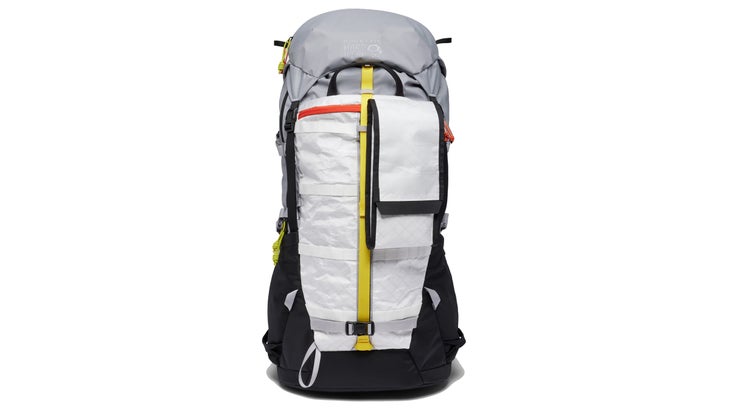
Best For Technical Terrain
Mountain hardwear direttissima 55l.
$420 at Mountain Hardwear
Weight: 4.7 lbs (S/M) Size: Unisex, S/M and M/L
Pros and Cons ⊕ Comfortable carry ⊕ Decent organization ⊕ Durable materials ⊗ Poor breathability
If you’ve got a big climb standing between you and camp, you’ll want the Direttissima on your side. “Even after 3,000 feet of vertical gain with a 40-pound load, my hips felt fine,” gushed Katie Griffith, a Washington-based climbing guide who’s typically prone to hip sores. “This is probably the most comfortable climbing pack I’ve used.”
Credit goes to the aerospace-grade, V-shaped aluminum frame, which transfers loads to the center of a lightly-padded hipbelt. There, the tip of the V creates a pivot point, which allows the pack to rock and twist with your body. We found the pack moved with us, even while scrambling, traversing glaciers, and ‘shwacking up primitive approach trails. The one tradeoff to that close-to-back fit: breathability. We often arrived at the base of our objectives soaked in sweat.
Despite all the rough handling, the pack showed no signs of wear. The Direttissima owes its durability to its cutting-edge fabrics. The sides and toplid sport a PU-coated, 210-denier nylon ripstop, while the dorsal panel is Challenge Sailcloth’s Ultra 400TX, which has a higher tear strength and double the abrasion resistance as the Ultra 200 fabric found in some of the year’s other packs. The boot is further reinforced with an 840-denier carbonate-coated nylon—the highest-denier fabric in the test.
The Direttissima is also better organized than most alpine packs. It sports a 8-liter toplid as well as ice-axe and gear loops. Plentiful external straps made it easy to lash on a helmet, and a small removable pouch fits low-profile aluminum crampons. (The hipbelt and toplid are also removable for lighter-weight missions.) A single zipper provides side access, and a sole hipbelt pocket holds snacks, lip balm, and sunscreen. Another bonus: the Direttissima fits seamlessly over a harness. “I didn’t even notice I had it on,” reports Oregon mountain guide Kelly Rice.

Most Eco-Friendly
Fjällräven kajka 65.
$375 at Fjällräven
Weight: 6.4 lbs Size: Unisex; S/M and M/L
Pros and Cons ⊕ Top-notch durability ⊕ Excellent load carry ⊕ Included raincover ⊗ Weight
Many eco-friendly packs with alternative materials have one major downside: they’re heavy. Fjällräven, especially, is known for its weighty packs owing to the brand’s use of wood and canvas. But now, major material and design updates have shaved more than a pound off previous editions of the Kajka, making this low-carbon-footprint favorite more accessible—and comfortable—than ever.
Several features contribute to the Kajka’s eco cred. For one, the combination of proprietary synthetic polyvinyl and burly 500-denier nylon ensures that your Kajka will likely outlive you (and therefore stay out of the landfill). Second, polyvinyl is naturally dirt- and water-resistant, eliminating the need for additional chemical treatments. Proof: the Kajka successfully deflected wet vegetation, rain, and sandstone scrapes on North Carolina bushwhacks and Arizona canyoneering trips alike. The nylon is fully recycled, and the dual vertical stays are made of flexible-but-strong renewable birch.
Thanks to the unique frame and plush hipbelt, photographer Evan Green was able to carry 50 pounds of camera equipment on a 35-mile backpack through Western North Carolina. He reported stable carry, even while running up hills to get the shot.
Green was also impressed with the Kajka’s organization. A full U-shaped zipper afforded him quick access to both memory cards and overnight gear, and massive lateral zipper pockets kept snacks and layers handy. Each hipbelt pocket fits a phone, and bungeed side pockets accommodate Nalgenes. Fun bonus: The removable toplid converts into both a chest pack and a shoulder bag.
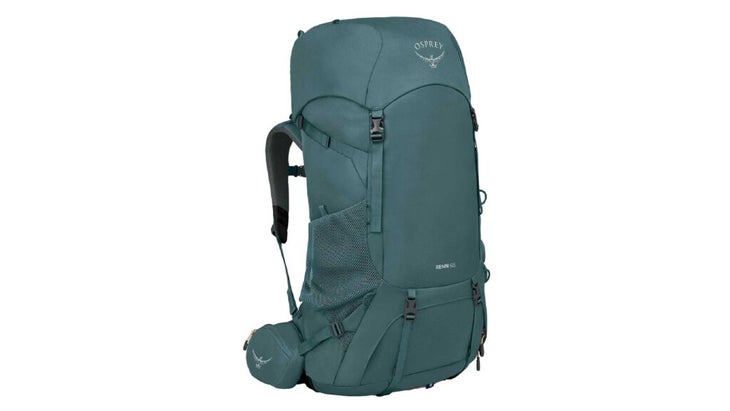
Best for Bigger Bodies
Osprey rook/renn 65 ef.
$190 at REI (Renn/Women’s) $190 at REI (Rook/Men’s)
Weight: 3.8 lbs (Renn) Size: M’s and W’s; one size each
Pros and Cons ⊕ Adjustable backpanel ⊕ Included raincover ⊕ Good load carry ⊕ Affordable price ⊗ Subpar breathability
Most plus-size backpacks feel like an afterthought, but the Rook/Renn 65 EF was specifically designed for the needs and nuances of bigger bodies. The hip pockets are positioned to remain accessible even with the waist belt extended to its full 70-inches. Likewise, the harness padding is extended and contoured to comfortably wrap broader shoulders and waists.
Though the Rook/Renn 65 EF only comes in a single size for each gender, it sports four inches of torso-length adjustability. Testers found the adjustment system—two parallel ladders with plastic toggles—easy to manipulate. And testers of all sizes felt that the 4-mm aluminum perimeter frame let them carry extra heavy loads.“I packed about 45 pounds to an alpine hut,” says Diandra Oliver, a tester based in British Columbia. “I had plenty of room left in the bag and could have carried more.”
She also lauded the plentiful organization, which made it easy to quickly stuff gear for an early start. Deep bottle pockets, a massive toplid, and a stretchy dorsal sleeve swelled to fit extra layers. A three-liter hydration sleeve and included raincover round out the features.
The only downside was breathability: the backpanel’s mesh trampoline is hourglass-shaped, which means that larger bodies tend to block airflow on either side of the mesh. As a result, we ended humid hikes in the Adirondacks soaked with sweat.
So far, the pack’s burly 600-denier recycled polyester has defied scrapes, even after a season of bashing. “I threw it on rocks and packed my axe inside with a cereal box for a blade cover,” Oliver reports. “No holes or wear.”
Your choice of pack can make the difference between a life-changing trip and a miserable one. Here’s how to choose.
1. Capacity: The first step is to determine what kind of capacity you need. For one- to three-night trips, target 40 to 55 liters. For gear-intensive trips or those nearing a week in length, you’ll likely need 60 to 70 liters. When you go shopping, bring your full kit—clothes, water, sleeping bag, tent, the works. Make sure it all fits in the pack before you buy.
2. Fit: No discount is worth sacrificing your comfort for. Before you buy, have a gear shop employee measure your torso length (the distance from the vertebra at the base of your neck to the point midway between your iliac crests). Most people are between 16 and 21 inches. Make sure this number falls within the range of your prospective pack’s specs. Then, try it on. Swing your arms, rock your head back, and leap around. The pack should feel snug but not too tight, and it should move with your body without impairing motion.
3. Load-carrying capacity: How much can your pack comfortably carry? Lightweight and ultralight packs may look sleek, but many cap out around 25 pounds—a tough weight to achieve if you prefer a few creature comforts. Beefier packs can often tote up to 50 or 60 pounds, but they also weigh more when empty.
4. Features: Now consider your backpacking style. If you like to snack on the go, prioritize hipbelt and chest pockets. If you’re a reservoir person rather than a bottle person, make sure there’s a built-in hydration sleeve and hose port. If you plan to carry an ice axe or trekking poles, look for stowage loops. Your preferences may change over time, but make sure your pack meets your basic needs.
- Total miles: 425
- Total vertical feet: 119,500
- Coldest temp: 28°F (Denali National Park, AK, Diane Van Dommelen)
- Hottest temp: 98°F (New River Gorge, WV, Ashley Manning)
- Highest elevation: 14,007 (Mt. of the Holy Cross, CO, Robin Mino)
- Highest winds: 35 mph (Continental Divide Trail, CO, Robin Mino)
- Heaviest Load: 50 lbs (Evan Green, Kajka 65)
- Biggest oops: One tester strapped his bag of camp meals to the outside of his pack, went bushwhacking, and promptly lost all his food. He had to hike out via an emergency Forest Service road exit
Backpacking packs are among the toughest items to fully test within the course of a season. They’re more complex than apparel, they take longer than boots to show their pain points, and all the bells and whistles can take dozens of miles to evaluate. That means each pack needs at least two testers and 50 to 100 miles on the trail at a minimum—all in just a five-month span. Every testing season is a madcap race to drive as many packs into the ground as fast as we possibly can. Samples usually start trickling into the office in July. From then on, it’s a game of hot potato: we rush to ship them to our hardest-charging testers. When one trip ends, the pack flies back to the post office and into the hands of the next tester.
This year, we evaluated 19 total packs. The ones without technical features, load-bearing hip belts, or suspensions appropriate for their carrying capacity, we eliminated from the test. From there we distributed our candidates to 20 testers across nine states and three countries—as far as Canada, Alaska, and Argentina. Those that broke, tore, or left our testers aching were either re-tested or cut from the running. Those that lightened loads, kept us moving, or made us forget we were wearing packs at all made the list.
Corey Buhay is a former Backpacker editor and co-author of the hiking guidebook Colorado Rockies. She is currently based in Boulder, Colorado. She’s been managing the packs category for Backpacker since 2019, and has developed very strong opinions about hipbelt pockets.
Erica Givans is a longtime backpacker, ice climber, and artist from Bend, Oregon. She currently lives in Denver, Colorado, where she alternates between seeking out hot springs and packrafting on alpine lakes throughout the Rockies.
Nate Pipenberg is a freelance writer and trailworker and the author of Backpacke r’s ultralight hiking column. He recently finished hiking the Idaho Centennial Trail, and he’s currently working on a guidebook of gravel bike routes near his home in Boise, Idaho.
When you buy something using the retail links in our stories, we may earn a small commission. We do not accept money for editorial gear reviews. Read more about our policy.
Popular on Backpacker
Related content from the outside network, what’s it like to go on a 200-person hike better than you think., how to pack for backcountry skiing, the original yosemite firefall, hiker charges mountain lion.
The Best Backpacking Backpacks of 2024
Head into the backcountry with one of the best backpacking backpacks of 2024. From budget-friendly options to ultra-comfortable picks, we’ve got you covered.

Whether you’re going on a short overnight trip or a months-long thru-hike, finding the best backpacking backpack is fundamental to success . It not only needs to hold all your necessary gear, but it should also be comfortable enough that you don’t spend the day fidgeting or thinking about your pack.
The backpacking backpack market is competitive and constantly evolving. For every body type out there, there’s a pack to comfortably carry the essentials hundreds — or thousands — of miles. Your backpack is arguably the most vital element of your backpacking loadout, and can hands down make or break a long journey. It’s important to seriously consider the type of travel you intend to do with your pack, and choose one that will accommodate your needs, intended base weight, and hiking objectives.
Our team has collectively tested hundreds of these stalwart packs for the creation of this guide, with current author Chris Carter having put over 15 different models through grueling tests in the past year alone. He has postholed through hip-deep snow in the alpine, slogged over muggy Appalachian mountains, and plodded across the African savannah with a multitude of different backpacking backpacks to bring you the streamlined selection you see today.
An alumnus of each of the Triple Crown trails in the United States, Chris has worn nearly permanent groves in his shoulders from the perpetual weight of backpack straps. He knows what it’s like to fling your load on the ground in exhaustion at the end of the day, and is constantly sniffing out packs that minimize discomfort over the long haul. Backpacking is inevitably taxing, but a good-fitting, comfortable backpack can minimize the agony.
After loads of research and miles upon miles of rigorous testing, we found the best packs for every use and budget. Because no single pack works for everyone, we’ve broken the list into categories to help you find the perfect fit. And if you need more help deciding, be sure to check out our comparison table , buyer’s guide , and FAQ sections at the end of this article.
Editor’s Note: We updated our Backpacking Packs guide on April 2, 2024, to elect the Osprey Exos 58 as our Best Overall choice on the market today, as well as adding the REI Co-op Trailmade 60 as our Best Budget.
- Best Overall Backpacking Pack: Osprey Exos 58
- Best Budget Backpacking Pack: REI Co-op Trailmade 60 Pack
- Best Breathable Backpanel: Gregory Men’s Katmai 55 & Women’s Kalmia 50
- Best Women’s Backpacking Pack: The North Face Women’s Terra 55
- Best Ultralight Backpacking Pack: Hyperlite Mountain Gear Southwest 40 Pack
- Best Comfort Ultralight Backpacking Pack: ULA Circuit
- Best Heavy-Hauler Backpacking Pack: Gregory Baltoro 75
Osprey Exos 58
- Weight 2 lbs., 13 oz. (S/M); 2 lbs., 15 oz. (L/XL)
- Volume 58 L (S/M); 61 L (L/XL)
- Material 100- and 400-denier high-tenacity recycled nylon (both Bluesign-approved)
- Outside Storage 2 zippered hip belt pockets, 2 dual-access stretch mesh side water bottle pockets, ice axe attachment with bungee tie-off, and stretch mesh front shove-it pocket

- Extremely comfortable for its low weight
- Efficient suspension system
- Great ventilation
- Some extra features seem gimmicky and unneeded
- Compression system is somewhat awkward to use and impacts the usability of the hip belt pockets
The Osprey Exos 58L ($260) pack has been a top lightweight pick for long-distance backpackers and weekend hikers for years, and its newest iteration doesn’t disappoint. Offering an extremely well-built, breathable design, the Exos is packed with thoughtful features, but still manages to keep the pack’s overall weight surprisingly low.
Coming in at almost half the weight of many traditional backpacking bags, and approaching the weight of some frameless, ultralight models, the Exos delivers supreme comfort in a lightweight, simple package. In fact, it’s the reason we supplanted the Exos as the Best Overall in place of the more overbuilt Osprey Aether & Ariel Packs this year — this pack does it all, and at a lower weight.
The Exos uses Osprey’s AirSpeed suspension system, which keeps the pack’s weight off your back, and maximizes ventilation with an alloy frame and a tensioned, breathable-mesh back panel. The beefy, perforated shoulder straps and seamless, layered mesh hip belt contribute to the pack’s comfortable, breathable feel.
The suspension system is quite robust on the Exos, despite its minimal weight, and carries loads of up to 45 pounds pretty well. Beyond that weight, it may feel less comfortable and capable.
Some additional, helpful features of the pack include a removable lid with an integrated flap protecting gear when the lid is off, Osprey’s Stow-on-the-Go trekking pole attachment system, and ice axe attachments with bungee tie-offs. The new Exos addresses a couple of complaints users had with the older model, adding a simple torso adjustment system, and bringing back the cherished hip belt pockets.
On the hunt for an even lighter option for fast-paced ultralight missions? Osprey recently released its Exos Pro , which is nearly a pound lighter than this cult classic. Read our review of this featherweight feat of engineering in our roundup of the Best Ultralight Backpacks .
For the weight-conscious adventurer seeking a mega-light setup, without skimping on comfort or moving to a frameless model, this may just be the perfect compromise.
REI Co-op Trailmade 60 Pack
- Weight 3 lbs., 6 oz. (Regular); 3 lbs., 11 oz. (Extended)
- Volume 60 L
- Material Recycled nylon, unspecified denier
- Outside Storage Hipbelt pockets, 1 front shove-it mesh pocket, 2 side water bottle pockets

- Comfortable hip belt with wide range of sizes
- Easy torso adjustment
- Easy on the budget
- Low-angled water bottle pockets
- Relatively small front pocket
- Non-removable lid
- No side mesh pockets
Made to shoulder the weight on your back and not your wallet, the REI Co-op Trailmade 60 Pack ($179) isn’t studded with features or gimmicks, but it carries a full weekend’s kit with ease. And this backpacking pack has just enough attention to detail to keep us plodding happily down trail. If you’re dipping a toe into the activity (or have a whole flock at home to outfit), this pack is for you.
Designed with approachability in mind, there’s no patented tech adorning the Trailmade 60, just a good number of years of REI know-how in what it takes to build a good backpack. Starting with the frame, the pack is surprisingly accommodating, with an adjustable torso that fits 17-21″ torso lengths. That’s backed up by two broad hip belt size ranges — Regular (SM-XL) and Extended (2XL-4XL) — meaning just about anyone should be able to saddle up.
The pack body is a classic top-loading and drawstring-closure design, and ports around a solid 60 liters of space. The separate zippered sleeping bag compartment feels a bit dated, but thankfully the internal divider can be dropped to open up the main compartment to full capacity. There’s also an integrated hydration reservoir sleeve inside, keeping your heavier water weight close to your back where you want it.
The external organization on the Trailmade 60 is fairly spartan, but you still get the classics. You’ll find a large front stuff pocket for things like a rain jacket or tent fly, and two angled water bottle pockets that provide easy access on the go.
Sized up against the REI Co-op Flash 55 , which was recently upgraded, there are a number of reasons you might elect for the hardier build and extra $20 investment. For one, the Flash packs are built with a more durable nylon, which will mean a longer trail life. Slightly more expensive packs pile in a bit more external storage, adding side stuff pockets, and a removable brain. But if you’re saving for lunch, the REI Co-op Trailmade 60 makes the grade in our book.
Read Review: REI Adds Comfort and Ease for Beginner Backpackers: Trailmade 60 Pack Review
Gregory Men’s Katmai 55 & Women’s Kalmia 50
- Weight 4 lbs., 9.8 oz. (S/M); 4 lbs., 10.9 oz. (M/L)
- Volume 55 L
- Material 210-denier 40% recycled nylon/420-denier 45% recycled nylon
- Outside Storage Hipbelt pockets, 1 side mesh pocket, 1 SideWinder water bottle holder that can be put away when not in use, ice axe/trekking pole attachments, front shove-it pocket, large zippered front pocket with mesh divider

- Extremely breathable
- Comfortable design carries heavy loads well
- On the heavier side
- Only one side mesh pocket
The Gregory Katmai 55 / Kalmia 50 ($290) is a comfort-first backpack with well-padded straps and belt, as well as a suspension system that adjusts to your natural movement when walking, especially under load. Flex panels and rotating shoulder straps move independently with the shoulders and waist while walking.
With its FreeFloat 360 ventilated back panel, it almost eliminates the inescapable problem of lower back sweat. Gregory even added Polygiene odor treatment to the moisture-wicking back panel, so if you do sweat through it, your pack will stay smelling fresh.
The Katmai has side and bottom access zips to the storage for quick access, which also help you see inside more of the bag. That’s a bit of a love/hate feature, but we leaned toward love. The lid has a large zippered pocket on the top and a smaller one inside for stashing valuables away from the elements.
A large, shallow, front compartment makes a good place to store meal packets, maps, or guidebooks, and is covered by a stretchy mesh pocket for a layer. Additionally, it has long-trip essentials you’d expect, such as a hydration sleeve with a hanger, trekking pole loops, and a sleeping bag compartment.
The shoulder harness and hipbelt are easy to adjust and stay in place. It has an adjustable steel alloy internal frame, ranging from 18 to 22 inches in the M/L size (15-19 inches for the S/M).
If weight isn’t your biggest concern and you’re looking to maximize comfort on the trail, the Gregory Katmai 55 / Kalmia 50 could be a great addition to your arsenal.
The North Face Women’s Terra 55
- Weight 3 lbs., 9 oz. (XS/S); 3 lbs., 12 oz. (M/L)
- Material 210D nylon with DWR finish, 600D polyester bottom
- Outside Storage 2 zippered hipbelt pockets, 2 dual-access stretch mesh side water bottle pockets, and front shove-it pocket

- Unique Dyno Lift load lifters help achieve an optimum fit
- Comfortable, female-specific features
The updated women’s The North Face Terra 55 ($179) is a comfortable, affordable pack catered toward the novice hiker breaking into longer trips, or the dedicated backpacker on a budget. The women’s model has subtle female-specific tweaks, such as ergonomic shoulder straps and torso length.
In terms of durability, the Terra 55 backpack is built to last. The outer shell is made from tough 210D nylon DWR fabric that can withstand wear and tear, while the zippers and buckles are crafted with high-quality materials that are designed to go the distance.
A few standout additions give this pack a unique flair. Firstly, the front J-zip affords swift access to inside contents, without adding unnecessary weight by opening the entire front of the pack. Small features here and there, such as the OptiFit suspension system and cozy molded hipbelt, contribute to the pack’s useability, but the singular Dyno Lift load lifters take the cake as the most impressive.
Our tester has never seen something like this on a backpack before. An adjustable locking clasp on the right shoulder strap secures one end of the load lifter, which runs through some webbing behind the frame, and attaches to the other strap. The load lifter can move freely around the frame, and is therefore self-equalizing.
No more trying to perfectly adjust the left and right lifters to be the same size — this does it for you. And, if you need the shoulder straps cinched closer to the frame, simply pull the right strap through the clasp. This ingenious design is truly a game changer for snagging a comfortable fit on the go.
At 3 pounds, 12 ounces (for a M/L), this isn’t the lightest, most streamlined pack on the market. We feel some weight could be shaved off, but the thoughtful additions do make it a wonder to haul heavy loads with.
Overall, the women’s The North Face Terra 55 backpack is an excellent female-specific option for hikers seeking a reliable, comfortable, and functional backpack for extended outdoor adventures. If you’re scoping out an approachable pack for your first big trip, or just need a well-designed budget model to add to your arsenal, this could be a solid option.
Hyperlite Mountain Gear Southwest 40 Pack
- Weight 1 lb., 14 oz.
- Volume 40 L
- Material Dyneema: White (DCH50 – main body, DCH150 – bottom); Black (DCH150 – main body and bottom)
- Outside Storage 2 side pockets, 2 zippered hipbelt pockets, ice axe attachment, front shove-it pocket

- Quite durable given its ultralight construction
- Stable and comfortable compared to other ultralight models
- Side and front external pockets have drain holes and reinforced bottoms
- Minimal features
- Center ice axe loop can be awkward to use, as there is no higher attachment for the shaft
For an ultralight pack, the Hyperlite Mountain Gear Southwest 40 Pack ($349) strikes a rare balance between comfort, weight, and durability, making this our top pick for an ultralight setup. This pack is built almost entirely from Dyneema — a super strong and incredibly light material.
Although Hyperlite makes similar packs with larger capacities, many users prefer the 40L size of the 2400 Southwest Pack, which weighs in at a featherlight 1 pound, 14 ounces.
Most ultralight backpacks simply are not as stable or comfortable as heavier packs. The Southwest Pack manages to break the mold. Even with a full load, this pack is quite enjoyable to hike with.
A ¼-inch back panel pad adds significant cushioning that prevents the pack’s contents from poking into the user’s back. Structural support comes from removable aluminum stays, which help distribute the pack’s weight evenly across the user’s body.
Like most ultralight gear, this pack is minimalist and basic in its tube-like design. Aside from the main compartment, the pack features three exterior pockets and two zippered hipbelt pockets.
The roll-top system seals with a Velcro closure and fastens to the pack’s sides with buckles. Apart from a simple hydration bladder sleeve, there are no internal zippered pockets or organizational features.
In addition to various size options, the Southwest Pack is also available in two different Dyneema fabrics. The 50-denier version is white, while the 150-denier version is black and costs $20 more. Most users report great durability, even with the thinner version.
For the ultralight backpacker looking for a pack that will survive the rigors of a thru-hike and beyond, it doesn’t get much better than the 2400 Southwest Pack.
ULA Circuit
- Weight 2 lbs., 4.4 oz.
- Volume 68 L
- Material ULA 400-denier Robic
- Outside Storage 2 zippered hipbelt pockets, 2 adjustable side water bottle pockets, front shove-it pocket, ice axe/trekking pole attachments

- High carrying capacity given its low weight
- Extremely comfortable as an ultralight pack
- On the heavier side of ultralight packs
- Somewhat limiting side pocket design
ULA Equipment has some big-time fans in the world of thru-hiking. The company has rightfully earned its reputation for comfort and durability the hard way — on the backs of thru-hikers over thousands of collective miles.
If this USA-made cottage brand had a flagship pack, it would probably be the Circuit ($280). A top choice for the PCT and other thru-hikes, the Circuit falls into that versatile size of 4,200 cubic inches (68 L).
Weighing in at just 41 ounces, the Circuit can still handle loads up to 35 pounds, making this pack a go-to choice for the weekend hike with a bear bin and fishing pole, or a summer-long adventure on the Pacific Crest Trail.
For its versatility, consumers absolutely love this pack. Recommended for a base weight of 15 pounds or less (up to 35 pounds total load), the Circuit carries weight with a remarkable 1.2-ounce carbon fiber and Delrin suspension hoop in conjunction with a dense internal foam frame and a single aluminum stay.
It provides modest organization with the main body, a front mesh pocket, left and right side mesh pockets, an extension collar, and left and right hip belt pockets. ROBIC fabric provides a durable but very light foundation for this pack. If you’re considering an ultralight backpack for your next adventure, don’t look past the ULA Equipment Circuit .
Gregory Baltoro 75
- Weight 4 lbs., 13.2 oz.
- Volume 75 L
- Material 210D Honeycomb Cryptorip HD/210D high-tenacity nylon (body), 630D high-density nylon (bottom), 135D high-density embossed polyester (lining)
- Outside Storage 2 zippered hip belt pockets, 1 stretch mesh side pocket, 1 SideWinder bottle holster that tucks away when not in use, dual front zippered pockets, front shove-it pocket

- Solid suspension system that balances heavy loads well
- Durable fabric
- Comfortable cushion on the hipbelts and shoulder straps
- Quite heavy at nearly 5 pounds
- Tall side pockets can be difficult to access when pack is loaded
Want to carry an entire base camp on your back? Well, look no further. Loaded with days of camping gear, multiple tents, a full trad climbing rack, and two ropes, we recently took the Gregory Baltoro 75 ($360) on a serious test drive in the Appalachian Mountains. As much as a pack weighing 60 pounds can float behind you … this one floated.
True to their reputation, Gregory carries on the Baltoro’s legacy with the newest iteration of this crowd-favorite beast. Super stable, cushioned to the max, with a solid suspension system, this pack bears massive loads with about as much ease as you could ask for.
The Baltoro has always distributed heavy loads evenly. The full-perimeter metal frame and compression straps offer phenomenal structure and work well with its 3D Air hip belt and shoulder straps that rotate to your body’s geometry for a dialed-in fit. This allows the pack to move with you without feeling sloppy and unbalanced. A layered, breathable back panel with multi-density foam affords stellar breathability on sweaty missions.
Often we’ll read jargon like that in a specs list and pass it off as marketing nonsense, but this system genuinely delivers as promised in a way we haven’t seen on many other packs.
This is undeniably a clunker of a 5-pound bag, with more straps, cinches, zippers, and buckles than we’d like to count, so if lightweight minimalism is what you’re after you should look elsewhere. It can get overwhelming at times, but without all the extras it wouldn’t be the workhorse it is. We have some concerns about the tall side pockets that flank the pack. When it is full these are difficult to access and make grabbing stuff on the go quite a chore.
All in all, Gregory’s flagship Baltoro remains one of the most reliable heavy-haulers on the market. If you need to carry everything imaginable without breaking your back, this could be the perfect choice.
Osprey Aether & Ariel 55
- Weight 4 lbs., 13.2 oz. (S/M); 4 lbs., 13.9 oz. (M/L)
- Material 420HD nylon packcloth, 210-denier nylon Diamond (Bluesign-approved)
- Outside Storage 2 zippered hipbelt pockets, 2 dual-access stretch mesh side water bottle pockets, ice axe attachments, and fabric-reinforced front shove-it pocket

- Customizable sizing
- Extremely durable
- Lots of options for outside storage
- Not a lot of upper-body mobility
The Osprey Aether and Ariel 55 ($300) are recently updated versions of two of Osprey’s bestselling styles. Packed with features and thoroughly well-designed, the functionality and comfort of the Aether and Ariel make them our first choices for the best backpacking packs.
Although these packs are classic-style top-loaders, a large front zippered access point allows you to get into the depths of your gear without having to fully unpack. For heavy loads, the burly materials and easy, on-the-go adjustability make the Aether and Ariel strong and reliable carriers.
We like that Osprey has combined some tried-and-true backpack design elements with clever and innovative features of its own creation. For quick access to bits of essential gear, these packs offer dual-zippered hip belt pockets, stretch-mesh water bottle pockets, and a front “shove-it” pocket.
This pack offers the ability to fine-tune the fit for a variety of different shapes and sizes, including an adjustable torso length, as well as Osprey’s Fit-on-the-Fly hipbelt and shoulder straps.
Other noteworthy features include an internal hydration bladder sleeve, dual ice axe loops, and a versatile compression system that offers additional exterior storage.
Although Osprey also makes a 65L version of the Aether and Ariel , we like the 55L version for its compact profile and slightly reduced weight. For long weekend trips, these packs will offer plenty of space for most users.
They can also handle longer trips with some thoughtful packing. Yes, the Aether and Ariel are heavier than many other packs of their size, but they are ultrareliable and feel stable and balanced on the trail. If you’re looking for a burly, reliable pack that will last for years, this may be the perfect fit.
Read Review: Osprey Aether 55 and Ariel 55: The Cadillac of Backpacks
REI Co-op Flash 55
- Weight 2 lbs., 12 oz.
- Material 100-denier ripstop nylon main body; 210-denier nylon bottom
- Outside Storage Removable hipbelt pockets, 2 side water bottle pockets, 2 larger side mesh pockets, ice axe attachments, breathable mesh front pocket

- Lightweight
- Inexpensive
- Easy to customize
- Not quite as durable as other models
- Doesn’t carry heavy loads as well as other models
REI has been selling backpacking gear for decades. The recently updated REI Co-op Flash 55 ($199) is extremely popular, and for good reason. This pack is lightweight, highly customizable, and quite capable of the handling rugged demands of multi-day backpacking.
The Flash 55 is a modular pack, and various features can be added or removed to increase storage or shed weight. With all the organizational features included, this pack weighs around 2 pounds, 12 ounces.
By removing all of the modular features, the user can reduce the total weight by almost half a pound. Importantly, removing these features does not affect the Flash’s suspension system or carrying comfort.
At the top entry point of the main compartment, a roll-top, dry bag-esque closure system helps keep the pack compressed and the contents dry. Thanks to this roll-top, users can also choose to leave the pack’s top lid behind if desired.
Other useful features include a front mesh pocket, hydration bladder compatibility, and an ice axe attachment loop. The newest iteration features a beefier daisy chain with multiple attachment loops for more exterior lashing options.
For a backpacking pack, the REI Co-op Flash’s 100-denier ripstop nylon body feels thin and potentially fragile. Although this pack doesn’t seem to wear or tear faster than other packs in its class, users should avoid rubbing the sides of the pack against rock and rough surfaces. On the bottom of the pack, burly 210-denier nylon offers supreme protection from the ground.
At $199, the Flash 55 is one of the best values on the backpacking market. If you’re looking for a reliable, durable pack that won’t break the bank, this could be the bag for you.
Read Review: REI Flash 55 Pack Review: Lightweight for Long Hauls
Deuter Aircontact Ultra
- Weight 2 lbs., 11 oz.
- Volume 50L or 55L
- Material 200 D ripstop polyamide
- Outside Storage 2 side pockets, 2 zippered mesh hip-belt pockets, front mesh shove-it pocket

- Fully featured
- Superior suspension system
- Not quite as breathable as other models
- Doesn't carry heavy loads quite as well as other packs
The streamlined and simple Deuter Aircontact Ultra ($250) delivers exceptional carrying comfort with a surprisingly lightweight and thoughtfully featured design. This pack is catered toward the thru-hiking crowd who may want a similar weight to ultralight packs, but are still looking for the comfort and support of traditional backpacking bags.
After extensively testing both the regular 50+5L and women’s-specific 45+5L SL versions, we can confidently say we would trust, and enjoy, taking this on a long journey across the country. It carries loads as comfortably and evenly as the best of them.
Tipping the scales at a relatively scant 2.6 pounds, it just sneaks in under the weight of the comparable Osprey Exos, though the weight savings make it a little less breathable. Its back panel still offers competitive ventilation. Deuter’s Aircontact back system has a suspension design that is easily adjusted to meet various torso lengths.
Two small carabiners are accessed via a Velcro flap near the brain of the pack, and can be clipped to three different loops, raising or lowering the shoulder straps. This helps to absorb jostling and contributes to a smooth ride as you bounce down the trail.
Despite its light weight, the Aircontact Ultra carries loads incredibly well, and distributes weight to the hips with an ultralight elastic spring steel frame. The shoulder straps and hip belt have adequate padding for base weights most thru-hikers would be toting, but once you start seriously loading it up we found ourselves wishing for a little more cushion. We loved the ergonomically shaped Active Fit shoulder straps, though, and felt completely comfortable with kits up to around 45 pounds.
This pack would be perfect for the long-distance hiker looking to dip into the ultralight scene without compromising on top-shelf comfort, durability, and function. The Aircontact Ultra is a lightweight, cozy ride that offers plenty of features to make a grueling, multi-month trek as pleasurable as possible.
Granite Gear Blaze 60
- Weight 3 lbs.
- Material 100-denier ROBIC high-tenacity nylon with Barrier DWR (main body); 210-denier ROBIC UHMWPE (Ultra High Molecular Weight Polyethylene) triple ripstop nylon (reinforcements)
- Outside Storage 2 side pockets, 2 zippered hipbelt pockets, front mesh stash pocket, ice axe attachments

- Lightweight for its carrying capacity
- Well-ventilated
- Carries heavy loads comfortably
- Takes some time to figure out how to adjust shoulder straps and hipbelt
The Granite Gear Blaze 60 ($300) is a lightweight pack that can easily carry heavy-duty loads. It’s difficult to find a pack that remains comfortable even when fully weighed down with a week’s worth of gear, but with tons of classic and innovative features and pockets, the Blaze 60 is one of the true gems of the backpack market.
At 3 pounds, this pack is slightly lighter than average for its capacity. Although it performs well across the board, the most striking characteristic of the Blaze 60 is its phenomenal suspension system.
No matter what you need to carry, this pack will handle it with stability and grace. The internal frame that enables the pack’s stability is designed with effective airflow channels that help keep your back cool. Of all the packs with breathable back panels out there, the Blaze 60 stands out.
The shoulder and hip straps are mesh-free and tend to feel a bit sweaty. This pack features durable material in high-wear zones, and it saves weight with thinner fabric in areas of less concern.
The ROBIC fabric that covers much of the pack’s body is both light and tear-resistant. For backpackers who plan to carry full and heavy loads but don’t want an ultra-bulky pack, the Blaze 60 is a top pick.
Zpacks Arc Blast 55
- Weight 1 lb., 5.3 oz.
- Material 3.1 oz./sq. yd. Dyneema Composite Fabric
- Outside storage 2 side pockets sized to fit 1L or 1.5L water bottles, front mesh shove-it pocket

- Water-resistant
- Lightweight frame
- No hip belt pockets
- Front mesh pocket is not very stretchable
The Zpacks Arc Blast 55 ($375) was made specifically for the ultralight backpacking crowd. At just 1 pound, 5.3 ounces, it really doesn’t get any lighter than this for a pack with 55 L of storage.
In just about every way, this is a minimalist piece of gear. Mesh-free hip and shoulder straps are simple and thinly padded, and the hip straps do not have pockets.
Few external pockets exist on the entire pack, although it does have ice axe loops and trekking pole holders. Simply put, this is not the pack to buy if you are looking for robust padding and maximum extra features.
Instead, what you get with the Arc Blast is a world-class tool for fast and light backpacking. Although it is rated to carry upward of 30 pounds, this pack really shines with sub-25-pound loads.
The five-piece carbon frame is integrated into the pack itself, and we do not recommend trying to remove it. The user can shape the frame to create a gap of airflow between your body and the back panel, and a rectangle of mesh further helps keep your back distanced from the body of the pack.
The Dyneema fabric of the Arc Blast’s body is super-lightweight, water-resistant, and abrasion-resistant. A Velcro roll-top closure keeps water out — even in gnarly storms.
Because this pack is specialized and expensive, we don’t recommend it to beginner backpackers or casual weekend hikers. Instead, this is a minimalist tool that is best suited for a light and fast thru-hiking mission or alpine traverse.
Helly Hansen Resistor 45L & Capacitor 65L Packs
- Weight 3 lbs., 4 oz. (Resistor); 4 lbs., 3 oz. (Capacitor)
- Volume 45 L (Resistor); 65 L (Capacitor)
- Material 100% polyamide with a polyurethane coating
- Outside Storage 2 side pockets, 2 zippered hipbelt pockets, ice axe attachments, front shove-it pocket, small front zippered pocket

- Good ventilation
- Comfortable padding
- Recco transponder
The Helly Hansen Resistor ($230) and Capacitor ($300) backpacks share many aesthetic and functional characteristics. The smaller Resistor is an excellent compact option for quick and light trips, while the larger Capacitor can easily handle long multiday expeditions in the mountains.
While Helly Hansen is a long-established maker of high-quality alpine outerwear, the Resistor and Capacitor are relatively new additions to the brand’s lineup. Both styles have a large top-loading main compartment, hydration compatibility, and a floating top lid with zippered pockets.
At the top of the main compartment, extendable collars provide versatile options for expanding the internal capacity and protecting the contents from the elements. The updated packs are now also fitted with Recco Transponders , which reflect directional radar signals that can be detected by rescuers in the case of an emergency.
We recently took the newest Capacitor on a mountaineering trip with Helly Hansen in the North Cascades. Hauling days of food and gear for our basecamp up near vertical, washed-out trails was a comfortable cinch with this hardworking beast, and the suspension system kept us about as comfortable as one can be. Dual ice-axe loops allowed for easy transport of our alpine climbing gear. The large front zippered compartment is made of tough material, and was perfectly sized for our spiky crampons.
Both the Resistor and the Capacitor include an adjustable back panel and customizable torso length. And 3D mesh across the entire back panel helps keep your back cool and ventilated while hiking. A thickly padded hip strap also comes equipped with a breathable mesh lining.
While these nice-looking and highly capable packs aren’t especially light, they are reliable workhorses that will perform exactly as a good backpack should. If a durable, compact pack is on your wish list, the Resistor or Capacitor would be a perfect option.
Osprey Rook 65
- Weight 3 lbs., 8.3 oz.
- Volume 65 L
- Material 600-denier polyester (main), 450-denier polyester (accent), 1000-denier nylon packcloth (bottom)
- Outside Storage 2 zippered hipbelt pockets, 2 dual-access stretch mesh side water bottle pockets

- Relatively lightweight given its durable design
- Not as comfortable as other models
- No front shove-it pocket
In the spirit of affordable minimalism, Osprey has delivered a modest, durable, and relatively functional pack with the Rook 65 ($190). While it will get you from point A to point B, it doesn’t perform quite as well as others we’ve tested, and though it is lighter than a lot of other models in this size range, it seems to be pretty heavy given its lack of features. If basic function that’s easy on the wallet is what you are after, the Rook could be a great match.
Costing only $180, this pack’s value is really where it shines the most. While it lacks some of the comfort and technology of Osprey’s other models, it is undeniably durable, and is on the lighter end of the spectrum given its slimmed-down design.
At that price point, it could be hard to find a pack that will hold up to the wear and tear of the trail like the Rook will. Additionally, it still does offer some of the great features we have grown to love in Osprey’s other packs, such as impressive ventilation, adjustable torso sizing, and solid suspension. Compared to other models, the Rook doesn’t carry loads quite as well, but you can’t ask for too much when paying significantly less.
The comfort of this pack is what could use the most improvement. The shoulder straps, while ergonomically shaped, don’t offer quite enough padding for loads over 40 pounds, and carrying comfort seemed to diminish significantly after around 35 pounds.
For lighter loads, however, the suspension system worked well, and we felt like the hipbelt was adequately comfortable. Though it doesn’t boast all the bells and whistles of other packs, it gives you essential features such as compression straps on the side, two dual-access water bottle pockets, and hipbelt pockets.
As a durable, affordable backpack, the Osprey Rook 65 would be great for the adventurer on a budget looking for a reliable and functional workhorse for long missions in the mountains.
Deuter Aircontact Core
- Weight 4 lbs., 11.8 oz.
- Volume 70 L
- Material 500D Textured Polyamide
- Outside Storage 2 zippered hipbelt pockets, 2 stretch mesh side water bottle pockets, front mesh shove-it pocket

- Relatively heavy at nearly 5 pounds
- Tall side pockets can be difficult to access when the pack is loaded
The Deuter Aircontact Core ($250) is the brand’s newest premium backpacking bag, drawing from years of innovation and successful products like the older Aircontact Lite, so we were pretty stoked to take it for a whirl. Right out of the box, it looks sleek. The 500-denier textured polyamide fabric is durable and smooth, and just looks top-notch.
The Aircontact back system, pairing breathable mesh with a large ventilation channel, works well with Deuter’s Active Fit shoulder straps that allow the pack to move with you, without feeling too wobbly or unbalanced. If you fill it out entirely the pack does stick up pretty high above your head. We found ourselves wishing the load lifters were placed a little higher, as the pack became slightly unwieldy when maxed out. Not horribly, though.
We love the J-shaped zipper on the front of the pack as this still gives you duffel-style access to your gear without adding unnecessary weight by having the zipper open the entire front panel. They did, however, add a zipper inside to open the fabric that separates the sleeping bag compartment at the bottom of the pack, which we feel could be swapped with another method to reduce some weight.
This thing is undeniably comfy and maintains a relatively competitive low weight despite all the extra features and volume. It carries heavy weight well, and expands to accommodate seriously large loads. Their Vari-Slide customizable back system is a quick, well-designed solution to fine-tune the pack’s fit while on the go, and is much more simple than some of its competition. This is a cherished feature for sure.
In short, the new Aircontact Core carries the torch of Deuter’s reputation for cranking out reliable, stellar backpacks for any adventure you could find yourself in. While not the lightest pack on the market, it definitely isn’t the heaviest, and the added features contribute well to its overall useability, without adding unnecessary weight.
Backpacking Backpack Comparison Chart

How We Tested Backpacking Backpacks
The GearJunkie team is made up of all sorts of backpackers. From weekend warriors to seasoned thru-hikers, we’ve collectively spent many years on the trail.
Staff writer Austin Beck-Doss has clocked countless miles under the weight of bulging backpacking backpacks. A prolific rock climber, hiker, and all-around outdoorsman, he knows the value of a cozy pack for schlepping heinous loads to the far-flung corners of the world. He led the charge with this guide, accruing our initial selection of nine packs in May 2021.
Chris Carter took over this guide in August 2022. He has significant experience putting various backpacks through torture and torment, having thru-hiked the Triple Crown of long trails in America: the Pacific Crest Trail, the Continental Divide Trail, and the Appalachian Trail. He’s navigated the sinking sadness of a mid-hike pack failure, and knows the importance of choosing a model that fits your needs, and will last the distance.
This list of product recommendations above results from thorough field testing. When testing packs, we pay careful attention to ease of use, long-term durability, comfort, and overall value. Impressive-sounding features might look good on paper, but they don’t always translate to actual performance. Our testing aims to determine a pack’s true utility.
Every year, design updates and new products roll out across the market. We make sure to keep our finger on the pulse of the backpacking world and test out any new style that has the potential to be great. This list of recommendations is always in flux — and it represents the best of the best at any given time.
Buyer’s Guide: How to Choose a Backpacking Pack

Purchasing a backpacking backpack — especially for the first time — can be a challenging process to navigate. Reliable gear is the foundation of a successful backpacking trip, and a good pack may be the most important item in your whole kit.
While hiking, the ideal pack should feel balanced and comfortable. In camp, a well-designed pack helps keep your systems organized and efficient.
In this how-to-choose guide, we will go over all of the important considerations that will help you choose the right pack. Everything from padding and water protection to sizing and capacity is explained here in detail. By the end, we hope that you’ll feel confident about choosing the perfect pack to support your backpacking adventures.
Pack Sizing

When deciding which pack size is right for you, you’ll need to complete a few quick self-measurements. Because torso size can be very different even for two people of the same height, you should not choose your pack size simply because you are tall or short. Instead, you’ll want to determine your torso and waist measurements.
Torso measurement is the most important factor for pack sizing. To figure out yours, you’ll need a friend and a cloth tape measure. If you don’t have one, a length of rope or string and a measuring stick will also work.
Begin by resting your chin against your chest and have another person locate your C7 vertebra at the base of your neck (it’s the one that tends to protrude more than the others). Place your hands on your hips so that your hands are sitting on top of your hip bones and your thumbs are pressed against your lower back.

Ask your friend to measure the length between your C7 vertebra and the center point of your spine at the level of your thumbs. This distance is your torso measurement.
Your waist size is the circumference of your waist at your iliac crest, which is the highest point of your hip bones. The middle of your backpacking hip straps should be positioned directly on top of your iliac crest. While hiking, 80% of your load should be carried by the hips and lower body, so it is essential that your hip straps fit properly.
If you are unable to find a pack that fits both your torso and hip measurements, you will likely be able to find one with replaceable hip straps. Some packs are more adjustable than others, and it is certainly a good idea to try a pack and ensure that it properly fits before purchasing.

Backpacking packs come in many different sizes and capacities. When deciding the best pack capacity for you, there are several factors worth considering. For longer trips with multiple overnights, you’ll need more space to pack the appropriate kit.
In cold weather, you’ll need more space for clothing and warm sleeping gear. Food and water are also important considerations. If you need to carry several days’ worth of food and/or water, you’ll need to be sure that your pack can handle it.
The most common length of a backpacking trip is 2 to 3 days. For these short trips, a pack between 50 L and 70 L will likely provide enough capacity for most people.
On a single overnight trip, a smaller pack of around 35-40 L may be sufficient. For extended trips over 3 days long, you’ll want a larger pack that holds at least 60 L — especially in cold weather.
Pack Weight
Contemporary backpacking packs are designed to be both lightweight and capable of carrying heavy loads. Most packs come with a recommended range of how much weight they can hold. Pack features that contribute to weight capacity include the frame, suspension system, and padding.
When these features become more robust, maximum load capacity increases. For this reason, bulkier packs tend to be best for carrying the heaviest loads. Still, many modern options, such as the ULA Circuit, stand out as impressive haulers even though their baseline weight is relatively low.
Some manufacturers provide load ratings for their packs. It is a good idea to estimate the total weight of the loads you plan to carry before purchasing a pack.

Suspension is a system of frames, hip belts, straps, load lifters, and harnesses that keep you securely connected to your pack. Overall, a pack’s suspension system transfers the weight of your gear onto the appropriate structures of the human body.
If fitted properly, a good suspension system allows the wearer to move freely and maintain a natural sense of balance while hauling the pack. Effective suspension relies on a combination of fit and design to maximize comfort and efficiency while hiking.
Different pack manufacturers utilize slightly different suspension features. Generally, your pack should be carried by the structure of your hip bones and the strength of your legs and lower body.
The remaining weight should be transferred between your chest, shoulders, and other parts of the upper body. Fitting your pack properly is all about fine-tuning the suspension system.
Breathability

Because your pack will be in direct contact with your body during strenuous physical exercise, it’s important that it breathes properly. Without sufficient breathability, you are likely to sweat uncomfortably and potentially overheat while hiking with your pack.
The two primary areas of a pack that should have effective ventilation are the back panel and the hip straps. Your back panel conforms to your back, and there should not be too much negative space between the panel’s surface and your back. Some contemporary packs feature a fully suspended mesh back panel that maintains airflow along the length of the back.
Other packs simply utilize a pattern of offset mesh and foam panels to create channels of airflow across the surface of the wearer’s back. Generally, suspended mesh back panels will allow for more ventilation than the offset mesh/foam styles.
Hip straps should also be designed to allow for breathability and airflow. Excessive sweating beneath a hip strap can lead to discomfort and blisters.
Organization

Not all backpackers have the same organizational preferences. There are many ways to organize a pack, and certain styles will be better suited to certain users based on these preferences.
Traditional backpacks use what is called a top-lid closure, which usually consists of a large opening that cinches closed, covered by a brain. Rolltop bags, on the other hand, are streamlined, no-frills backpacks that close like a dry bag on top, though usually aren’t entirely waterproof.
The rolltop system, used on wildly popular packs such as Hyperlite’s Southwest 40 , has become a super common design on ultralight models, as it makes it easy to eliminate unneeded backpack volume by rolling up the excess fabric.
This is especially helpful for thru-hikers whose pack volume tends to vary significantly over the course of a 5-month excursion through different climates and environments, or even between town stops. These also help compress the pack’s contents for a less bulky, more compact load. Something thru-hikers are always after.
Main Compartment
The main compartment of a backpack is the largest storage space. Some backpackers prefer a simple pack that doesn’t have more than a giant singular main compartment (such as many rolltop models), and others prefer packs with lots of separate pockets and pouches. Usually, the main compartment is where your bulky and heavy items will go, including a tent, sleeping bag, and clothes.
Nearly all backpacks have a large opening at the top where users can access the main compartment. Some packs, such as the Osprey Aether & Ariel 55 , have additional entry points into the main compartment, allowing users to access items within the pack without removing everything on top.

Hipbelt Pockets
Many packs include some small pockets integrated directly into the hip belt. These are convenient places to store items that you will want to access without removing your pack, like lip balm, granola bars, or a GPS device.
Top Lid Pockets
A pack’s top lid usually sits above the main compartment access point. Zippered top lid pockets are a good place for lightweight items that you will want to easily access, including a headlamp , rain layers, or a lightweight puffy jacket .
In most cases, you’ll need to remove your pack to access the top lid pockets, or you can always ask your hiking buddy to help you out.

Hydration Pocket
Some packs come with an integrated hydration pocket. Typically, a hydration pocket is a sleeve-like space where a water bladder or hydration pouch will fit easily and stay out of the way of your other gear.
A thoughtfully designed pack will also have a simple way to secure and access a water bladder drinking tube. If you prefer to drink out of bottles while hiking, look for a pack with exterior water bottle holders for easy access.
Compression Straps
Compression straps help compress and condense the load in your pack and keep the bulk of the pack’s weight close to your body. Without properly tightened compression straps, a pack can swing and sway while hiking, which can throw off your balance and cause discomfort or fatigue.
Each time you put on your pack, cinch the compression straps to ensure a stable and comfortable load. Smaller items can also be clipped to or stored underneath the straps for easy on-the-go access.
Compression straps really only make sense on backpacks with frames, as they serve to pull the load into the frame to hug it closer to your back. Frameless packs, like many ultralight models, may have straps on the side, but those are generally only used for lashing things to your pack, like trekking or tent poles. They can serve to snug the load in a bit to prevent it from swaying around, but they won’t provide the same advantage as straps on a fully framed pack.
Rain Protection

When backpacking, you’ll need to be prepared to keep your kit dry in case of rain. Many backpacking packs come with a rain cover, which is usually a form-fitting piece of waterproof nylon with an elastic perimeter. The cover should fit over your entire pack and cinch securely in place.
When not in use, the rain cover can be stored in an accessible place such as the pack’s top lid pocket. Certain styles also have fully integrated rain covers that are sewn or stitched directly into the pack.
Many backpackers prefer to use a waterproof pack liner instead of (or in addition to) a rain cover, as a rain cover leaves the back of the pack open to water seeping through to the gear inside. This method works best with backpacks with only one big, main compartment.
This is the best, and cheapest, way to ensure that your gear stays completely dry. And you don’t have to waste time desperately fitting a rain cover over your pack as a freak storm sweeps in, as the inside contents are already protected.
While you can just opt to use a burly trash bag, many manufacturers have come up with more durable, backpacking-specific pack liners that are designed to last for months.
The two most popular waterproof pack liners are Nylofume bags, such as this one sold by Waymark Gear, and polyethylene bags, such as this one sold by Gossamer Gear. Both of these options are extremely durable alternatives to trash bags or rain covers, and also help serve as odor barriers when tied off securely at the top. One Nylofume liner from Waymark kept our tester’s gear bone dry for an entire 3-month thru-hike of the Appalachian Trail, a journey that wasn’t lacking in heinous storms and constant drizzle.

You usually see backpacking packs utilizing one of two types of fabric: Dyneema composite (DCF) or some form of solid ripstop nylon. The tougher the fabric, the more durable it is likely to be, but often at the cost of increased weight. Packs like the Osprey Rook boast stellar 600- and 1,000-denier nylon packcloth, and could be carried into battle.
On the other end of the spectrum, ultralight models such as the Zpacks Arc Blast use abrasion-resistant Dyneema, but need to be babied a bit more and are catered for hikers sticking to on-trail travel with minimal bush bashing. Generally, DCF is lighter and repels water better, but comes at a higher price point.
Ultralight Backpacking Packs

Some backpackers prefer to shed weight from their kit by just about any means necessary. Because packs are one of the heaviest items in a backpacking kit, the ultralight crowd has developed and popularized a range of super-lightweight backpacking packs .
Though it sounds great to reduce weight and feel lighter on the trail, ultralight packs certainly do come with some drawbacks. Most of these models have reduced storage space, minimal padding, and a less substantial frame. As long as you keep your base weight to a minimum, this isn’t a problem. But, if you tend to go over 15-20 pounds with your base weight, a sturdier, more supportive pack is probably the move.
Also, an ultralight pack’s general construction is thinner and less robust. This keeps weight to a minimum, but results in a significant decrease in durability. Still, for those who are all about going light and fast — and don’t plan on doing a lot of bush-whacking — ultralight packs are a viable option.
Packing Your Backpack

Though backpacks vary in design and construction, there are a few reliable methods of efficiently packing any backpack that will maximize comfort and load distribution on your forays into the mountains. A well-packed bag will feel a lot lighter than a poorly-packed bag. And it will help reduce stress and discomfort over the long haul.
Starting at the bottom of the pack, it’s a good idea to pack lighter, fluffier items such as a sleeping bag . This creates something of a pillow on your lumbar, on top of which the heavier items can sit.
Additionally, you probably won’t be needing your sleeping bag until the end of the day when you are setting up camp, so there is no problem with shoving it to the bottom.
On this same note, it’s helpful to put the other elements of your sleep system, such as a sleeping bag liner and sleeping pad , in the bottom of the pack. These items are also relatively lightweight and won’t be needed throughout the day.
Next, you want to pack the middle section of the bag, which will house the heaviest items in your kit. You want to pack this gear (such as your food bag, cooking system , and backpacking tent ) as close to your back as possible.

By putting these items in the middle of your back, you alleviate a significant amount of stress from your shoulders or lower back. You can also use spare clothes that you probably won’t need throughout the day to fill in the gaps between these items. This will keep them from shifting around while you are hiking, and help prevent irregular items from poking you uncomfortably as you plod along.
Finally, at the top of your bag, you want to pack lighter items that you may want to use throughout the day, such as a midlayer or rain jacket . Once the main compartment is filled, you can put smaller items that you may want to easily access in the outside compartments of the pack. This could include a headlamp, first-aid kit, or maps.
While packing your bag, you want to think of what you’ll need throughout the day, how the weight is distributed, and if you can quickly protect all of your gear from sudden changes in weather.
If you use a rain cover as your primary protection, every pocket will be protected. But, if you rely on a pack liner, you need to make sure that the items in external storage are in additional waterproof containers or dry bags.
For more information about how to pack a backpacking pack, check out our complete guide on how to pack a backpack .

Backpacking packs vary in price and value. High-quality options range from around $200 to well over $500. More expensive packs may include higher quality materials or extra features, but sometimes simpler is better when weight is the biggest concern.
With ultralight backpacking rising in popularity, and lightweight, durable packs coming out to match the demand, the comfort-to-weight ratio is a big deciding factor for many backpackers. The Osprey Aether & Ariel 55 are loaded with features and are extremely durable.
However, many hikers would opt for the more fragile, simpler Zpacks Arc Blast 55 as a lightweight alternative for fast missions in the mountains, even though it may not last as long as the Osprey.
As you think about which pack to get, consider what you need it for, and the level of comfort you want for the trips you have in mind. Are you bushwhacking through dense underbrush for an extended weekend? Maybe a heavier, durable pack is the best option.
Are you trying to clock big miles on an established trail through the Cascades? A lighter, simpler model may be the best fit. A good pack can last for many adventurous years on the trail, so consider your pack to be an investment.

The best backpacking pack is the one that fits your body and your backpacking objectives. We’ve included lots of excellent packs on this list.
For most people, comfort is paramount. You’ll be hiking great distances with your pack on, and you don’t want to dread doing what you love because of uncomfortable gear.
Measure your torso length and waist size carefully before choosing a pack. Determine a capacity range that allows you to pack everything you’ll need on your backpacking trips. If you like certain features or have organization preferences, seek them out when it’s time to make a purchase.

The ideal size of your pack depends on your own dimensions, as well as on the amount of gear that you plan to carry. For trips up to 3 days, a 50-70L pack is usually enough. For longer trips, look for a pack that can carry at least 60 L.
Some backpackers have truly mastered the art of thinning down their kit to the bare essentials. However, for most people, a 40L pack will not be large enough for trips longer than a single overnight excursion.

Packing your backpack properly will help you maximize your pack’s capacity and ensure that you feel balanced while hiking with a heavy load. The more organized your initial packing process is, the less you will have to rummage around, looking for stuff during your trip. Knowing how to properly and efficiently pack is an essential part of a successful adventure.
Generally, you’ll want to pack items that you won’t need while hiking near the bottom of your pack. This includes your sleeping bag and extra clothes. The middle of your pack is where you should keep heavier items like food and water. The closer the heavy items are to your back, the better.
Keep frequently used items like rain layers and toiletries near the top of your pack where they will be easily accessible. In your hip strap and top lid, you’ll want to keep things like maps, lip balm, a GPS device, etc.

The Best Ultralight Backpacks of 2024
What’s the best ultralight backpack? We interviewed thru-hikers and put several models to the test to find some of the top lightweight hiking backpacks.

The Best Backpacking Tents of 2024
Whether you’re looking to spend 100 nights on the trail or stick to a tight budget, we’ve found the best backpacking tents of 2024.

Based in beautiful Chattanooga, Tennessee, Chris Carter is a Senior Editor for GearJunkie, while squeezing in side gigs as an adventure filmmaker and content creator in the outdoor industry. Drawing from his childhood in Africa, experience as a rock climbing and backpacking guide, ultra-marathon running, and years of extensive thru-hiking, he’s passionate about journalism that gets people into the wild. He has thru-hiked the Triple Crown of long trails in America: the Pacific Crest Trail (2018), the Continental Divide Trail (2021), and the Appalachian Trail (2021), and has explored, rock-climbed, and backpacked all over the world. He hopes to spread his love of adventure and travel through his writing, art, and videography.

Austin Beck-Doss is a Staff Writer at GearJunkie. Austin has been writing about climbing, hiking, and snowsports for 6+ years. Prior to that, Austin worked as a rock climbing and wilderness guide.
Follow Us On
Subscribe Now
Get adventure news and gear reviews in your inbox!
Join Our GearJunkie Newsletter
Gear Top Stories Deals

Grand Canyon Hiking Tours
- Utah Hiking Tours
- Yosemite Backpacking Trips
- Sedona Hiking Tours
- Havasupai Falls
- Custom Tours
- Backpacking Vacations
Basecamp Adventures
- Lodge Based Adventures
- Frequently Asked Questions
- Trip Difficulties
- Training For Your Trip
- Why Choose FSG
- Testimonials
- Reservation Request
- Terms and Conditions
- Trip Insurance
Our Grand Canyon hiking tours explore a vast and rigorous landscape and embrace a spectacular array of geological and historical wonders.
This rugged and remote region, where bold plateaus and multi-hued cliffs run for distances that defy human perspective, offers some of the best hiking in the world. Expanding over 277 miles in length, averaging 10 miles in width and over 1 mile deep, it is understandable why this great chasm is one of the Seven Natural Wonders of the World.
Even today, this unspoiled natural landscape remains a frontier. A Grand Canyon hiking tour offers an incredible opportunity to explore shimmering waterfalls, ancient ruins, unimaginable vistas, and spectacular rock formations. Choose from a range of guided backpacking trips, mule-assisted camping and hiking tours, lodge-based tours and basecamp adventures. Experience a Grand Canyon hiking tour with Four Season Guides for the unforgettable vacation of a lifetime!
Your trip will be led by a professional, licensed Grand Canyon backcountry guide. All guides are highly experienced and thoroughly trained in emergency wilderness medicine (Wilderness First Responder and CPR certified). They carry extensive first-aid supplies, as well as emergency communication devices. In addition to their extensive backcountry knowledge and skills, our guides are extremely knowledgeable in all things Grand Canyon: geology, ecology, human history, and conservation. They are also skilled backcountry chefs, serving up delicious and nourishing meals every step of the way. Your backcountry hiking experience will surely be enhanced by the well-rounded skill sets our guides bring to every adventure.
Backpacking Tours
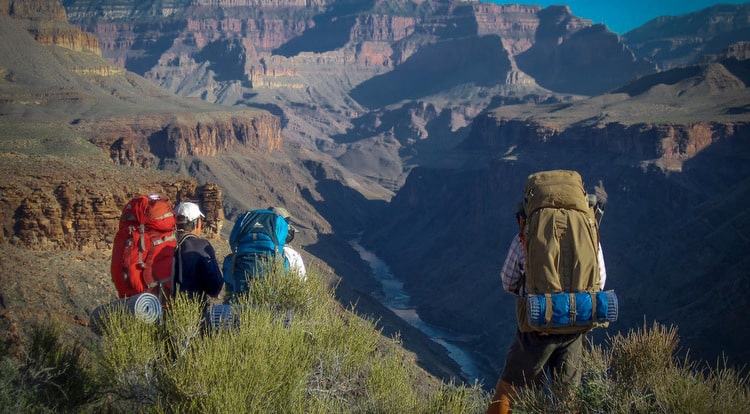
If you’re looking to explore all that the vast Grand Canyon backcountry has to offer, then a guided backpacking tour is for you! We carry everything we need on our backs for the duration of the trip. Our backpacking tours delve deep into the hidden wonders found below the rim and offer opportunities for exquisite solitude and discovery. All Grand Canyon backpacking tours include nearly all necessary gear (top-quality backpacks, sleeping bags, sleeping pads, tents, trekking poles, cooking and eating gear), all food for the duration of the trip, transportation to/from trailheads via Flagstaff, AZ, and a professional, knowledgeable Grand Canyon guide. The only things you need to bring are your personal clothing and footwear, raingear, personal toiletries, headlamp, and water bottles or hydration bladder.
Learn more about our Grand Canyon Backpacking Tours
List of Backpacking Trips
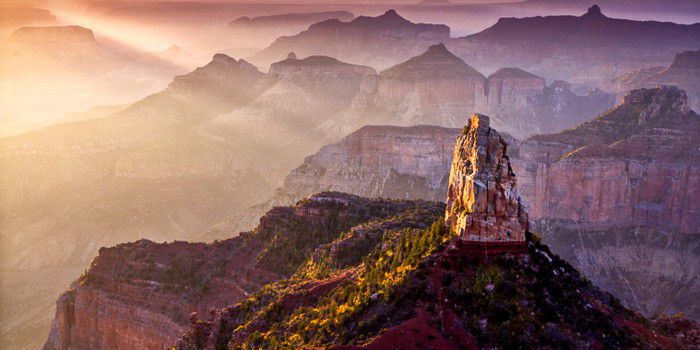
Enjoy the opportunity to hike and explore a wide variety of trails, viewpoints, and local secrets by day and spend your nights camping beneath the stars. Shady forests, evening campfires, and outstanding stargazing are a welcome treat on the Canyon’s mile-high rims. Or if you prefer a more strenuous endeavor, descend to the bottom of Grand Canyon for a vastly different perspective, staring up to the rims from the depths. Basecamp hiking tours are all-inclusive and provide all necessary gear (day packs, trekking poles, tents, sleeping bags, sleeping pads, all cooking and eating gear), delicious meals, and a professional, knowledgeable Grand Canyon guide to lead you safely, keep you well-fed, and enhance your Grand Canyon experience with a wealth of fascinating information.
Learn more about our Grand Canyon Basecamp Adventures
List of Basecamp Adventures
Lodge-based hiking tours.
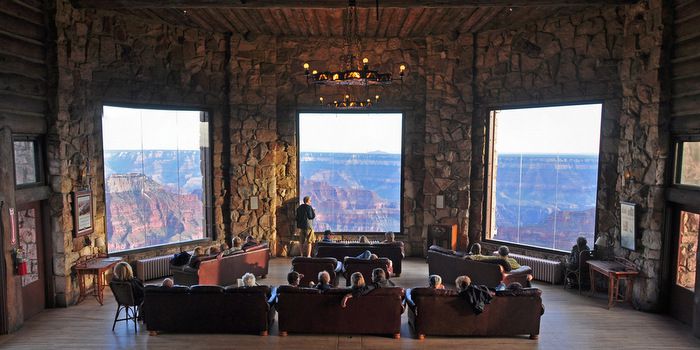
For ultimate comfort, consider one of our lodge-based Grand Canyon hiking tours. Hike and explore the park’s fantastic trails by day and enjoy showers, soft beds, and restaurant dining each evening. The majority of our lodge-based tours utilize lodging above the rim and embark on a variety of hikes, both along the rim and below, and return to the lodge in the evenings after a full day of exploring. Our Phantom Ranch hiking tour offers a chance to hike to the bottom of Grand Canyon and stay at the only developed tourist accommodations below the rim. All lodge-based Grand Canyon hiking tours include use of day packs, trekking poles, lodge accommodations, delicious meals, and a professional, knowledgeable Grand Canyon hiking guide.
Learn more about our Grand Canyon Lodge-Based Hiking Tours
List of Lodge-Based Hiking Tours

Our Grand Canyon guided day hikes offer an excellent introduction to one of the World’s Seven Natural Wonders. Enjoy fully-guided, expert-led hiking tours or sightseeing along the South Rim. We take the work out of your Grand Canyon vacation planning. Our local experts will help you discover all the best viewpoints, trails and hidden secrets of this world-renowned destination. All day hikes include lunch, trail snacks, day packs, trekking poles, and a professional, knowledgeable guide.
List of Day Hikes
Why travel with fsg, top-ranked tour company.
Don’t take our word for it. More than a thousand 5-Star reviews on TripAdvisor will attest to the quality of our adventures.
Exceptional Guides
Our guiding staff consists primarily of seasoned veterans who have been guiding professionally, full-time, for a decade or more. In addition to their extensive experience, our guides are fun, accommodating, approachable, entertaining, polite and just plain good people.
All-Inclusive Tours
We’re at work, you’re on vacation! We take care of all the logistics associated with a backcountry adventure and handling all the dirty work. Gear, food, permits, transportation…we have you covered and it’s all included.
Local Experts
The Southwestern U.S. is our home and our passion. We’ve been exploring this region for decades and know it intimately. This is our niche and nobody does it better.
APRIL SALE: Book now and get up to 60% off!
Best Machu Picchu Tours & Trips
Find the right tour package for you through Machu Picchu. We've got 608 trips going to Machu Picchu, starting from just 2 days in length, and the longest tour is 65 days. The most popular month to go is August, which has the most tour departures.
Best 250+ Machu Picchu tours with 5,974 reviews
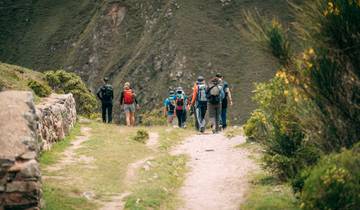
- Hiking & Trekking
- Sightseeing
- Christmas & New Year
Classic Inca Trail to Machu Picchu 4 Days
I had the best time on this tour, the trek was amazing and our tour guide, Monica, and all the porters were incredible. The food was brilliant and you can tell how much the tour guide and the porters care about and enjoy the jobs they do. It is relatively tough doing the 4 days hiking but Monica kept us at a good pace and never pushed us to go faster, encouraging us to take frequent breaks which also helped us enjoy the journey more. Her knowledge was amazing, and she explained the history around all the stops along the way and then gave us a brilliant tour once we arrived at Machu Picchu.
- Book With Flexibility This operator allows you to rebook your dates or tours with them for free, waiving change fees.

- In-depth Cultural
Machu Picchu Adventure
Mostly well organized. Elias and other tour guides were amazing and accommodating (and super patient with a tour group of 9 girls !)
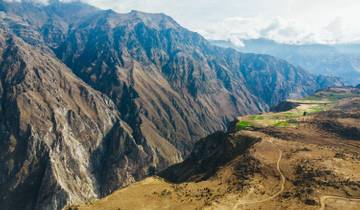
Absolute Peru
My highlight was the Inca trail. Exhilarating, energy sapping but awesome. The guides on the trail were simply the best. Without their guidance, motivation and expert knowledge I don't think I would have made it. I don't think G-Adventures can be beaten.
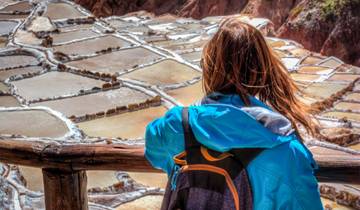
5 Day Cusco Travel Package: Cusco, Sacred Valley, Machu Picchu, and Maras Moray.
The "5 day Cusco Travel Package" with Kantu Tours was awesome. I had a great time. I really enjoyed the city of Cusco, Machu Picchu, the Sacred Valley, and all of the different tours. I was very impressed with the professionalism and communication of Waldir, who was the trip coordinator. All of the tour guides were great, but I will say that Marco was exceptional. He was very knowledgeable, professional, and passionate about his culture. For feedback, I'd say having some reading material about the various sites would be great, as well as some recommendations on local attractions, food options, or additional sites to add on. It would be nice as well to have more continuity with other travelers, which I know can be tough with everyone on different schedules. Overall, I highly recommend this tour.

INCA ADVENTURES - 7 Days (Lima and Cusco) with Domestic Flights
Very well organized! Plenty of activities! Excellent guys! Nice tour buses and very good hotels! I would highly recommend this tour!
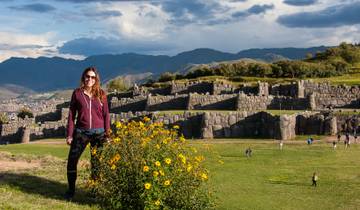
7 Day Cusco Travel Package: Cusco, Sacred Valley, Machu Picchu, Humantay Lake, and Rainbow Mountain.
Waldir was amazing in coordinating the tour, and I really enjoyed Peru! Thumbs up to the team :)
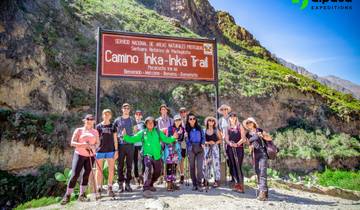
Classic Inca Trail Trek 4D/3N to Machu Picchu (Group service )
A fantastic, challenging journey with great guides. Everything was outstanding from the beginning to the very end. Highly recommend!

06 Days Cusco Machu Picchu - Humantay Lake And Rainbow Mountain
My husband and I had the best time on our tour and it was truly all thanks to our amazing tour guide Wilber. His knowledge is incredible and truly made it an enriching tour. He made me appreciate the amazing feats of the Incas and there is no way I would have enjoyed out time as much without his guidance. He made sure we had the best experience possible, adjusting the schedule to make it work for us and it truly gave up the best experience we possibly could have had. Thank you Wilber!!
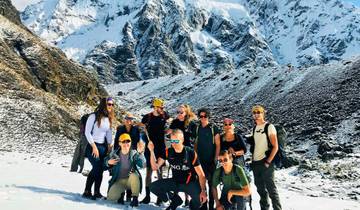
Ultimate Salkantay Trek to Machu Picchu - 5 Days
The trek was amazing! Beautiful views, comfortable sleeping arrangements and delicuius food. Miguel, our guide, was incredibly knowledgeable, encouraging and funny. He knows so much about every step of the trek and you can tell it is his passion. Valvino and Habran, chef and su chef, made so much delicious food, evening adding a few cakes they baked on stove top. So much beautifully prepared food, you never go hungry. Franklin, our porter, was quick and made sure each tent was set up perfectly. I have a lot of respect for this team that not only surpassed us in hiking, but doing so with heavy loads on their backs. Truly a great experience!

Premium Peru
Loved Peru. I found the people take great pride in their cities, culture and history and it shows in how clean the streets are, how great the food is and how wonderful the guides are. Loved the wildlife, the scenery and archeological sites too. My only downside was the airport.. Delayed flights and when trying to return home, no signage to show the directions from domestic (Cusco to Lima) to international section of airport. When I asked for help, I was told to go out the door, come back in the door next to it, only to find out that I needed to go outside, go to section adjacent and then go upstairs to departures which also had no sign there for "international departures". The LATAM staff gave me the run around on my luggage. One person said it would go automatically to Newark another said pick up your luggage in Lima and transfer to United. My luggage never arrived in Lima nor in Newark. When I arrived in Newark the United people said that LATAM was lying as it is never sent on directly and had to be collected and transferred by hand in Lima. I had to file a lost baggage claim upon final arrival in Canada . Still waiting for news.
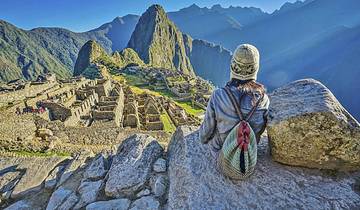
- Mountain Hikes
04 Day Classic Inca Trail to Machu Picchu - Small Group Service
Since past years we dreamed with visit Peru and take the inca Trail to Machu Picchu, a dream we fulfilled and one of the most memorable ones. Me and my partner did the 4 day inca trail with Inkayni Peru Tours. We were the only 2 in our group, which initially we were a little disappointed about, but it turned out to be a huge bonus. Our guide Javier also accompanied us to Huayna Picchu, which was another highlight of our trip. During the trip we had a lot of delicious local food prepared by porters. We had a very nice trip in the beautiful Andes. These memories will last us a lifetime. A huge thank you to Inkayni Peru Tours and our crew for an unforgettable trek!!
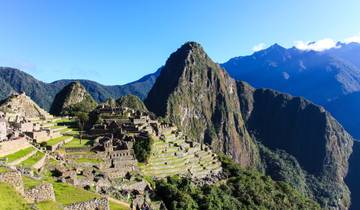
Hiking The Classic Inca Trail to Machu Picchu & Sacred Valley
I just want to make sure people can read my experience because I feel that maybe it can help with the decision to get the best experience. After traveling to 40+ countries and 7 continents, the whole experience was somewhat surreal and counts as my number one interaction with a tour company. Inkayni Peru Tours made the whole trip so easy, and affordable that all we had to do was kick back and enjoy the amazing sights and sites that the Sacred Valley has to offer. The visits at the archeological sites were awesome, we learned a bit more the inca culture. The Inca trail is incredible and all the more enjoyable with the need to carry only a light daypack while Inkayni team took care of everything else. Our guide Santiago was extremely knowledgeable in Inca history as well as local flora and fauna. This team is fantastic and thoughtful and I would highly recommend them for your trek. Not to mention, this is some of the most vast and and beautiful wilderness I've ever seen. Thank you Santiago and all the staff for making my trip to Cusco a memorable one! Gracias!
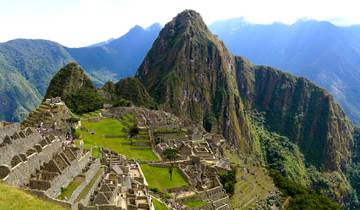
Explore Machu Picchu National Geographic Journeys
I really enjoyed the tour. If I could ask for anything different, it would have been more opportunities to interact with the local community for a more immersive cultural experience.
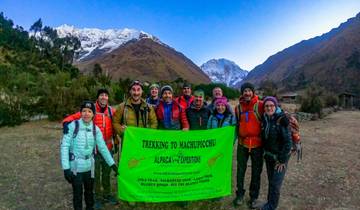
Ultimate Salkantay Trek 5D/5N with glass cabañas & hobbit house + hot tub jacuzzi.
I did a lot of research on different operators and am really happy I did the 5D/5N with Alpaca. They use a different schedule than most trekking companies so you're 1/2 a day ahead of the crowd, we always felt like we were the only ones on the trail. The food was delicious and the campsites were nice and clean, our guide Elisban was also very wonderful and took great care of us. Definitely would recommend!
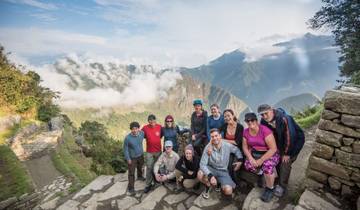
Inca Trail Express
Well organized, informative, exciting! Great value.
Best Machu Picchu Tours Reviews
We had a great hike. The views are amazing!
Amazing experience! The tour moves quickly so you see a lot in a short amount of time, which is exactly why I love these types of tours. I couldn't of asked for a better guide or group.
great guide, great sites to visit topped with Inka trail
Machu Picchu Destinations:
- Salkantay Trek (24)
- Lares Trek (17)
Machu Picchu Tours starting in:
- Cusco (314)
- Group (497)
- Fully Guided (381)
- Family (345)
- Hiking & Trekking (267)
- Explorer (234)
- Personalized (216)
- Partially Guided (194)
- Active (191)
- In-depth Cultural (160)
- Private (93)
- Self-Guided (30)
- Custom (26)
- Ocean Cruise (11)
- Coach / Bus (8)
- River Cruise (8)
- Food & Culinary (6)
- 3 Day Tours (47)
- 7 Day Tours (252)
- 10 Day Tours (96)
- 2 Week Tours (43)
- 3 Week Tours (34)
- 4 Week Tours (5)
- 1 Month+ Tours (6)
- Spring 2024 (371)
- Summer 2024 (453)
- Fall / Autumn 2024 (460)
- Winter 2024 / 2025 (416)
- Spring 2025 (276)
- Summer 2025 (255)
- Fall / Autumn 2025 (246)
- Winter 2025 / 2026 (219)
- April 2024 (295)
- May 2024 (385)
- June 2024 (413)
- July 2024 (430)
- August 2024 (442)
- September 2024 (440)
- October 2024 (441)
- November 2024 (432)
- December 2024 (407)
- January 2025 (255)
- February 2025 (199)
- March 2025 (253)
- April 2025 (255)
- May 2025 (251)
- June 2025 (253)
- July 2025 (241)
- August 2025 (242)
- September 2025 (241)
- October 2025 (232)
- November 2025 (227)
Other Regions in Peru
- Peruvian Amazon (56)
- Tambopata (50)
- Peruvian Coast (45)
- Iquitos (29)
- Colca Canyon (28)
- Rainbow Mountain (23)
- Huascaran National Park (17)
- Huaraz (14)
- Arequipa (12)
- Machu Picchu and the Sacred Valley: Hike, Cost & Difficulty
- How to get to Machu Picchu
- Machu Picchu & Peru tickets, permits, vaccinations, and visa
- Do I need a guide for visiting Machu Picchu?
- Machu Picchu Packing List (Tried and Tested)
- Training for Machu Picchu & How to Prepare (Updated 2024)
- Best time to visit Machu Picchu (Peru) in 2024/2025
- Weather in Machu Picchu in 2024/2025
Travel Styles
- Budget (78)
- Luxury (25)
- Singles and Solo (350)
- For Couples (119)
- Young Adults (15)
- Seniors (273)
- Meet the Team
- Work with Us
- Czech Republic
- Netherlands
- Switzerland
- Scandinavia
- Philippines
- South Korea
- New Zealand
- South Africa
- Budget Travel
- Work & Travel
- The Broke Backpacker Manifesto
- Travel Resources
- How to Travel on $10/day
Home » Southeast Asia » Vietnam » Backpacking Guide
Backpacking Vietnam Travel Guide (BUDGET TIPS • 2024)
Backpacking Vietnam will ignite your senses in a way you have never experienced before. This unique country in the middle of Southeast Asia is unlike anywhere I have ever been before.
The colours, the lanterns and the smiley faces of Vietnam will forever be etched into my mind. Packed with rice-paddy fields, roaming buffalos and zooming motorbikes; there is so much to see and experience in this magical land.
Not only delicious but also kind to the budget; Vietnam has some of the best and most fascinating street food in the world. From a simple, delicious Bahn Mi to fresh Bun cha. Prepare for your mind (and your taste buds) to be blown.
Vietnam leapt into the 21st century so fast, that much of its countryside is still buffering to catch up – which I hope it never does.
While you can spend weeks exploring Vietnam’s off-the-beaten-track jungles and villages, you can also encounter EPIC cities with bustling traffic and fast wifi. Vietnam has it all (and more!)
Vietnam is a big ol’ place with rich diversity in terms of its cities and towns; each offering something completely unique from the next. You’ll want to be as prepared as possible to make the most of your time backpacking Vietnam
That’s where I come in! I’ve compiled all of the wisdom I have gathered from my trips into this ULTIMATE backpacking Vietnam guide. From the best places to visit to the boring (but important) stuff like insurance, I’ve got you covered.
Avast! Let’s get into the good stuff and stock you up with everything you need to know before backpacking Vietnam.
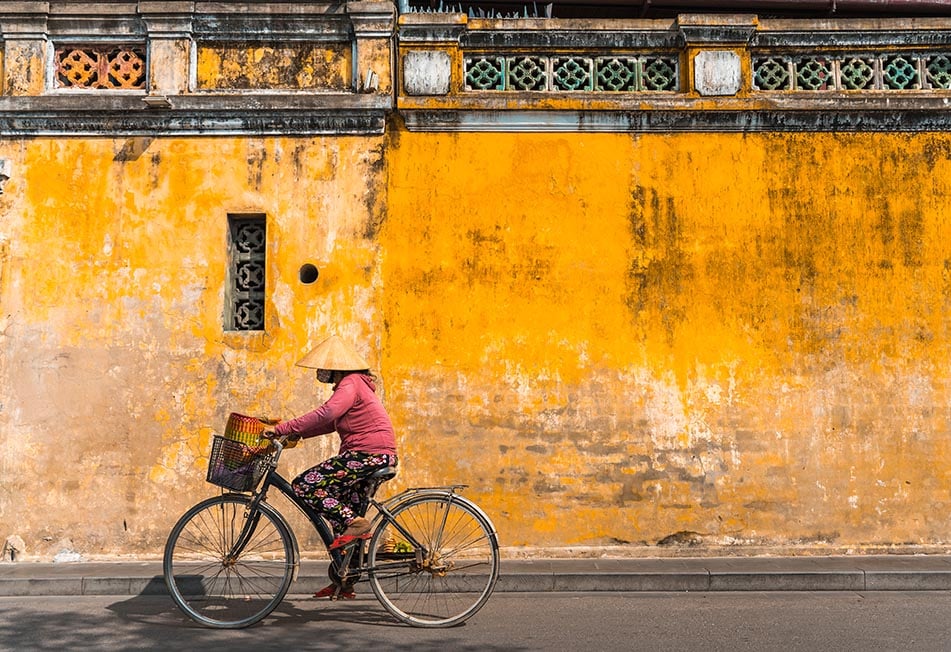
Why Go Backpacking in Vietnam
Travelling Vietnam has many of the classic markers of backpacking Southeast Asia . It still presents all the gorgeous sights: rolling green highlands, steaming jungles, twinkling azure coastlines, and ancient delights. There’s still an element of debauchery waking up still drunk in a city you don’t know. However, there’s an unshakable element of maturity that Vietnam asks of you.
I think it’s partly that the horrific history of this country is still in your face. Some of the mountains are still pockmarked from the insane bombing they endured in the war of the 1960s and 1970s. It’s also partly because Vietnam was not a well-visited destination until the 1990s. Even today isn’t full of cookie-cutter tours to the same degree as its neighbouring countries.
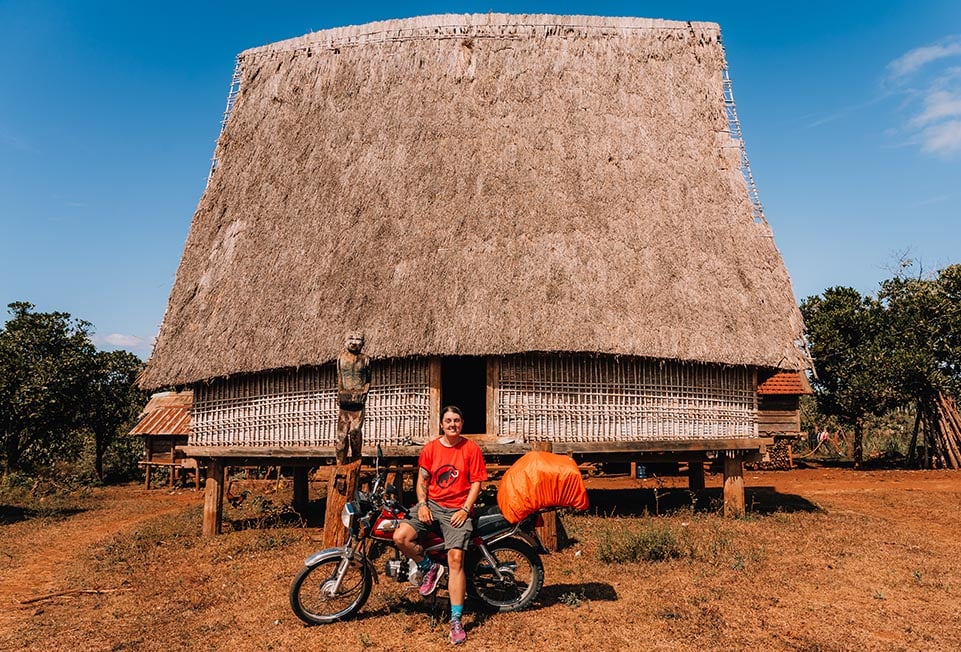
It’s also incredibly cheap to travel here. Vietnamese cuisine is sublime, the cities offer a metropolis-meets-charming-chaos style of living and the mountains? The mountains are damn fine. This has made it quite a popular base for English teachers, digital nomads, and other veteran traveller ex-pats.
I found Vietnam to be a heady collision of worlds. One day you might be chilling in a Vietnamese village that hasn’t seen foreigners in forty years, and the next you’re kicking it with Vietnamese students who deal weed to the ex-pats next door.
This all leads to this feeling that this is Southeast Asia. Or this is what Southeast Asia could be if there was a little more responsible tourism. Vietnam is a world away for most backpackers – and it sticks with them as a highlight of their years vagabonding Southeast Asia.
Best Travel Itineraries for Backpacking Vietnam
Best places to visit in vietnam, top things to do in vietnam, backpacker accommodation in vietnam, vietnam backpacking costs, best time to travel to vietnam, staying safe in vietnam, how to get into vietnam, how to get around vietnam, working in vietnam, culture in vietnam, faqs about backpacking vietnam, final advice before visiting vietnam.
Below we have put together the grand tour itinerary. This is great if you have over 3 weeks to backpack Vietnam, and best completed by motorbike or bus! If you only have 2 weeks, aim to complete the first or second half of the itinerary.
Vietnam is generally split into two regions, the north and the south. Deciding on where to stay in Vietnam , and what the best area for you is, can be a pretty hard decision.
If you only have less than two weeks, you can focus on one region. Another popular way to backpack Vietnam is to combine a trip with a neighbouring country. For example, combining Southern Vietnam and Cambodia.
2-Week Travel Itinerary for Vietnam: The Quick Trip
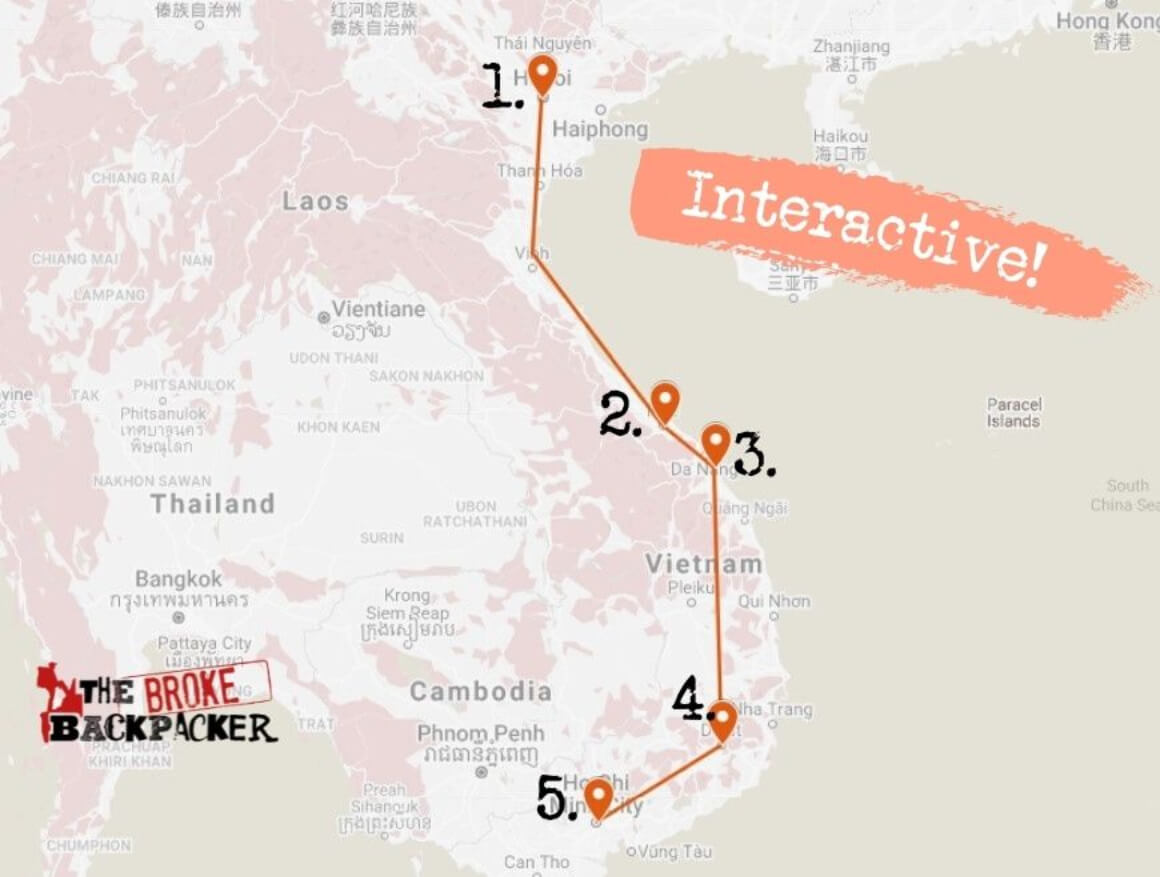
This trip is best done over about two weeks. It lends itself to bus travel in between some of Vietnam’s most beautiful places . You can start at either end, but I will talk about it from north to south.
Flying into Hanoi will be an experience in itself. Hanoi is an epic blend of modern skyscrapers and streets full of mouthwatering foods. Be sure to check out the Temple of Literature while you’re there.
After spending a few days in Hanoi, pop down the coast to the old imperial capital of Hue . My love affair with Vietnamese food was truly consummated here. Yes, if I could bed with the bun bo hue, I would. From Hue, it’s not too far to another beautiful Vietnamese city – Hoi An.
Hoi An has a slow pace of living and it’s a good place to catch up on the first leg of your trip. You can stroll through the picturesque streets, and catch up on some market shopping.
The chill times continue in Da Lat . It’s well worth taking a motorbike trip through the mountains on the way here -it’s stunning! Finish up your trip in Ho Chi Minh City !
This trip has the best of Vietnam in one neat little 2-week package!
1-Month Travel Itinerary for Vietnam: The Grand Tour
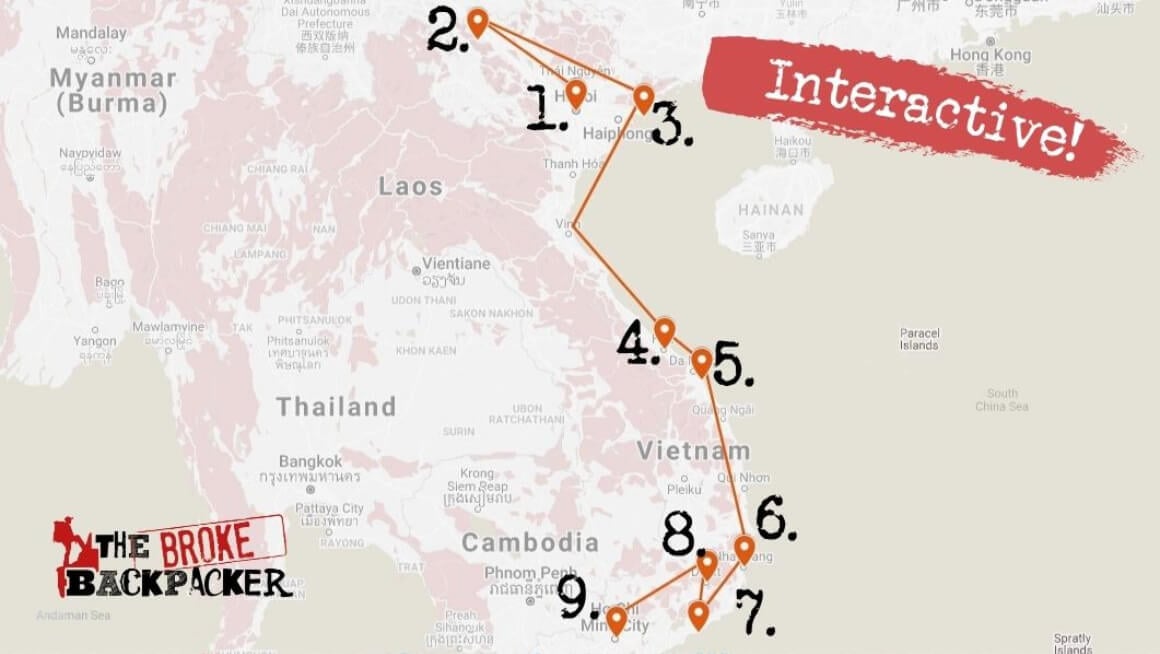
This itinerary can be complete in either direction, but I will discuss it from North to South. Start your trip backpacking in Hanoi – Vietnam’s beautiful capital city. Make a side trip to the countryside of Sapa, where you can ride your motorcycle through the hills and explore waterfalls. Then arrange a trip to Halong Bay, a highlight on any Vietnam trip.
Head south, stopping to stay in the town of Hue , before moving on to visit Hoi An , where you can get an affordable, good quality suit made. Then go to Nha Trang to let loose, get a bit wild and have some fun on the water. A popular water sports area with the likes of windsurfing, paragliding and jet skiing on offer; there’s enough adrenaline here to keep even the most adventurous happy.
Head to Mui Ne and for a short stay in Da Lat , then on to Saigon (Ho Chi Minh) , the starting point for most backpackers travelling Vietnam. Saigon is a crazy bustling city. You can also go explore the Mekong River, a paradise for wildlife.
As I mentioned earlier, backpacking Vietnam is a collision of worlds. Some cities feel like old-world Asia, others still retain strong French colonial influences, and others are straight-up party hubs. Vietnamese cities are still among my favourite in the world – the heady mix of skyscrapers and good internet with carts selling pig ears and Chinese medicine peddled throughout them.
There is so much to unpack and discover that I can give you my favourite places to go in Vietnam, but inevitably you’ll discover your own hidden gems.
Always, there is colour and the smell of pho.
Backpacking Hanoi
One of my favourite cities in all of Asia, Hanoi is a beautiful combination of Old meets Modern: a gateway to the incredible mountains and scenery to the North and the warm beaches and bustling cities to the south. Hanoi is worth spending at least a couple of days exploring, on foot, or by bicycle. You could end up joining the ranks of ex-pats that call Hanoi home.
In Hanoi, it is definitely worth visiting the War Museum, easily spotted it has a great collection of weaponry marking the entrance. It costs just $3 to get in and it’s a good introduction to exploring Vietnam’s war-torn past. Oh and be sure to check out the Old Quarter . It’s here that the traffic looks most like schools of fish, and that the best bowls of noodles can be found.
As for my personal favourite places to visit in Hanoi ? Other than the street carts selling banh mi until the early hours of the morning, it’s got to be the Temple of Literature.
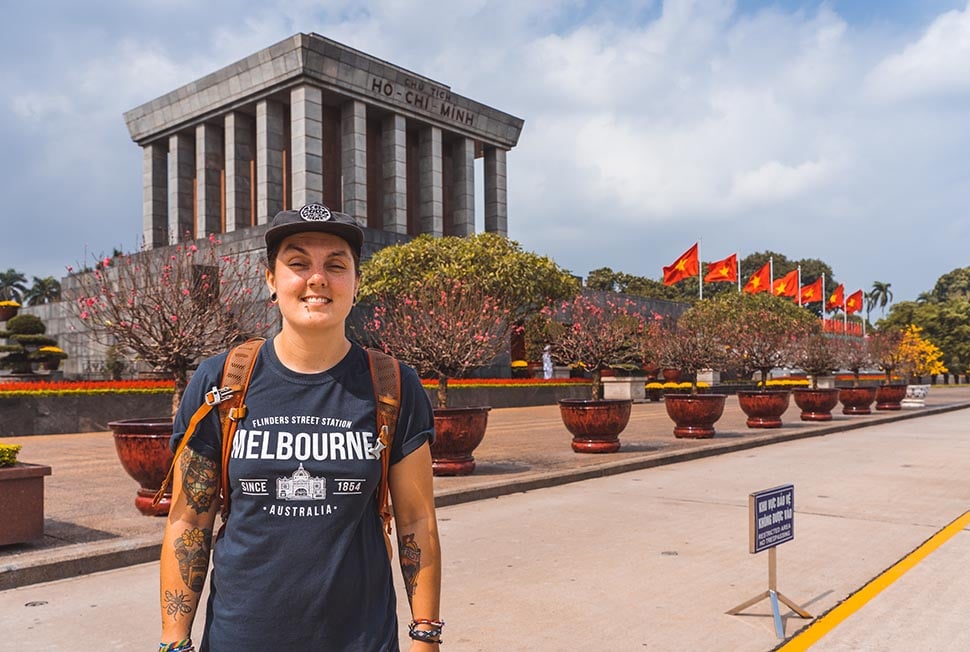
The Temple of Literature was founded in 1070. It was Vietnam’s first university where the rich and incredibly brainy attended. Even if you’re not into the history behind it, its handcrafted architecture is pretty breathtaking. If you aren’t templed out, definitely head over to the ‘old section’ of the city and stop by Bach Ma Temple aka the oldest temple in the city. If you only see one temple while backpacking through Hanoi , make it this one.
Hoan Kiem Lake, also known as the ‘Lake of the Restored Sword’. The legend goes that once the Emperor defeated the Chinese from Hanoi, a giant golden turtle grabbed the sword and disappeared into the lake to restore it to its rightful owners. All traffic here is banned between 7 P.M. to midnight every Friday to Sunday turning this beautiful place into a meeting place for friends, giving it an almost funfair vibe. If you’re an early bird and like morning exercise, 6 am Thai Chi takes place every morning.
Hanoi is a popular place to buy and sell motorbikes from or to other backpackers. It functions as both an entry and exit point to this epic country. As such, there is a contagious and frenetic energy in the hostels. You bump shoulders with those that have got stuck and fallen in love with Vietnam and those who are moving on. What a place to trade travel tips over a pint!

Backpacking Sapa
An explorers paradise, you are likely to arrive here early in the morning. Check into one of the awesome hostels in Sapa , leave your bags here, and go in search of Motorbikes for hire ! It’s around $10 per day to hire a motorbike. The price of freedom is cheap here.
Getting lost on a Motorbike, exploring the beautiful countryside is just one of the many adventurous things to do in Sapa . Drive to the beautiful Thac Bac Waterfall , around 15kms outside Sapa main town. A legend says if you look at the falls long enough, you will see a white dragon peering down into the valley below.
Get off the beaten track while backpacking Vietnam and take a day trip out of Sapa town and visit the incredible Ban Pho Village. One of the friendliest tribes in South East Asia, it stands out among others due to the Mongolian Ban Ha population here. Settled on a Mountainous cliffside these guys literally live life on the edge. Come and explore the culture, talk to the villagers and try not to get too drunk off the legendary corn wine they will insist you taste. Multiple times.
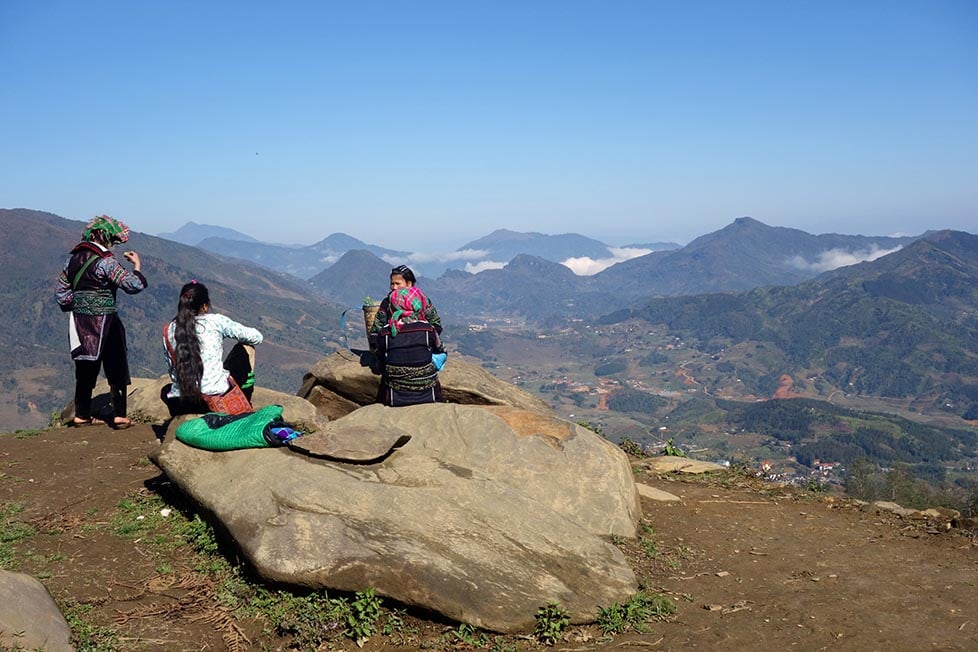
If motorbikes aren’t your thing, you can still make an awesome tour of Sapa Valley by bicycle. If you go with a company all of your food and extra transportation (not on a bicycle) is covered, but it is easy enough to organize yourself.
There are some truly awesome treks around Sapa and you could spend a few days (or a few lifetimes) here exploring. For the more adventurous, why not conquer Vietnams highest peak , Fansipan. Not quite Everest but standing at 3,143m it’s pretty impressive; it is possible to do in a day but most will recommend at least 2 days. You can do this hike solo or with trekking companies in the area.
Backpacking Ha Giang
If you fancy heading off on some even more adventure-fuelled forays, consider treks around the area or better yet, motorbiking the Ha Giang Loop ! It’s one of the most under-appreciated areas in Vietnam and attracts far fewer Western tourists than Sapa.
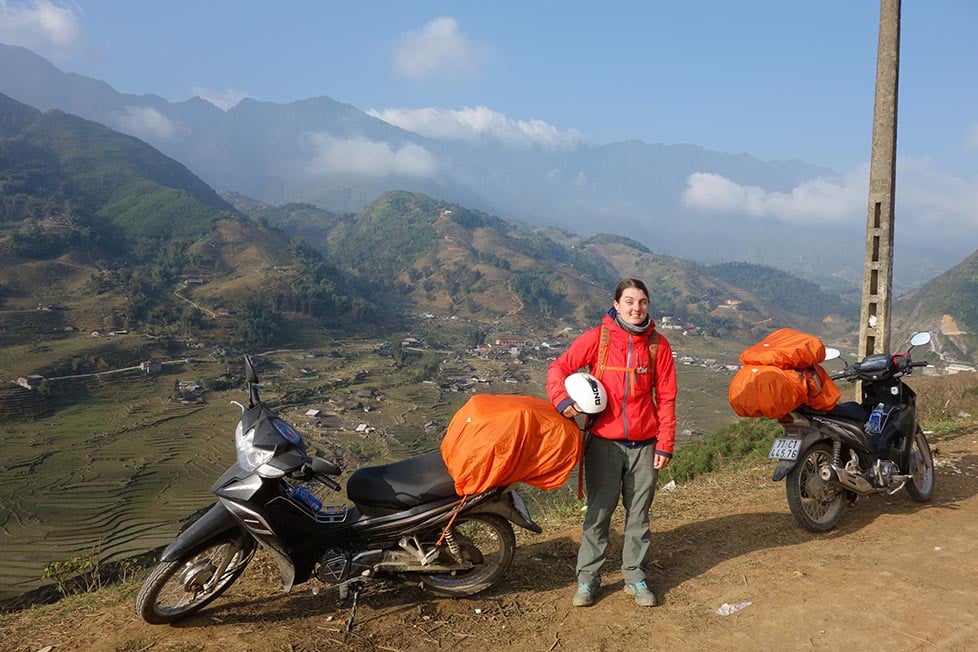
Although it’s getting more and more popular every day, there are still some hidden gems here, like the remote lake of Na Hang . There’s plenty of ripe adventure material left to find travelling in this part of Vietnam.
When looking for accommodation in Ha Giang, be sure to check out our friends at Hmong Moonshine! They are great people (ask for Tuyen) and the property itself is very beautiful. You can also learn how to make local moonshine while staying here! Allegedly, this is where I was drunk under the table by a Vietnamese grandma… Turns out I can’t hold my moonshine as well as the locals – who knew!
Backpacking Halong Bay & Cat Ba Island
This UNESCO world heritage site, often known as the Eighth Wonder of the world, is an unmissable stop whilst backpacking Vietnam. Almost everyone who visits Halong Bay does it as part of a pre-arranged package. I’m not normally one for taking the tour option but it is pretty impossible otherwise. The tour’s not too expensive and it was totally worth it.
We had a great time and were surrounded by some awesome people. It’s essential to prebook your trip and accommodation in Halong Bay ; we booked a two day, two-night tour from our stay at the Central Hanoi Backpackers Hostel.
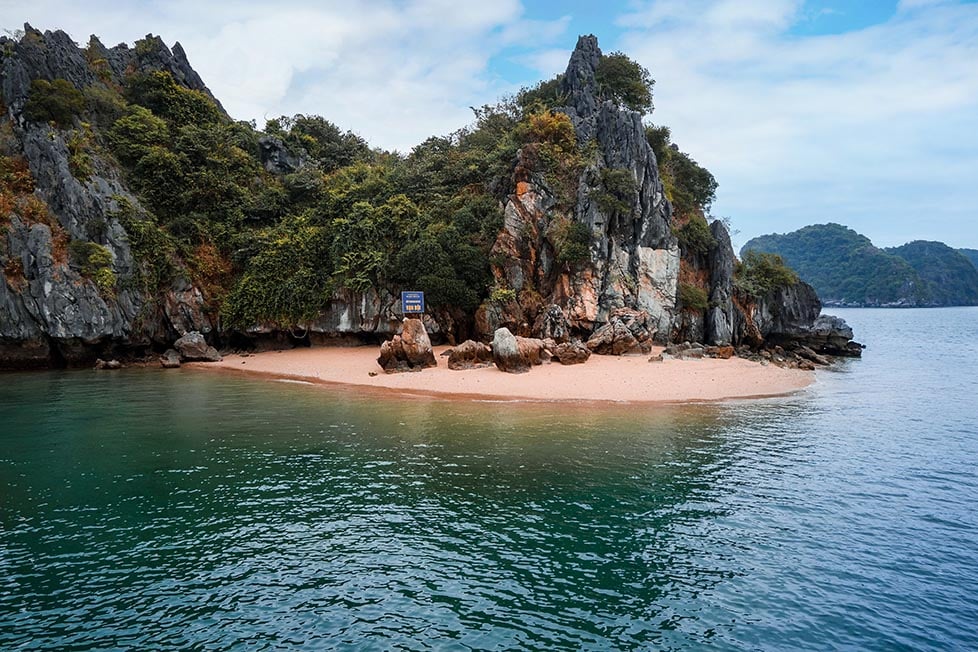
Whilst exploring Halong Bay we stayed on a cool ‘ Junk Boat ‘ one night and in beach huts the other. Being part of a prepackaged tour meant all our food, transport and everything else was included, making it a hassle-free adventure.
Once the tour is over you can either stay on Cat Ba island and check out the rock climbing scene or head back to Hanoi for a night before travelling South.
Backpacking Hue
This is a beautiful small town offering a great break in the journey from Hanoi to Hoi An. One of Vietnams most royal cities, Hue is littered with impressive historic sights, delighting the inner nerd in us all!
There are also heaps of cool backpacker hostels in Hue with bouncing little traveller vibes. It is one of Vietnam’s sticky spots – it’s just so easy to get stuck exploring and chilling out here. There is a slower pace of life compared with some of the other cities in Vietnam.
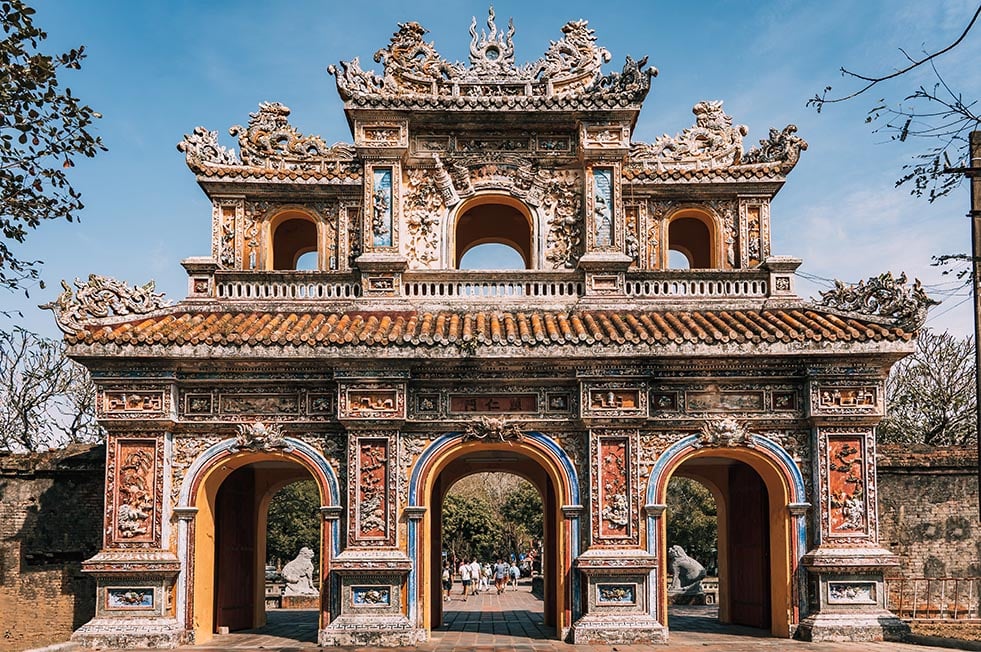
Check out the impressive Citadel on the other side of the perfume river. This impressive piece of history is made up of 4 separate citadels and will take a full day to explore. So you can hire a bike to get around!
There is a ton of things to do in Hue and you could easily spend weeks here. Check out the Thien Mu Pagoda ; standing at 21 metres high and decorated with mind-blowing architecture this pagoda is a pretty spectacular eyeful.
If rest and relaxation are what you are after the beaches of Lang Co and the mineral hot pools of Phong An are just a short distance away.
Backpacking Hoi An
Hoi An is THE place to get tailor-made clothes whilst backpacking Vietnam. There are loads of things to do but most backpackers visiting Hoi An come here to get a suit made.
Clothes tend to take at least 3 days to make so you want to get measured as soon as possible… So first stop? Find a tailor!
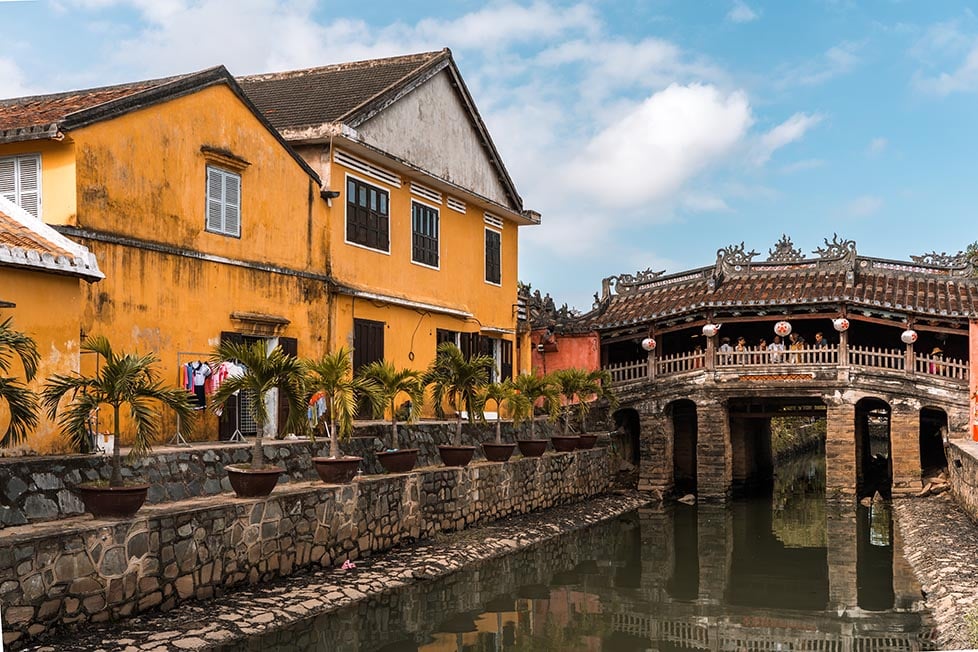
Check into Mad Monkey Hoi An – dorms start from $7 USD a night, and it has an awesome pool! Spend a few days exploring the local area by bicycle. (The hostel provides them for free.) It’s located close to the beach which is great on hot days, as you don’t have to go far!
Looking to get back into the city? Da Nang is a great day trip, only a 40-minute drive from Hue; the sandy beaches, caves and Buddhist shrines among many other activities make for the perfect day out.
Backpacking Nha Trang
Nha Trang is a perfect place to let loose, get a bit wild, and have some fun on the water. A popular water sports area with the likes of windsurfing, paragliding, and jet skiing on offer, there’s enough adrenaline here to keep even the most adventurous happy. No need to prebook; all can be arranged from the beach.
The best area to stay in Nha Trang is down the side alleys and not on the main road. It’s quieter, cheaper, and just more chill.
Something I found interesting about Nha Trang was its popularity with wealthy Russian tourists. I wasn’t expecting to eat mystery meat soup next to a large Slavic man with a shiny watch but hey, that’s travelling! Some of the bars popular with backpackers here can err on the side of dodgy , so keep your wits about you.
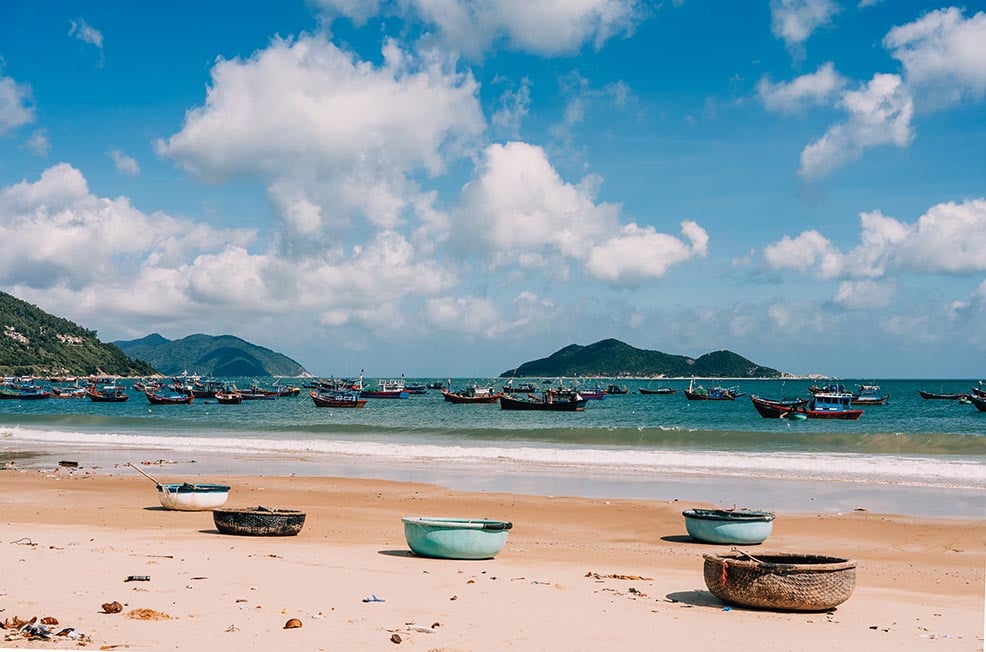
There are some great backpacker hostels in Nha Trang with awesome social vibes. The beaches are beautiful and there’s a pretty laid back vibe to backpacker life here.
There is a strange feeling that hovers over Nha Trang that I can’t quite put my finger on. It made me love it all the more, but still, there’s an oddity to it.
I think it’s got to do with the availability of cheap drugs and the associated changes to locals – and tourists who get hooked – that this brings. Rumours of Russian mafia activity abound and some of the hookers are pretty good pickpockets too. This all contrasts with a stunning, postcard-perfect exterior to create the ‘odd’ feeling.
Nha Trang is one of those interesting places that you’ll be glad you went to, but also, probably glad you left.
Backpacking Lak Lake
Recover from the heavy nights in Nha Trang and break up the journey to Dalat by venturing out to the tranquil and beautiful Lak Lake, the largest natural body of water in central Vietnam.
This region of Vietnam is home to the Mnong people . An ethnic group indigenous to Vietnam (with a small population in Cambodia too), the Mnong people, rather curiously, are renowned for designing one of the world’s oldest instruments: the lithophone .
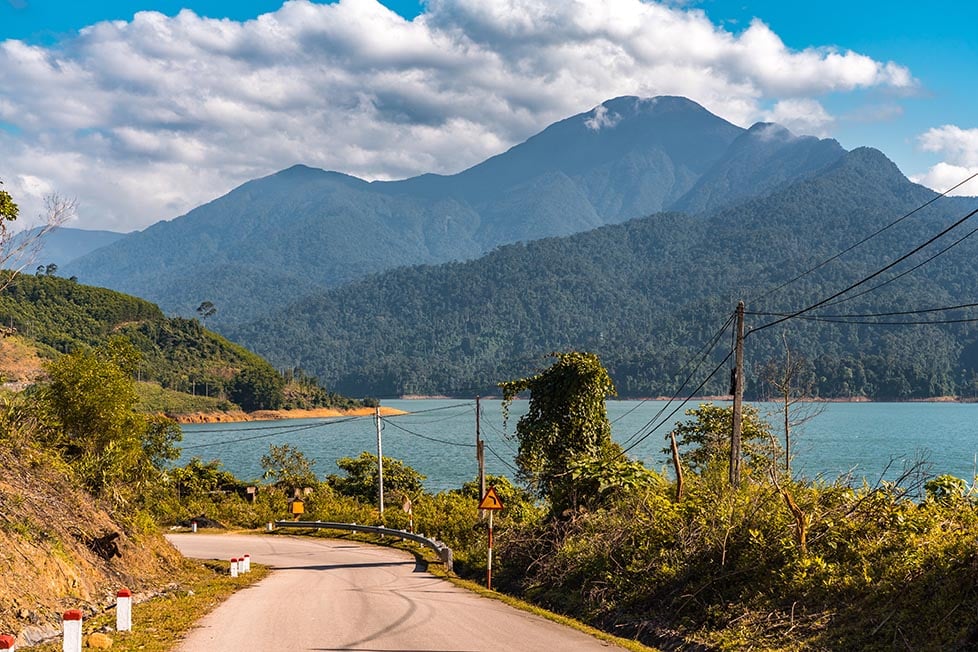
Paddle out in a kayak at sunset and enjoy the still waters and beautiful scenery. You can also explore Jun Village : A Mnong settlement of wooden stilted houses. It’s a very beautiful place to go in Vietnam and a slight departure from the regular tourist trail.
Backpacking Mui Ne
From Nha Trang you can head to Mui Ne which is home to one of the best beaches in Vietnam . You can check out the awesome sand dunes or hire a motorbike from Easy Rider for roughly 30 dollars and ride up the mountain paths to Dalat.
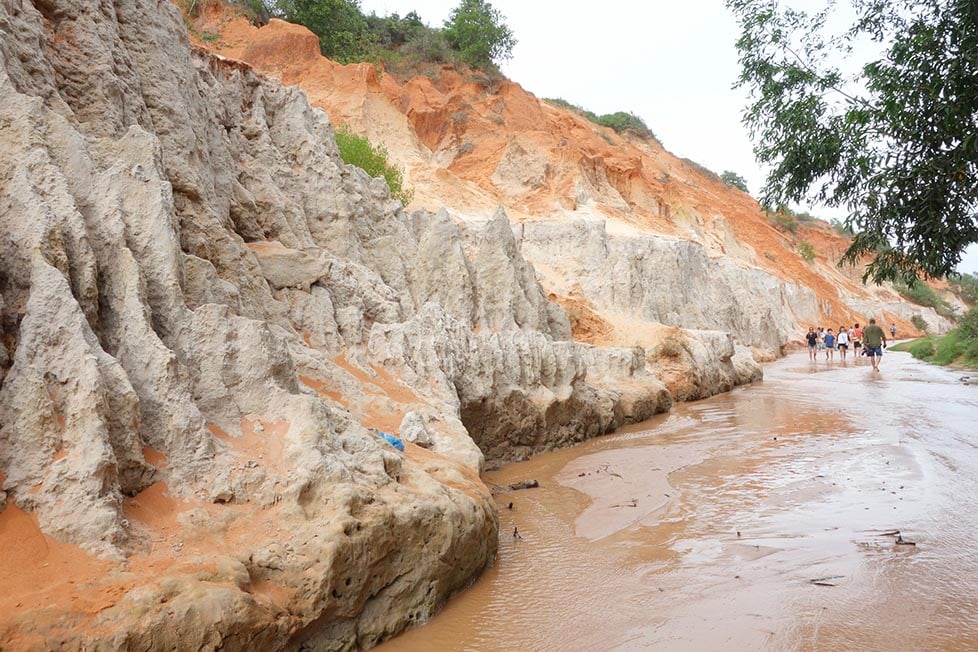
There isn’t much other than the sand dunes, beaches, and a fairy stream in Mui Ne. Ostrich riding is totally a thing though, which sounds totally awesome but it’s really kind of fucked. I am going to please ask you to consider your actions when engaging with animal tourism .
That is to say, please don’t ride the ostriches. Bombing the sand dunes is plenty fun enough.
Backpacking Da Lat (Dalat)
There is not a whole lot to do in Da Lat, but the ride itself is very scenic. I managed to crash and hurt myself quite badly because the roads are difficult, and if you have limited riding experience I suggest you hire a driver and just go on the back of the bike.
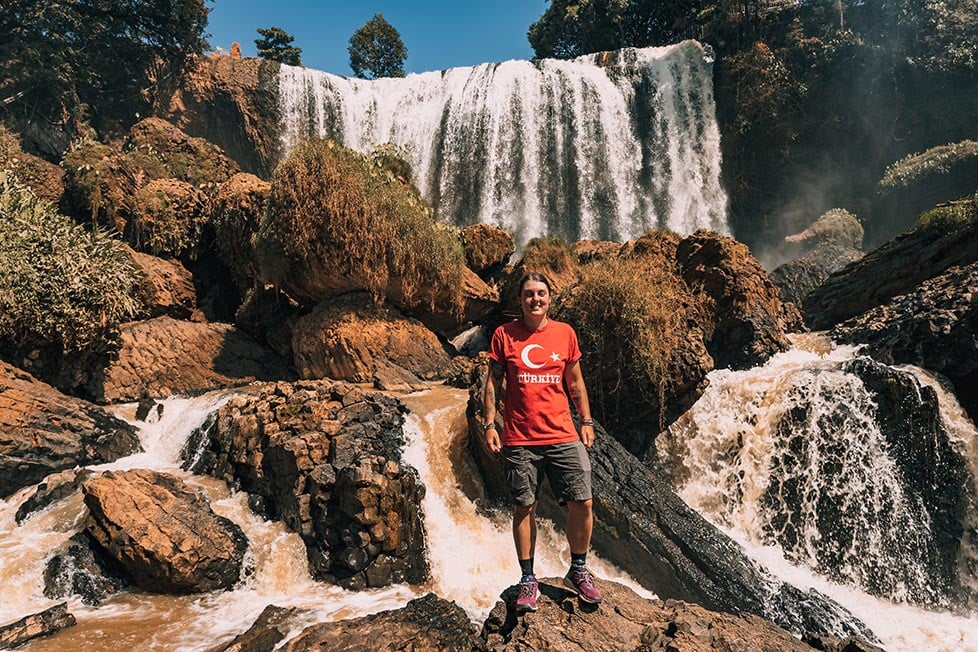
Although it’s not as stacked with activities as a lot of other destinations in Vietnam, there are still awesome budget accommodations in Dalat for backpackers to stay at. It’s a nice place in Vietnam to stay and take a breather for a few days.
I liked slowing down and getting to know the quieter side of Vietnam while in Da Lat. I couchsurfed here and we barbequed octopus and played hopscotch with the kids until late in the night. It’s one of those little memories that didn’t feel special at the time but has stuck out as a wonderful memory as the years have gone on.
Backpacking Ho Chi Minh (Saigon)
The starting point for most visitors to Vietnam, backpacking in Ho Chi Minh City (formerly known as Saigon) is a crazy bustling experience. Expensive for us broke backpackers in comparison to the rest of the country, I recommend venturing into the ‘real’ Vietnam pronto.
Although there are plenty of cool things to do in Ho Chi Minh , many of the ‘must-see’ sights around are related to the terrors of the Vietnam War.
The War Remnants Museum is a haunting insight into the life of those fighting on the front line during the period of 1954 – 1975. It costs around $1 to enter.
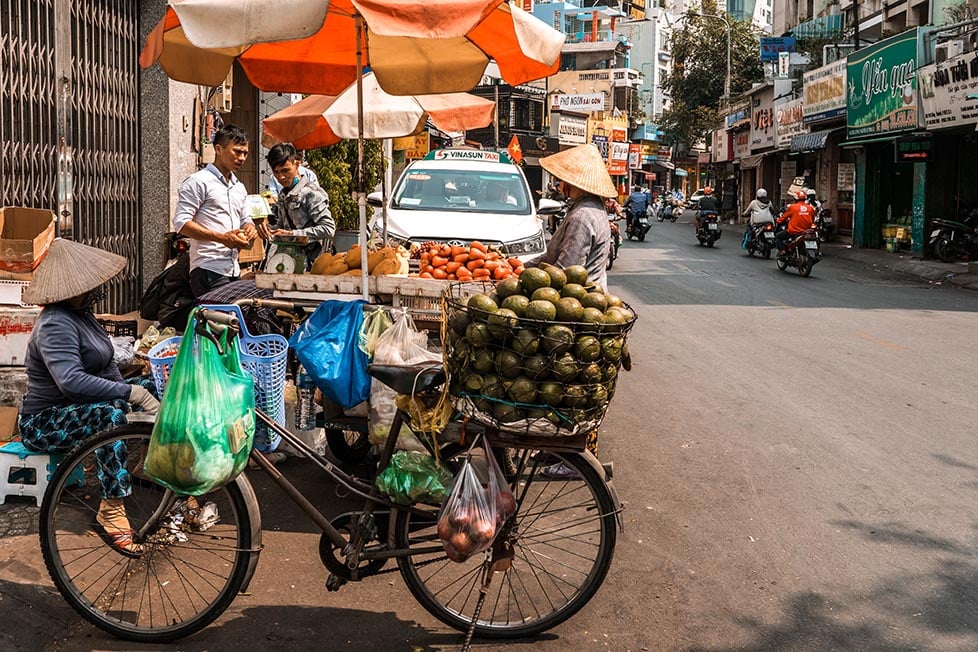
Take a trip out of the city and tour the incredible network of Cu Chi Tunnels . Brave claustrophobia and crawl around the safer sections of the restored tunnels, popping (or squeezing) out at the other end. You can pre-book half-day tours of the tunnels through the Hide Out Hostel travel desk.
From Ho Chi Minh, it is easy to arrange a bus onwards to Phnom Penh in Cambodia. You get your Cambodian visa for a fee on the border.
Mekong Delta
Mekong Delta is often referred to as the ‘Rice Bowl’ of Vietnam (there are lovely rice paddies everywhere) this maze of rivers, swamps and islands are home to tiny villages floating on the banks of the Delta.
Paddle into the floating markets and pick up some cheap trinkets, you’ll find anything and everything. Unfortunately, the market is becoming increasingly popular and much of the trinkets being sold are aimed at those travelling Vietnam.
If you have a day to kill in the Mekong consider renting a vintage Vespa scooter and checking out the Delta countryside and local culture.
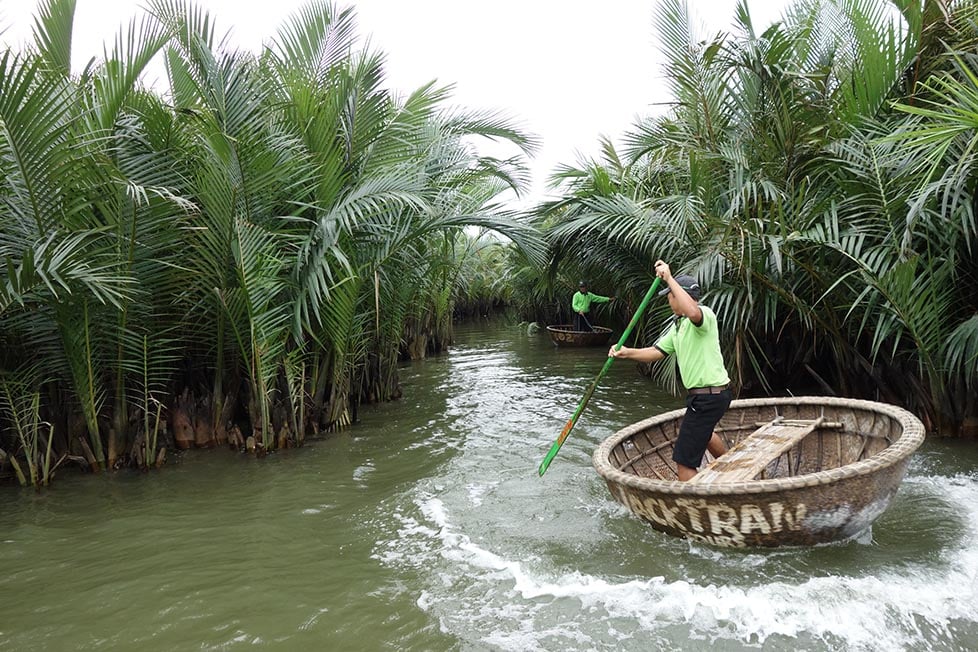
Moving past the ‘tourist’ trap section, the Mekong Delta is a paradise for local wildlife. The quiet and noise of nature is a refreshing change from the busy streets of Ho Chi Minh.
Trips to the Mekong can be as quick as half a day or a couple of days, depending on budget. However, I would recommend spending at least a day exploring the Mekong Delta. The best place to stay when exploring the Mekong Delta is Can Tho , just south of Ho Chi Minh
Getting Off the Beaten Path in Vietnam
Vietnam is certainly shooting up as a popular destination for both backpackers and holidayers. While you can stick to exploring the typical areas of Vietnam that most people visit, there is so much more to discover once you get off the tourist trail.
The Ha-Giang Loop (which I’ve already mentioned) is one such choice. It’s not one of Vietnam’s completely hidden gems anymore, however, it’s still far from touristic. Even attempting the Ha-Giang Loop by motorbike is going to give a feeling of real adventure material while simultaneously bringing you into closer contact with local communities.
As an extension of that, travelling Vietnam by motorbike (while definitely a common activity for tourists) brings even more potential for exploring the unseen sides of the country. The good thing about having your own wheels is that you can go anywhere! No village is too far off the beaten track.
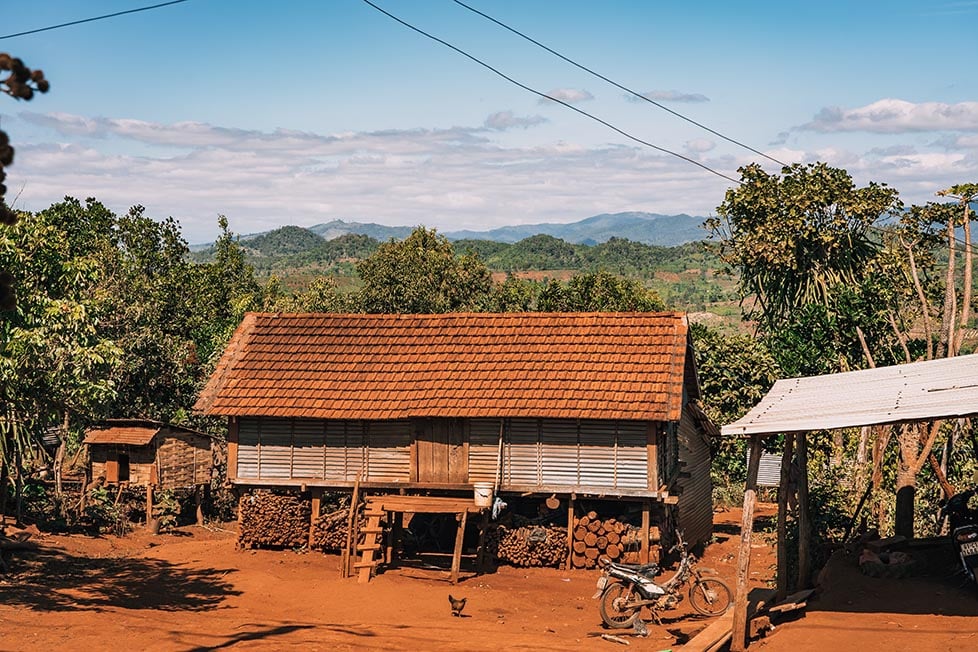
I’m also going to throw the suggestion of the Ta Xua mountain range at you. Close to Moc Chau village (another underexplored locale), the Ta Xua mountains give the feeling of walking above the heavens themself. Mountain trails wind the ranges over oceans of rolling cloud formations – sunrise is a real treat.
And lastly, if you’re packing for a beach day but prefer the feeling of lost isolation, Vietnam has heaps of lesser-known beaches to explore too! Just heading north up the coast from Nha Trang is going to land you in some dope spots like Quy Nhon . If you’re still keen to branch out from there, just rent a bike and start looking!

We’ve tested countless backpacks over the years, but there’s one that has always been the best and remains the best buy for adventurers: the broke backpacker-approved Osprey Aether and Ariel series.
Want more deetz on why these packs are so damn perfect? Then read our comprehensive review for the inside scoop!
Vietnam is loaded with cool activities – both for lovers of tourist affairs and for lovers of the road less travelled. Here’s my top pick of the coolest things to do in Vietnam!
1. Cruise Halong Bay
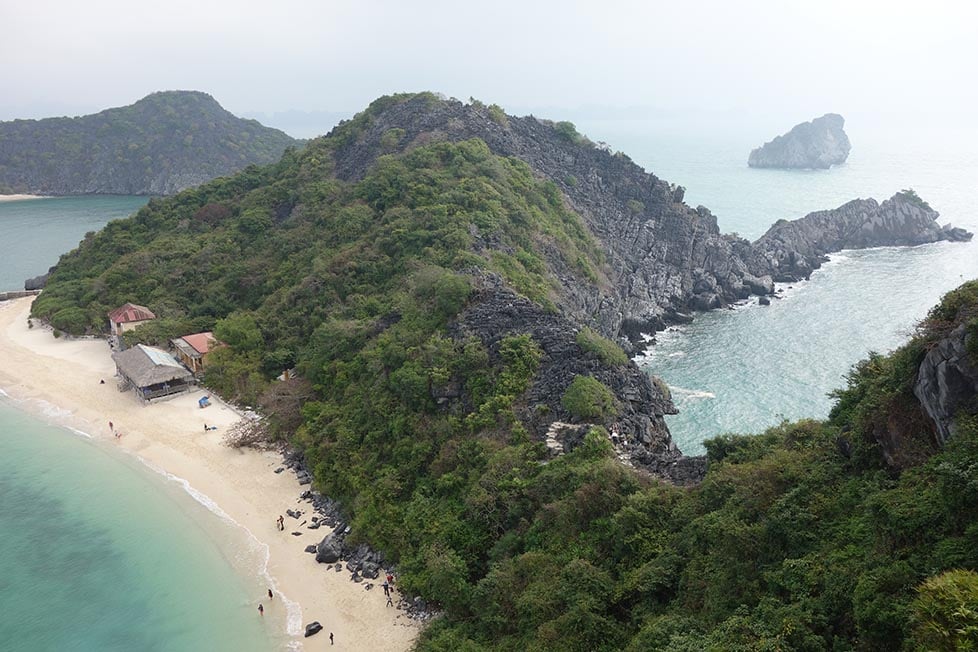
No journey to Vietnam is complete without a trip to check out Ha Long Bay. Admire the breathtaking scenery of mountainous limestone rocks while cruising Halong Bay. When the humidity hits take a leap off the side and into the tranquil water below and splash around till your heart’s content.
2. Squeeze into the Cu Chi Tunnels
See how the Vietnamese used underground tactics during the Vietnam War. Squeeze yourself into the tiny tunnels, overcoming claustrophobia as you try to experience what the Vietnamese Soldiers once did back in 1954.
3. Trekking in Sapa
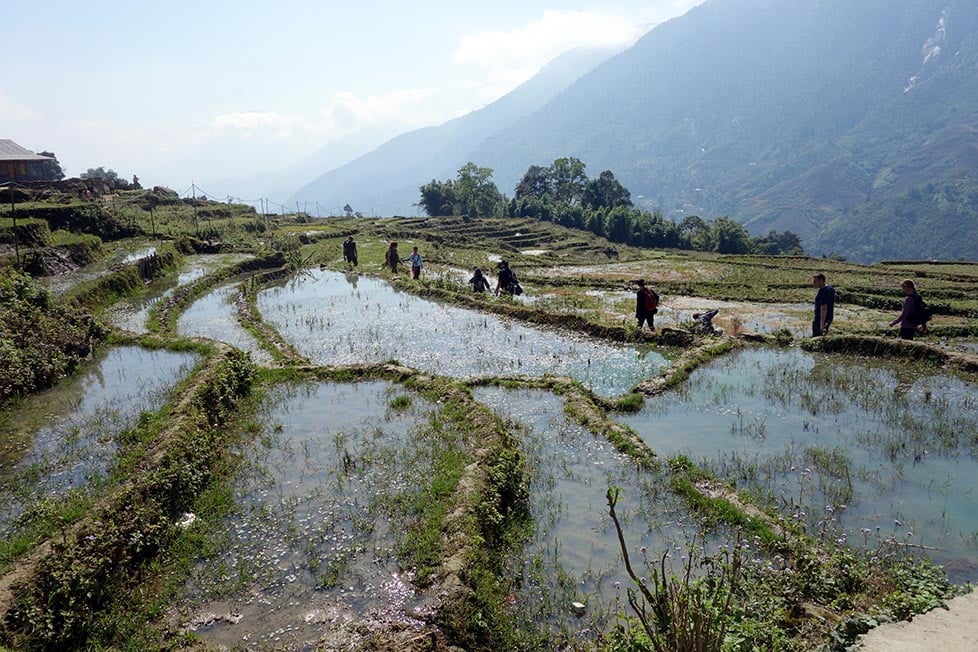
Leave the hustle and bustle behind and check into some of the most beautiful mountainous landscapes in Asia. Home to Vietnam’s highest peak Fansipan, Sapa is a dream to trek, and standing at 3,143m it’s pretty impressive. If this is a bit too adventurous, enjoy the day walks or simply kick back and take in the beautiful views.
4. Suit up in Hoi An
Thailand has Elephant Pants and Vietnam has incredible Silk Suits. Watch the talented tailors at work in Hoi An and get your own creation made cheaply, beautifully, and in just a few hours!
5. Motor Bike across the Country
This is a fantastic way to see the countryside. Of course, more information is coming about exploring on 2 wheels in the motorbike travel section below.
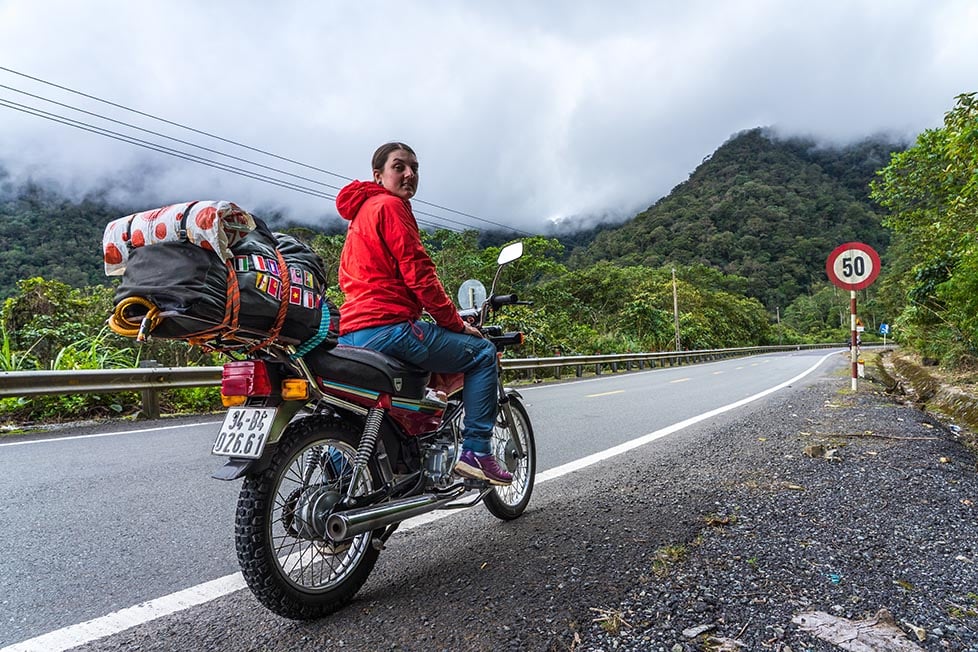
6. Water Puppet Show
Originating as far back as the 11th Century from the villages of the Red River Delta in Northern Vietnam, Water Puppet Shows are incredible. Lasting from as little as 5 minutes to hours, these are shows that you have to check out when travelling in Vietnam.
7. Bar Hop Ba Hoi
Friendly bars with cheap beer, laid back feels and even more friendly locals. Often located up sketchy looking side streets, these little bars are a great place for a laugh and cheap beer.
8. Street Food
For as little as $1 for a great meal, you really have no excuse not to try some of the local delicacies. We’re talking the classic Banh Mi and fetal duck eggs. There’s turtle soup, pho, and beef in every way you can imagine. This country is simply spoiled with the finest food in Southeast Asia.
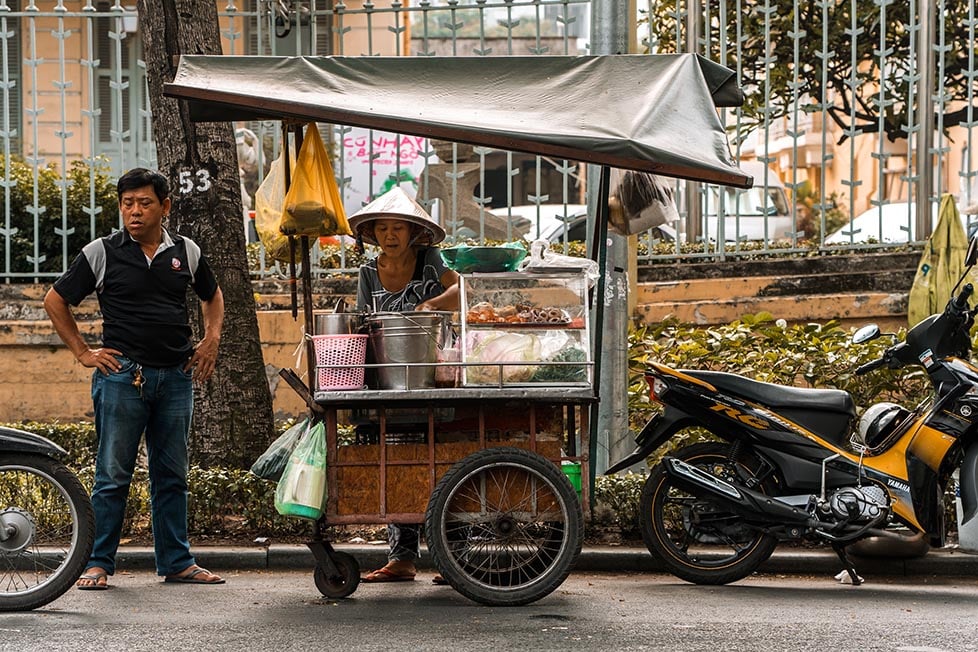
Wanna know how to pack like a pro? Well for a start you need the right gear….
These are packing cubes for the globetrotters and compression sacks for the real adventurers – these babies are a traveller’s best kept secret. They organise yo’ packing and minimise volume too so you can pack MORE.
Or, y’know… you can stick to just chucking it all in your backpack…
Vietnam has some of the cheapest accommodation in Southeast Asia . You can find a dorm bed for as little as $3 USD a night or a private room with a fan for $7 USD .
The hostel scene is pretty awesome. It’s super diverse with party hostel, co-working spaces, and grungy, old school hostels all in the mix.
You can expect to meet some interesting characters while staying in a hostel . This is where you can trade travel stories and pick up tips about where to go next. If hostels don’t sound like your thing – or maybe you just want to indulge in a double bed for a special occasion – Vietnam also has a range of great Airbnbs.
You can stay in whole apartments for less than $50 a night. When that one guy at the hostel has told you the story about how he almost became an international drug smuggler but then he remembered about his ethics so he just dodged taxes instead, an Airbnb can seem more appealing for a night. And even luxury Airbnbs in Vietnam is not out of the question for a solo backpacker in Vietnam looking to splurge for one night.
In between swanky Airbnbs and party hostels are a bunch of great guesthouses and homestays. Many of these aren’t listed online but are well known via word of mouth.
Wherever you choose to stay in Vietnam, it’s not going to be expensive – but it will be a great time!
The Best Places to Stay in Vietnam
Travelling in Vietnam can be cheap without you really having to think about it. I spent around 20 dollars a day in Vietnam, sometimes a little more when splurging on a day trip or imported beer. You could very easily travel on less than 10 dollars a day, while still enjoying yourself.
As I’ve (hopefully) made clear in this guide, I LOVE Vietnamese food! Mostly that’s because it’s so damn delicious, but partly it’s because it’s so cheap. If you spend $3 on a meal in Vietnam, you’re going to be full to the brim and overdosing on tastiness.
A l ocal beer costs around 80 cents , although imported beers are still expensive. Going out for a night to see some music or have drinks in a bar can be done for less than $10! (And that’s drinking A LOT!)
Local transport is very cheap; though an airconditioned bus ride will be around $15 . Generally speaking, the further from the city centres that you get, the cheaper life becomes.
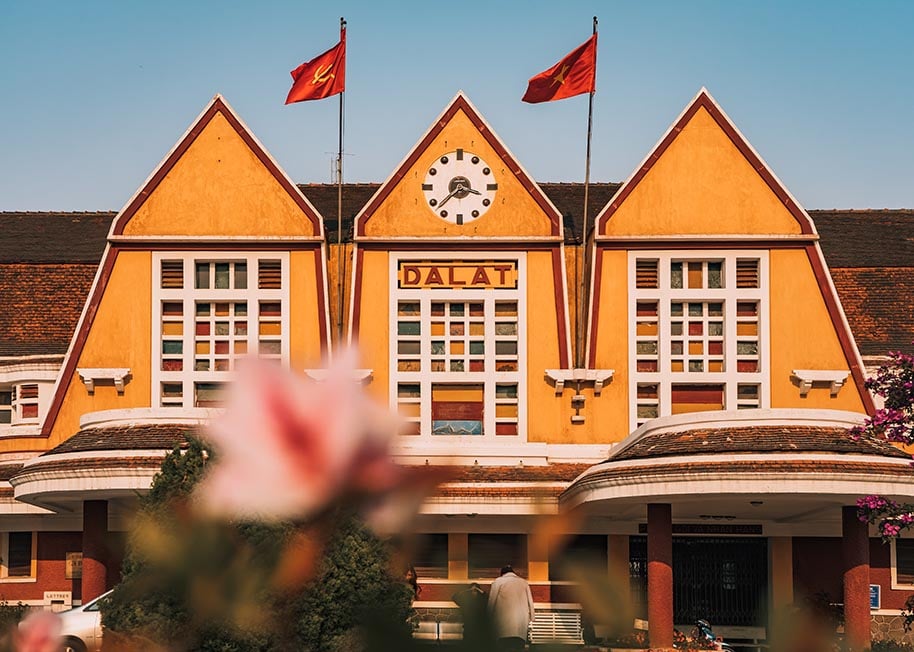
A Daily Budget in Vietnam
Money in vietnam.
Ever wanted to throw cash in the air and feel like a millionaire? Well, the Vietnamese Dong allows every broke backpacker travelling in Vietnam the opportunity to feel rich. As of 09/11/21, $1 US = 22,660 Vietnamese Dongs – crazy huh?
Plus the name is Dong… Which, when enjoying multiple dirt-cheap beers, is consistently amusing.
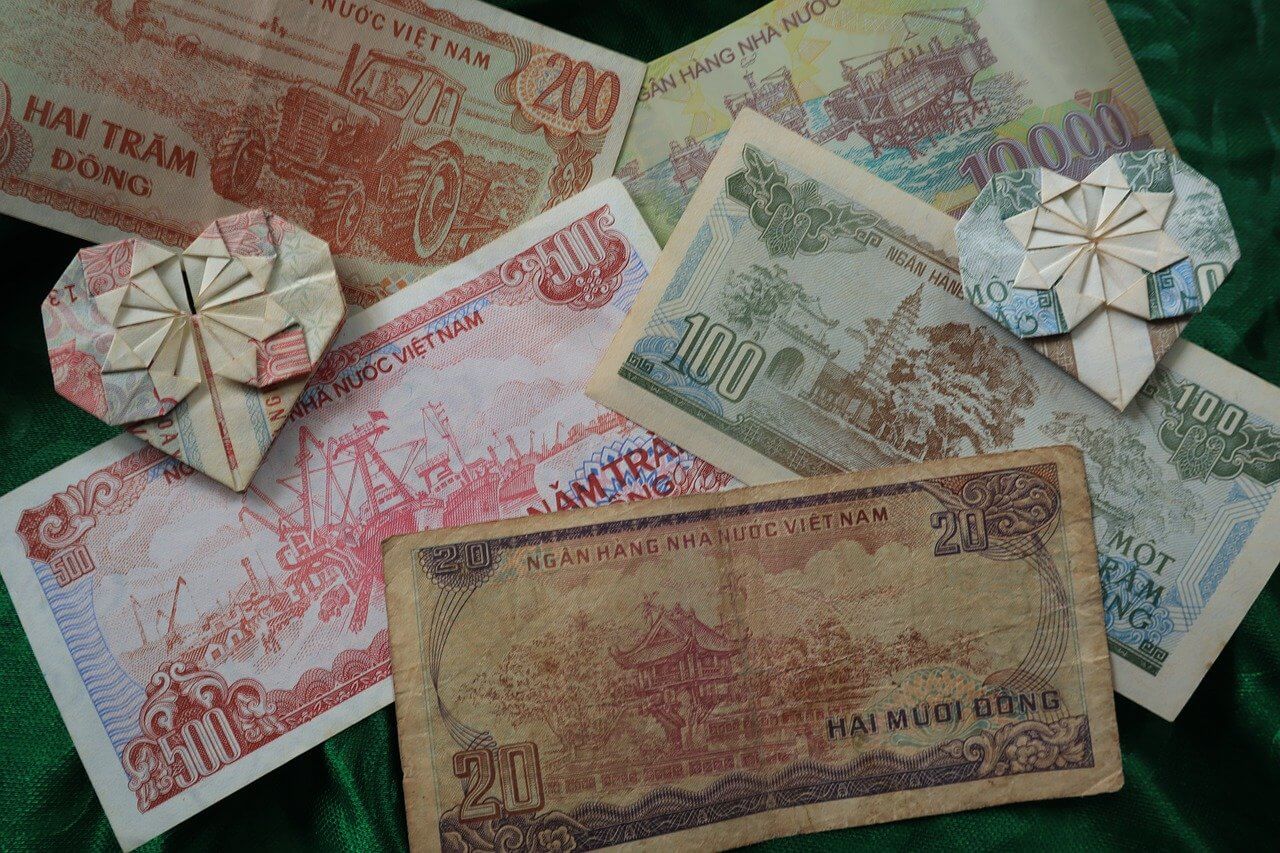
Don’t try to obtain Vietnamese currency before entering the country, it’s pretty much impossible. If you managed to snag some, you’ve probably had a pretty bad exchange rate. Take US dollars into Vietnam, you’ll find many shops and services accept US dollars.
Credit and Debit cards are widely accepted in the more built-up areas such as Ho Chi Minh and Hanoi but many of these, charge pretty insane withdrawal fees so it’s advisable to avoid small ATM transactions and get out a bunch of cash at once – just make sure you hide it well.
For all matters of finance and accounting on the road, The Broke Backpacker strongly recommends Wise – The Artist Formerly Known as Transferwise! Our favourite online platform for holding funds, transferring money, and even paying for goods, Wise is a 100% FREE platform with considerably lower fees than Paypal or traditional banks. But the real question is… is it better than Western Union? Yes, it most certainly is.
Travel Tips – Vietnam on a Budget
Vietnam is one of the cheapest destinations in Asia. However, it is still possible to go a little out of control, especially when the currency makes you feel like a millionaire. Standard budget backpacking tips aside, here are my top tips to keep it for backpacking Vietnam on a budget…
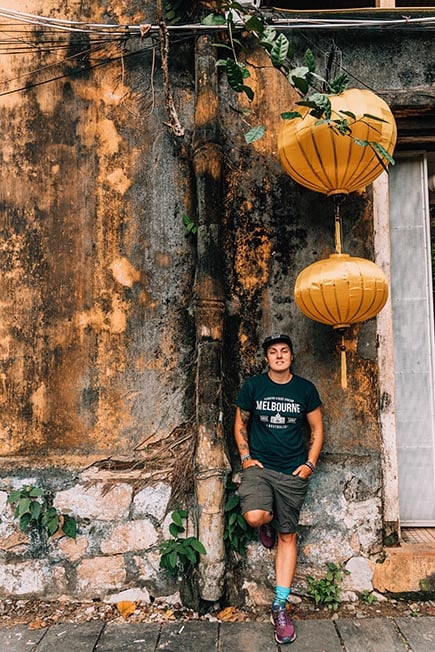
- Camp : Vietnam has some incredible countryside and coastline, views that shouldn’t be wasted by sleeping inside. Camping is most popular within the National Parks up and down Vietnam. Pack up your best backpacking gear and take adventures outdoor.
- Take the Bus : The national bus service or ‘the chicken bus’ has great links throughout Vietnam, even into some of the more remote areas. For as little as $1 a ticket, I’d happily sit next to a chicken for a few hours.
- Eat Street Food : Seriously, the food here is so cheap – and so declicious – you might as well indulge! Cooking for yourself probably won’t end up saving you much when you can get a meal on the street for $2 USD. Plus, you can’t make pho like the grandma up the road can!
- Understand the Money : If, like me, you don’t have a great mathematical brain, use a currency app to help you understand how much you are spending. Knowing the value of the currency will help you avoid being ripped off or spending too much without realising.
- Couchsurf: To connect with the locals, try meeting people with Couchsurfing. You’ll get a free place to stay, and you’ll probably make a friend!
- Keep it Local : Where possible drink the local beer, eat the local delicacies, and for day trips, try to use local companies. By using local companies you can haggle a bargain price that larger, international tour operators won’t offer. Plus supporting local businesses thrive is awesome!
- Hitchhike: I didn’t hitchhike whilst backpacking Vietnam but I have a couple of amigos who have hitched the whole length of the country, no worries. Getting around by hitchhiking is a great way to travel for free, meet local people, and kick plans to the kerb!
- Budget-friendly Tours: If you do happen to go on any guided tours, at least make it a tour where you can pay it off in instalments. Global Work and Travel have the broke backpacker in mind with this one. You can even choose the amount per instalment! There are loads of Vietnam tour options to tickle your fancy.

Why Should You Travel to Vietnam with a Water Bottle?
Whilst there’s a lot that we can do when it comes to travelling responsibly , reducing your plastic consumption is one of the easiest and most impactful things you can do. Don’t buy one-use water bottles, don’t take plastic shopping bags, and forget straws. All of this just ends up in landfills or in the ocean.
There’s nothing worse than showing up to a picture-perfect beach, only to discover plastic bottles littering the sand. One way to get around this is by investing in a premium filtered travel bottle like the Grayl Geopress. You can filter any kind of water, save money on buying endless plastic bottles – and sleep easy knowing you’re not contributing to the plastic bottles lining our beautiful beaches.

Drink water from ANYWHERE. The Grayl Geopress is the worlds leading filtered water bottle protecting you from all manner of waterborne nasties.
Single-use plastic bottles are a MASSIVE threat to marine life. Be a part of the solution and travel with a filter water bottle. Save money and the environment!
We’ve tested the Geopress rigorously from the icy heights of Pakistan to the tropical jungles of Bali, and can confirm: it’s the best water bottle you’ll ever buy!
Vietnam is a country with multiple weather patterns ranging from monsoon rains, cold snaps, and hot, humid sunny days. It can be hard to catch the whole country at a consistent time of year. But no fret, it is possible!
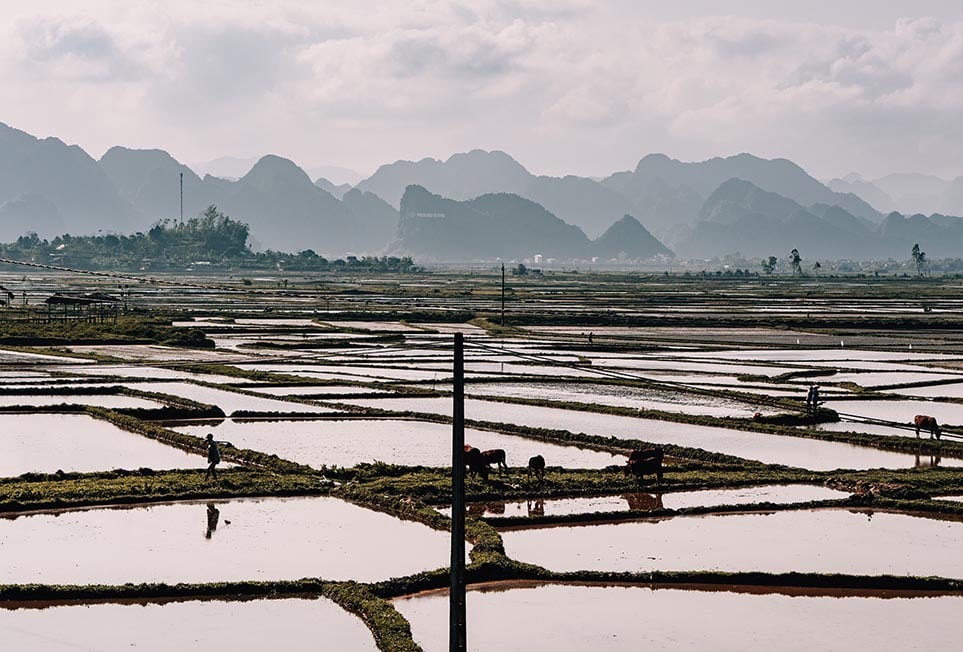
If you are planning to backpack Vietnam from top to bottom, the best time of year generally is September – December (Autumn) and March – April (Spring). These times of the year are your best weather window, where you might be lucky enough to see the whole country in sun!
Looking for specifics? Let me break down by regions, the best time of year for backpacking Vietnam:
- North Vietnam : October to May will give you dry weather the majority of months. Expect some colder temperatures in the mountains and from March onwards, a little more rain as it gets more humid.
- Central Vietnam : February to July is the best time of year to avoid heavy rain. Temperatures will hit the upper 30s in June to August.
- Southern Vietnam : December to April is the ‘dry’ season. Temperatures will rarely fall below 20 degrees and will reach up to 40 degrees come March/April.
What to Pack for Vietnam
Make sure you get your packing for Vietnam right! On every adventure, there are 6 things I never go travelling without:

Snoring dorm-mates can ruin your nights rest and seriously damage the hostel experience. This is why I always travel with a pack of decent ear plugs.

Hanging Laundry Bag
Trust us, this is an absolute game changer. Super compact, a hanging mesh laundry bag stops your dirty clothes from stinking, you don’t know how much you need one of these… so just get it, thank us later.

Sea To Summit Micro Towel
Hostel towels are scummy and take forever to dry. Microfibre towels dry quickly, are compact, lightweight, and can be used as a blanket or yoga mat if need be.

Monopoly Deal
Forget about Poker! Monopoly Deal is the single best travel card game that we have ever played. Works with 2-5 players and guarantees happy days.

Grayl Geopress Water Bottle
Always travel with a water bottle! They save you money and reduce your plastic footprint on our planet. The Grayl Geopress acts as a purifier AND temperature regulator. Boom!
With these essentials, I still make sure to do a rundown of my full backpacking packing list .
Vietnam is extremely safe for travel. Violent crime is almost nonexistent in Vietnam. Petty crime and pickpocketing can be an issue in the cities however, so just watch your valuables or leave them locked at your hostel. Where backpackers need to be careful is riding a motorcycle.
Vietnam’s cities are hectic, and the countryside has windy roads and animals roaming around. Even though road tripping with a motorcycle is a huge part of Vietnam tourism, I don’t recommend this for beginners.
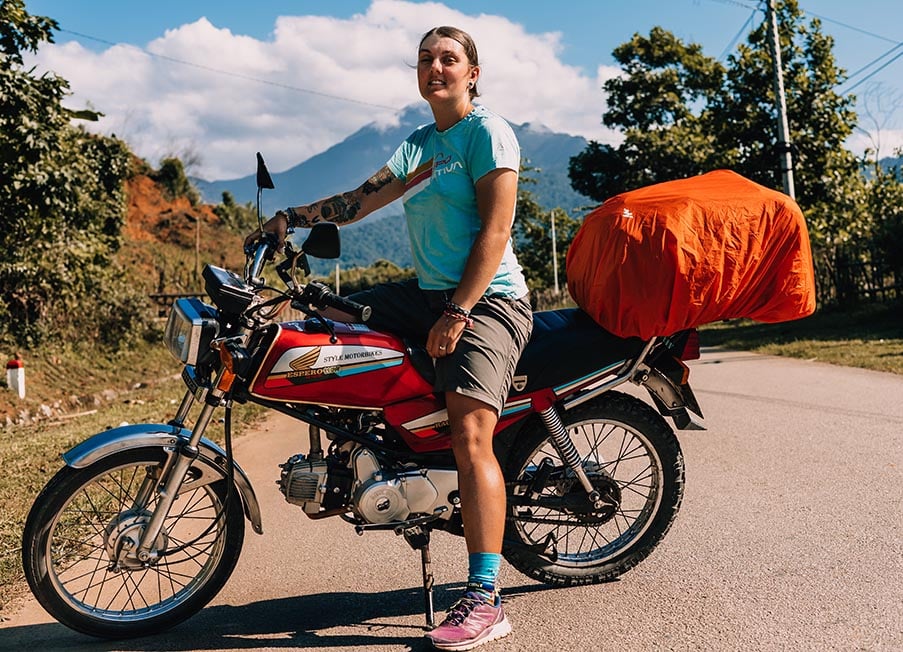
Dense cities and tourist attractions are still questionable (as they usually are). Vietnam isn’t rife with petty crime, but keep an eye on your valuables.
Past that, Vietnam is pretty standard ‘travel in Southeast Asia’ stuff, and even by that metric, it’s very chill. Stick to the standard advice for safe travel and you’ll be fine.
Sex, Drugs, and Rock ‘n’ Roll in Vietnam
The penalties for drugs are really harsh in Vietnam, like other neighbouring countries in Southeast Asia. Weed is the most commonly used drug throughout Vietnam, but you will get into a bunch of trouble for having it if you’re caught.
Let’s be realistic though, you’re probably going to try drugs on the road. In Vietnam, there are definitely underground scenes amongst locals – especially students – so having local friends helps when looking for a joint.
I’d advise against travelling even between cities with anything considered illegal. Once you arrive in a new city, ask around from there.
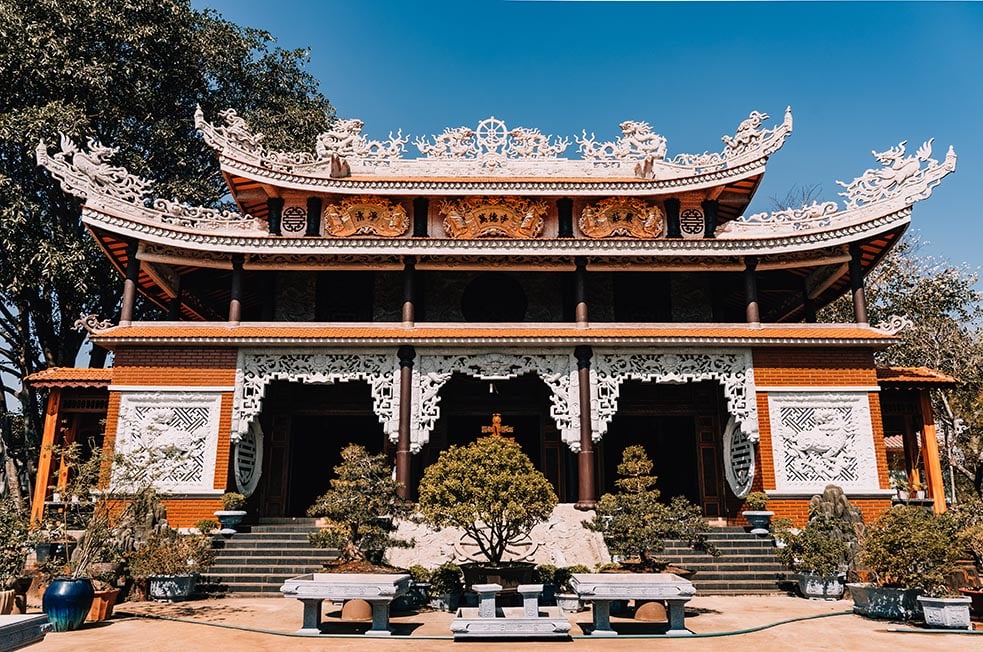
As for sex? Well you’re a backpacker, aren’t you? 😉 Of course, there will likely be a one night stand in your backpacker travels – whether you bone down in a hostel or have a sensuous encounter with a particularly beautiful local.
Through it all, you gotta be a good person. Free love is about love as much as it is about sex, y’know?
Also, I’d be remiss not to mention ‘sex tourism’. Everything is cheap in Asia, including the services of sex workers. This has led to an industry in Southeast Asia that can be very ethically murky. Regardless of your opinion on sex working in general – and whether or not you engage with sex working services – there is no reason for you to not have respect for another human being.
There are enough people in this world with bad intentions and rotten hearts – there’s no need to add your name to that list. But you know that.
Travel Insurance for Vietnam
Right, now let me be the first to admit that my travels sometimes involve some sketchy activities! But rather than ignore my wild side, I just insure in with World Nomads! That way, I can still have my adventures while knowing if shit hits the fan – I’m covered by insurance.
ALWAYS sort out your backpacker insurance before your trip. There’s plenty to choose from in that department, but a good place to start is Safety Wing .
They offer month-to-month payments, no lock-in contracts, and require absolutely no itineraries: that’s the exact kind of insurance long-term travellers and digital nomads need.

SafetyWing is cheap, easy, and admin-free: just sign up lickety-split so you can get back to it!
Click the button below to learn more about SafetyWing’s setup or read our insider review for the full tasty scoop.
Vietnam is one of Southeast Asia’s most accessible countries. Whether you are travelling the Southeast Asia loop and entering by land, coming down from China, or flying directly there, border crossings are relatively straight forward and the days of the tricky Vietnamese visa are now over.
There are long-distance bus/train services that you can use to get all the way from Bangkok to Ho Chi Minh City, or if you’re feeling more adventurous, train it from Europe all the way to Vietnam…
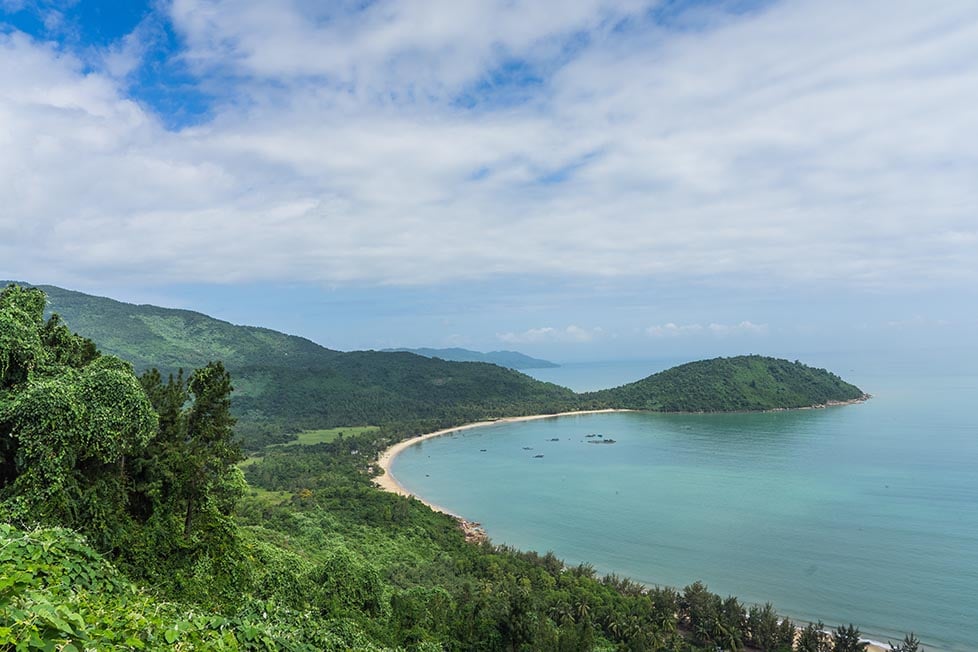
For those backpacking Vietnam without the luxury of time, the best way in is to catch a flight to Ho Chi Minh City. There are flights with the likes of Emirates (via Dubai), Air China (via Guangzhou), and many more Airlines.
I’ve found Vietnam Airlines tend to have the best deals for flying direct to Ho Chi Minh City. Most flights will land in Ho Chi Minh but you can fly to other parts of the country.
You can enter Vietnam by motorbike easily and you can easily travel from Cambodia across the border to Vietnam using local buses. Or, if you fancy travelling in style, there are VIP bus services available for flash-packers.
Entry Requirements for Vietnam
Most countries require a visa to enter Vietnam, however, there is a shortlist of countries that are exempt for short stays. Past that, you’ll need to organise a Vietnam e-visa for a 30-day stay.
Thankfully e-visas are relatively straightforward to organise before you travel to Vietnam. If you don’t want to organise it yourself, there are many companies out there who can help you apply.
And if the 30 days in Vietnam just feels too short, no worries! You can extend once you’re there.

Get 15% OFF when you book through our link — and support the site you love so dearly 😉
Booking.com is quickly becoming our go-to for accommodation. From cheap hostels to stylish homestays and nice hotels, they’ve got it all!
Comfortable long-distance transport and constantly improving road quality make travelling in Vietnam pretty smooth. Vietnam has a great coastal train line that extends up to the Chinese border making travelling onwards to China a snap! It’s a great way to travel across Vietnam on a time limit.
Most backpackers choose to explore Vietnam via bus network. Buses in Vietnam are cheap, plenty are hop-on/hop-off style tickets, and they have ever-increasing presence of Air Con. Basically, they are a broke backpackers dream.
A great way to get from one end of the country to the other fast and scenically. Vietnam Railways operates a single track train network running from Ho Chi Minh city all the way to the Chinese border with beautiful views of the countryside and coast. Slightly slow in places as much of the train line dates back to the colonial period – but that’s just part of the charm, right?
Ensure you book your tickets in advance. Hard sleeper class offers the best value. Be aware that if you buy a through ticket you cannot break up the journey along the way, you will need separate tickets for this. Hop on the Reunification Express for a breathtaking journey.
I did not travel via domestic flight within Vietnam. However, if you are on a time limit, a 2hr flight from Ho Chi Minh to Hanoi is a lot more favourable than 30hrs + it can take on the train. Vietnam Airlines, the national carrier, and Jetstar both offer cheap and backpacker-friendly flights to many destinations within Vietnam.
Rather than just rocking up at the station in the hope they will have space to fit you on, you can now book tickets in advance for most of Southeast Asia using Bookaway .
Travelling by Motorbike in Vietnam
To kick your backpacking adventure into the next gear, get a motorbike. Travelling by motorbike across Vietnam is often more cost-effective than paying for multiple train/bus tickets.
It gives you the freedom to really explore, get off the highway and go in search of raw adventure… Plus you look cool and you don’t have to deal with the drunken Aussie lads on the bus attempting to rope you into a game of ‘drink the beer’.
I picked myself up a Honda Win Manual Motorbike second hand from one of the many backpackers selling their bikes in Ho Chi Minh. I paid around $300 and, for the few weeks I had it, only some minor repairs were needed.
Before travelling to Vietnam, I had never actually ridden a motorbike before and I was, in truth, a little intimidated. Luckily, riding a motorbike is a lot easier than it looks and after about an hour of (somewhat, hilarious) practice, I was good to go.
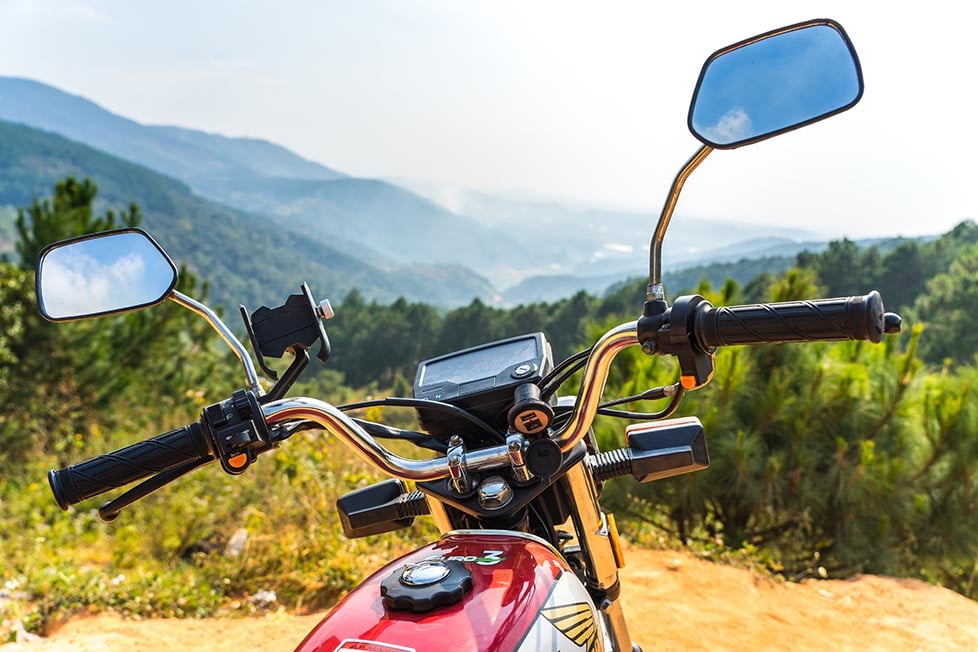
I had this expectation that the roads in Vietnam were going to be dangerous dirt tracks. But for the most part, they are fairly decent besides a few potholes. The biggest threat to you on the road is your own lack of attention, other drivers and animals/people. Make sure your travel insurance covers you for riding a motorbike in Vietnam.
Unfortunately, accidents among travellers are common; I came off my motorbike myself in Dalat and got away with just cuts and bruises… The bike flipped and hit me in the back of the head, and my helmet almost certainly saved my life – always wear a helmet .
I’d also consider bringing a dedicated tent for your motorbike if you want to save money on accommodation. I usually rocked up to a restaurant for dinner & politely asked if I could set up there for the night. They always said yes and never charged me a dime.
Onwards Travel From Vietnam
Vietnam is well placed for onward overland travel to Cambodia , Laos, and China which all border Vietnam. You can bus, motorbike, or hitchhike in a truck full of onions over any of these borders. There are also cheap flights to Thailand, Malaysia, and beyond if you want to carry the Southeast Asia party on that a-ways!
If your travel funds are running low, it’s well worth considering a flight Down Under to the famously high minimum wage of Australia! Or, if you want to chill out in some colder climates, why not try backpacking in New Zealand ?
The long and the short of it is, you’re spoilt for choice when it comes to onwards travel from Vietnam!
- Backpacking China
- Backpacking Malaysia
- Backpacking Laos
- Backpacking Thailand
Yes, yes, 1000 times, yes! I have no short number of long-term travelling friends that do a stint working a backpacker job in Vietnam to build up their cash supplies.
You will need a work permit to work in Vietnam though. A work permit/visa is valid for up to 2 years (non-renewable) and the pressure of the paperwork is off because the responsibility is on your employer! You’ll need to be sponsored by your prospective employer who will then be responsible for the organisation of your working permit.
Vietnam is also an up and coming digital nomad hotspot. It’s got fast internet, a good ex-pat science, and it is ridiculously cheap. There are not many other places in the world where you can get lunch for 2 dollars, and a beer for 80 cents while working with lightning-fast internet.

A new country, a new contract, a new piece of plastic – booooring. Instead, buy an eSIM!
An eSIM works just like an app: you buy it, you download it, and BOOM! You’re connected the minute you land. It’s that easy.
Is your phone eSIM ready? Read about how e-Sims work or click below to see one of the top eSIM providers on the market and ditch the plastic .
Teaching English in Vietnam
Teaching English in Vietnam is one of the most popular forms of work for foreigners in the country. With the right qualifications (i.e. a TEFL certificate ), you’ll find a lot of doors opening to you with some decent wages too (relative to the standards of Asia).
TEFL courses open up a huge range of opportunities and you can find teaching work all over the world with one! Broke Backpacker readers get a 50% discount on TEFL courses through MyTEFL (using the code PACK50).
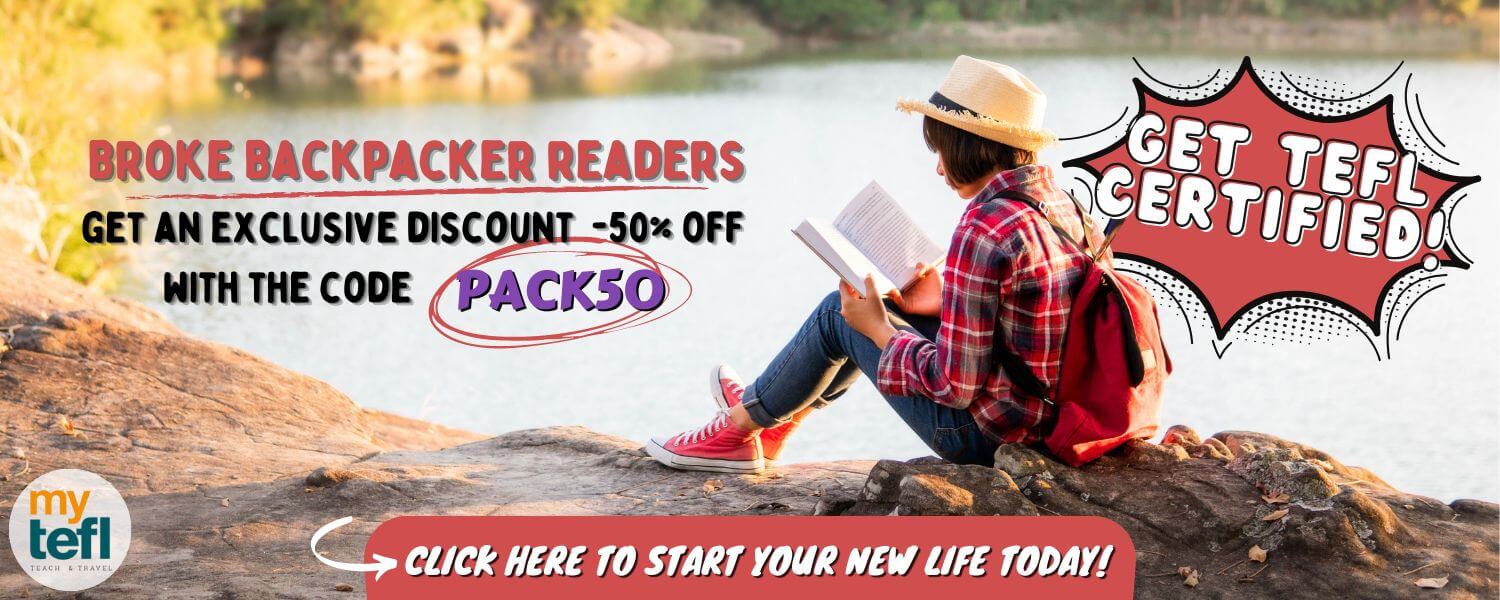
You’ll need a prospective employer to sponsor you (and to go on a contract too). However, then an expat lifestyle in Vietnam awaits! There are heaps of schools around Vietnam that are always looking for fluent English speakers willing to teach. There are even heaps of adults wanting to learn.
A lot of people end up working in the major cities (like Hanoi or Ho Chi Minh) simply for the amount of work available and modern lifestyle. Of course, as I always tell people looking to teach English abroad , getting out of the urban jungles and into the villages and rural areas is going to offer a much more authentic and wholesome experience.
Volunteering in Vietnam
Volunteering abroad is an amazing way to experience a culture whilst helping your host community. There are plenty of different volunteer projects in Vietnam including teaching, construction, agriculture, and pretty much anything.
If the regular ol’ day job isn’t beckoning however, volunteering in Vietnam is a spectacular backup choice! You’ll lower your travel costs, connect with local communities, and give back all your best vibes and smiles while you’re at it! Volunteer programs run through reputable work exchange programs like Worldpackers and Workaway still have their flaws but they’re a great way to get your foot in the door of the volunteering community.
Although only surpassed only by Indonesia as Southeast Asia’s most heavily populated country, Vietnam is the region’s most ethnically homogenous country with the Vietnamese making up about 85% of the population. Most of the remaining population in Vietnam is made up of a variety of minority ethnic groups and peoples with their own customs and traditions.
Being a communist country, Vietnam has no state religion and atheism is encouraged. In truth, the majority of the Vietnamese people either identify with folk traditions or are just straight atheistic. Buddhism and Catholocism are the other two big religions in the country. Across all beliefs, the family and ancestor worship remain pillar belief concepts.
Once you get to know a Vietnamese person, I can guarantee you that you won’t stop laughing. There’s a lot of banter and a kind of humour that’s a second cousin of sarcasm. I don’t know quite how to describe it, but there’s a lot of pointing out the randomness of life and having a good laugh about it.
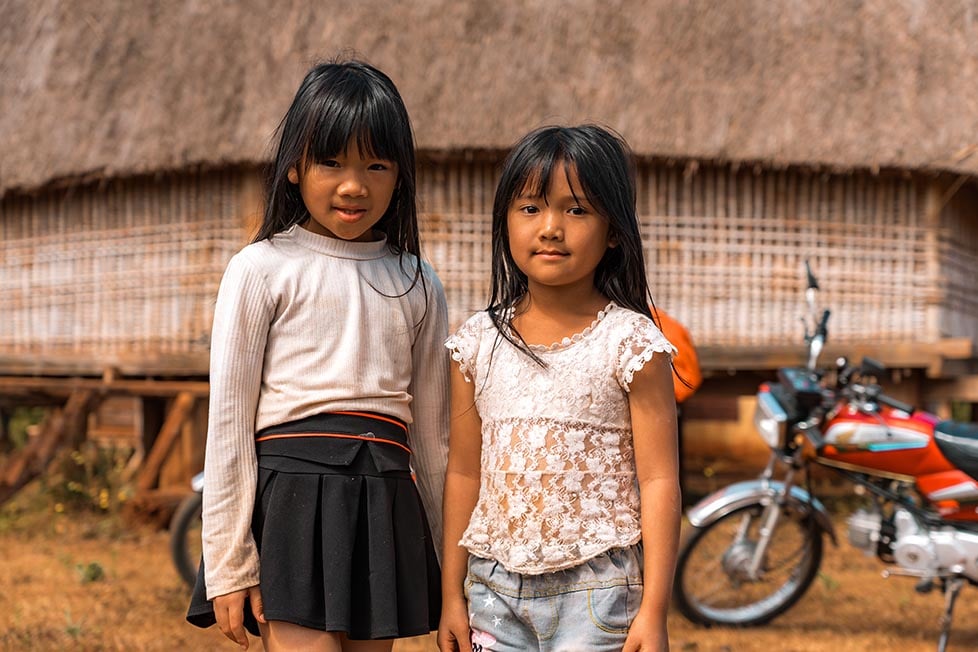
You don’t want to start a friendship with a Vietnamese person with too much banter; you still have to respect that people do not want to lose face. But once you’re out of a formal situation – and after some rice wine has been consumed – then you can unleash the sarcasm!
I think this makes sense for a country that had a brutal civil war and then still has to navigate communist “niceties”.
When my Vietnamese friend and I went on a bit of a street food bonanza, we joked a lot about things that only made sense in Vietnam – like the couple wearing matching pyjamas while dining at a fancy coffee shop. Also, she found it far too funny that people would stop to take selfies with me because I had blue eyes. Obviously, she had to start calling me “Miss America” despite the fact that I am Australian…
Useful Travel Phrases for Vietnam
Below I have listed helpful travel phrases for Vietnam. It always pays to learn a new language as you travel to be able to communicate with the locals. At the very least, try!
On my first days in Vietnam, the only word I could remember was sorry – sin loi . This was lucky, as it’s something I found myself saying a lot as I tried to navigate the dense city of Ho Chi Minh.
Thankfuly, the Vietnamese people are some of the most gracious and good-humoured people on the planet. Nobody cared that I was in the way, although it was pretty funny to hear a little, white foreigner saying sorry over and over!
- Hello – Xin Chao
- Goodbye – Tam biet
- Thank You – Cám on Ban
- No Problem – Khong Van De Gi
- I like to Eat – Toi Muon An
- What is this? – cái si te nài?
- I am Sorry – Toi Sin Loi
- No plastic bag – Không có túi nh?a
- No straw please – Không có r?m, xin vui lòng
- No plastic cutlery please – Không có dao nh?a xin vui lòng
- I’m Hungry – Tôi Doi
- What is your name? – Tên cua ban là si
- I don’t understand – Toi khong hieu
What to Eat in Vietnam
Vietnamese food is popular all around the world! I would be gobsmacked if you have yet to try rice paper rolls or noodle soup.
The Vietnamese know how to cook something mouthwatering out of thin air. As well as tasting absolutely wonderful, Vietnamese food is one of the healthiest foods in the world. Prepared with fresh ingredients, vegetables, herbs, and either rice or noodles, each dish is different but delicious!
And I will begrudgingly pay the French a complimen: they know how to cook some damn fine food. So, if you can imagine salivating snacks a la Vietnam with just a hint of French influence left over from the colonial days.
Yes, the food is the best reason to backpack Vietnam!
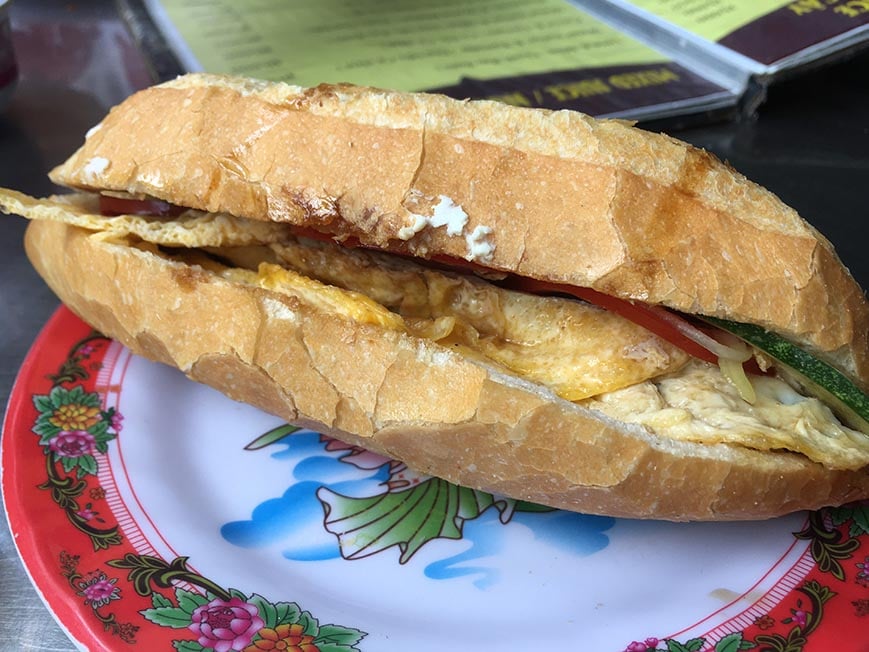
I remember sitting in a sliver of an alleyway deep within the bowels of the old imperial capital of Hue. I was sweating my sweet tushy off and thought the best way to combat sweat is with sweat, so I proceeded to order the most memorable meal I had in Southeast Asia. Bun Bo Hue .
I don’t believe in God, and neither do most Vietnamese people, but how do you explain such divine flavours?
While in Vietnam, I would suggest eating out at every opportunity. It’s cheap and delicious. You’ll understand, first hand, why McDonalds has never caught on in Vietnam.
Popular Vietnamese Dishes
- Buncha – One of my favourites! This is basically a Pork Meatball Noodle Salad. Yum!
- Goi Cuon – The famous Vietnamese “Summer Rolls” are a perfect light bite. Normally filled with shrimp and/or pork, herbs and vegetables. They are wrapped in rice paper and served with Peanut dipping sauce.
- Pho – Basically noodle soup. There are many varieties of Pho, perfect for those slightly unsure about Vietnamese food.
- Banh Mi Thit – Or in other words, the best sandwich in Asia! Basically, a well-sized baguette stuffed with yummy treats such as ham, cheese, fish, vegetables etc.
Brief History of Vietnam
People have been living in Vietnam for thousands of years. It was one of the first places in the world where rice was cultivated! There were several dynasties that ruled over a unified Vietnam – although alongside this dynasty were many other indigenous groups who never fully assimilated into any dynasty.
The Chinese often invaded and were periodically rulers of Vietnam. The Mongols did invade as well but were driven back. When the French showed up in the 19th century though, a unified Vietnam was not willing to be a colony of yet another foreign power.
When France was losing in WWII, Japan took advantage and occupied French Indo-China. The Vietnamese Communists or Viet Minh fought the Japanese and by 1945 they controlled parts of North Vietnam. Viet Minh took control of most of Vietnam and declared Vietnam independent by 1945, but France ignored this. With no intention to give up power, fighting broke out between them and the Viet Minh.
After a siege lasting 57 days, the French were forced to surrender.
In North Vietnam, Ho Chi Minh introduced a Communist regime while in the south Ngo Dinh Diem became ruler. Gradually, the USA became involved in the Vietnam War during the Cold War. First, they were sending military advisers to South Vietnam. Financially, they supported the French and later the South Vietnamese government.
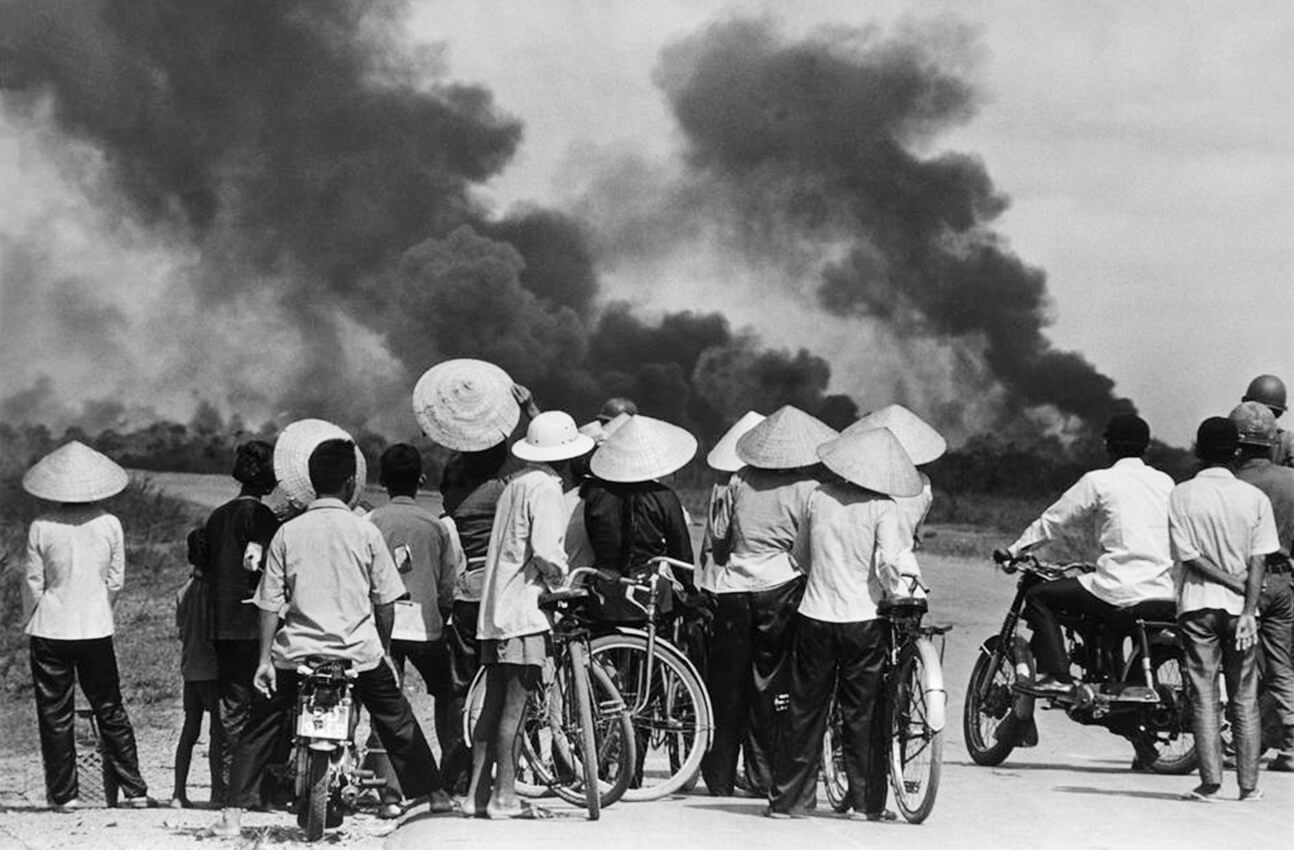
Then in 1964 two US ships were supposedly subject to ‘unprovoked’ attacks by the North Vietnamese. The Americans then bombed the north and Congress passed the Tonkin Gulf Resolution allowing the president to take ‘all necessary measures’ to prevent ‘further aggression’.
As a result by December 1965, there were 183,000 US soldiers in Vietnam and by the end of 1967, there were nearly half a million. However, the Vietcong continued their guerrilla war.
Americans withdrew from Vietnam in 1973, but the South Vietnamese continued to fight the Vietcong alone until 1975 until the North Vietnamese captured Saigon. Vietnam was reunited under Communist rule.
Every first time backpacker to Vietnam has a few questions that they are dying to know! Luckily, we’ve got you covered…
Is Vietnam safe for backpacking?
Yes, Vietnam is SUPER safe for backpackers. Petty theft is a fairly small risk and violent crime against tourists is very low. However, the roads can be quite dangerous – especially if you aren’t used to driving in heavy, chaotic traffic.
Where should I go backpacking in Vietnam?
There is a fairly defined tourist trail along the Ho Chi Minh highway that winds its way from north to south. This is not to say that it’s not worth checking out! The cities of Hanoi and Ho Chi Minh are along this route, as are the old capital of Hue and the city of lights AKA Hoi An. Off the beaten path destinations in Vietnam include along the Laos border and the very northern border with China. You can pretty much pick anywhere in Vietnam and be sure that it will be a good time!
What is considered rude in Vietnam?
Both men and women should dress conservatively when visiting Vietnam and be extra respectful toward elders. Don’t beckon with your palm facing up (as this is how you would beckon a dog) and generally keep a respectful tone. Obviously, tourists do have a little leeway but it pays to be respectful as a guest of this country.
Is Vietnam expensive?
Noo. Noooooooo, nope. Not in the slightest. I mean, you could spend hundreds of dollars per day living like a royal, but why would you bother? For 10 dollars a day you can have a good hostel bed, eat out at every meal, and even enjoy a cold beer at the end of it.
What is the highlight of backpacking in Vietnam?
For me, the highlight was seeing the modern world meet the old world. In many ways Vietnam is as advanced as cities in the west – the wifi is better than in Australia, for example. There are high rises, public transport, and hipster cafes. And then there is still the Vietnam of rice paddies, buffalo carts, and wet markets. It’s such a juicy, fascinating mix of cultures that simply never gets boring!

Our GREATEST Travel Secrets…
Pop your email here & get the original Broke Backpacker Bible for FREE.
Be good to Vietnam.
Writing your name in black marker on temples, chugging beer in Saigon while shirtless, swearing loudly, and visiting unethical animal attractions? You, Sir, are a twat. Luckily, most backpackers don’t fall into this category but, when you’re out and about and have had a few too many drinks, it can be easy to embarrass yourself.
By no means am I telling you not to drink, smoke, or party. Do it and enjoy it. Just don’t get so drunk you turn into an imbecile your mum would be ashamed of .
Go to Vietnam and have the time of your life, but be respectful along the way. There are mountains to hike, cities to explore, and some delicious bun bo hue to try along the way. You are sure to experience a very special slice of the world when you travel to Vietnam.
When we travel, we make choices that not only impact ourselves but the local communities around us and the travellers that come after us. When we are privileged enough to experience a country like Vietnam, it’s up to us to make sure it stays special for those that come after us.
Vietnam has had it rough over the years. Just be good to it, is all.
Now all that’s left is for you to book your ticket and get trying that banh mi!
- Best festivals in Vietnam
- Best backpack for travel
- Hanoi VS Ho Chi Minh
- Best hostels in the world!
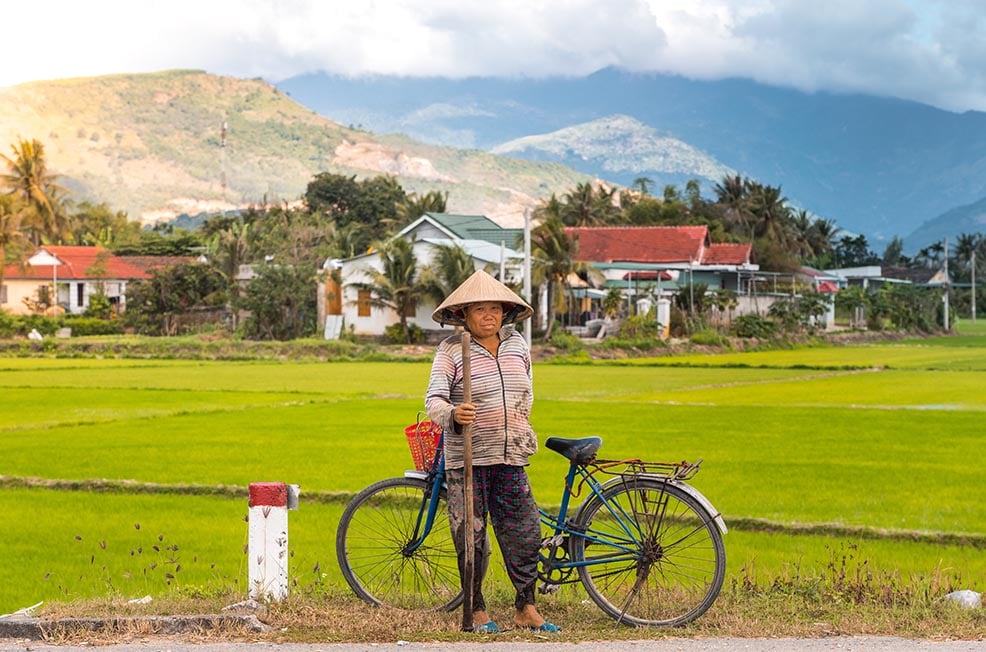
Updated November 2021 by Indigo Atkinson .

And for transparency’s sake, please know that some of the links in our content are affiliate links . That means that if you book your accommodation, buy your gear, or sort your insurance through our link, we earn a small commission (at no extra cost to you). That said, we only link to the gear we trust and never recommend services we don’t believe are up to scratch. Again, thank you!
Will Hatton
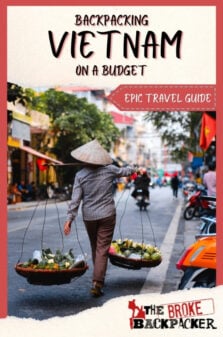
Share or save this post

60 Comments
Thanks for all the info, really loved it 🙂 I am travelling alone around Asia during 3-4 weeks. I am trying to decide between Vietnam or Indonesia. I am looking for nature a bit of beach and a destinations where its easy to meet people (but not too touristic). From your posts both seem great options! Any recommendation?
Hi Paula, I would suggest Northern Vietnam, Thailand and maybe one other destination. Indonesia is certainly an amazing country but you would be able to experience a number of different countries on one trip is you choose the first route.
I worked in Hanoi for a short time in 1996, and thought it was an amazing country. Have always meant to go back, but it is now 2020 and that hasn’t happened yet. Would love to see the rest of the country and backpacking might be the way to do. The guide is much appreciated! Many thanks 🙂
What a nice post. Vietnam is definately a must visit place in South-East Asia. We have everything from beautiful landscape, friendly people, amazing nature and delicious food,… Thank you very much for visiting our country and sharing your experiences to travel community. I love to read your amazing blog. Wish you all the best and keep doing a good job!
Hi! I was wondering if any vaccinations/medicines are necessary or recommended to enter Vietnam and its surrounding countries. I’ve heard advice to get Malaria pills but wasn’t sure if it’s absolutely necessary. Thank you in advance!
We recommend Hep A, Typhoid, and Tetanus vaccinations. Malaria pills are always good to have on hand in tropical areas. The CDC is a good resource for specific information by region. Happy adventuring!
Thank you so so much! This was put together so very well ! And it sounds like a practical and realistic itinerary for people on a budget ! Thank you so much 🙂
Thanks for dropping by! Hope your time in Vietnam is a good one 🙂
The best time to visit Vietnam: – The North: From November to March is great if you like cold air, very typical surroundings, but the weather may be rainy, and the remaining months are quite good weather – Central region: From April to November, sunny weather is very good, the rest is even rainy and cold. – Southern: All months
During my own trip to Vietnam last year I used this page as a reference. I ended up using Vietjet airways (not listed on this page) and had no problem finding a cheap flight. The central downtown Backpackers Hostel was spot on, and made for a great launching point into the rest of the country. My only additional recommendation in Hanoi is touring the Ho Chi Mihn museum, the glowing dead body of the fearless leader is crazy to see.
-be sure to cover all visible tattoos while visiting religious sites, as well as cover shoulders and legs to the knees -do not give money to children on the street, many are forced to beg and the more money given by tourist encourage them to not attend school
Hoi An, Danang will be great if you go there, sure you will have a great time. i love hoi an
Hey Will, I understand that you recommend traveling by motorbike. I’m planning on traveling to Vietnam for about 4 weeks “alone” (I’m hoping I’ll meet someone one the way) next year. Honestly, to me it sounds a bit scary to motorbike everywhere. I have never done it and afraid I won’t manage it. So my question is, do you think I would get a lesser experience by not renting a motorbike? Thanks
Having a motorbike in Vietnam is hands-down the best way to experience the country. It is not only one of the cheapest ways to get around but also gives you the most freedom. I’ve found some pretty amazing places in Vietnam that were only accessible by bike.
BUT you must be experienced with a bike before traveling to Vietnam. The roads can be super intimidating, thanks to all of the crazy drivers and speeding trucks, and being sheepish at all could result in disaster. I highly recommend that you practice on a bike before heading for the country – specifically, a semi-auto – and to know what you’re doing.
Hope that helps.
Best time to visit Northern Vietnam (Ha Noi, Ninh Binh, Phong Nha, Hue, Hoi An, Nha Trang) is from Mar to Sep. It’s sunny and hot season. So boring if you visit these places in winter, rain all day, sometimes have storm >_<
Southern Vietnam like Hochiminh, Mekongdelta, Phuquoc island …, you can visit anytime. It's warm, hot, sometimes rain 1h or 2h. From here, it's easy to go to Laos, Cambodia and Thailand by flight or bus or boat.
Thanks for your suggestions. We have finally made a plan of 15 days. Saigon(2n)- Mui Ne (half day) – Da Lat(2n)-Hoi An(2n)-Danag(1n)- Hue(half day) -Phong Nha(2n)- Ninh Binh(1day) – Halong Bay(1 and half day) – Hanoi (2n). We have eliminated Sapa trek because we have just completed himalayan range trek. Though it’ll be a speedy one but no way out. Wish to have a good time.
Wow, what a wonderful write up for someone who is planning to head for Vietnam for the 1st time. Would you please tell me if 12 days are enough to cover all of them? another thing is how much does is cost for Ha Long Bay cruise?
Waiting for your reply.
It’s not possible to do this whole itinerary in 12 days and I don’t recommend trying – it’ll be too rushed. For Halong Bay, there are many different packages and it partly depends on your haggling abilities but bank on somewhere between $100 – $200.
When you take a break and go to a new place, where everything is simply amazing and great to look at, then Vietnam is the place for you. I got Hanoi transfer service from Hanoi Travel Bus. It helps you from the airport to your lodging.
I have been to Vietnam so many times and I absolutely love it!
Just wanted to say thanks for taking the time to write this. I have traveled Asia plenty of times before and I am just researching an upcoming trip to Laos, Cambodia and Vietnam. The information you have provided here is so detailed and by far the most useful I have found. I’m pretty ‘laissez faire’ when it comes to travelling but in the past a lack of planning has seen me in a sticky situation. This makes me feel just prepared enough to arrive without a plan. Thanks and keep it up!
Thanks for your kind words, I’m glad you enjoyed the blog! 🙂
Hi everyone,
I just accidentally visit this blog, I’m a Vietnamese. I have some tricks to travel VietNam with cheapest price. I’ve just travelled across VietNam with 5,000,000 VND ~~ 250 USD with my motorbike. (around 4800km ~2900 miles in 9 days) Here is my tips: + Live in small hotel (hostel, in VietNamese => “Nhà Ngh?”) -> it cost from 5$ ->10$ per night 🙂 + There’s almost beautiful places in Northwest of VietNam, it called “Tay Bac”, it includes some provinces: – Ha Giang (you should visit Ma Pi Leng pass – small himalaya mountain range :)) – Lao Cai (SaPa is good) – Lai Chau(O Quy Ho pass (~40km)) – Dien Bien (many historical places) There also many places that I can’t list here.
If you interest in travel or something you can ask. Please contact [email protected] It’s my hobby, not work, so there no charge or fee. 🙂
Thanks for read my comments 🙂 Tan Pham
Have been struggling over multiple travel blogs to know more about Vietnam. This article has literally answered all my questions . Thanks Will, this is really great . We are a group of 4-5 girls, heading for Vietnam in December , just a quick question, how’s the safety for female travelers there ? Thanks again! 🙂
Have an awesome time – safety in Vietnam for ladies is really pretty good if you follow normal precautions of not being alone at night in the street etc.
Awesome blog WILL!!! This is informative & especially relevant for a traveler on budget. Thank you so much.
Thank you for a very detailed information. This blog is really suitable for one who wants to go and visit Vietnam. Hope that you will provide us the more interesting articles about this beautiful country. looking forward reading your others blog <3
Hey Will, thanks a lot for this beautiful blog. I’m heading to Vietnam next month and cant ask for more now. Great job, will surely leave a review when I get back. Thanks again!
Love how detailed your article is! I even share this to my friend who’s going to backpack here in Vietnam for a month and he also found your article very informative.
Brilliant blog and pictures! Sapa adjustments each year as swiftly do other terrific destinations in vietnam alas! Even though it nonetheless is a super united states of america to visit! Thank you for sharing.
Hey Will! been following your travels for a while now! Awesome stuff! did you spend any time in Da Nang? I have been living here for eight months and love it here, so much more than Hanoi, HCMC and Hoi An!
I haven’t been to Da Nang, would love to go though! 🙂
O gosh how I miss Vietnam. I absolutely loved the area of Halong Bay ad Ha Giang. The people are so lovely and friendly. The food is super. I want to go back!!
Awesome piece, some really helpful stuff on there for a first time traveller like me. I had a quick question. I’m planning on travelling through Vietnam solo in May next year and I was keen to find out exactly how “planned” my trip should be. Do you reckon I should pre-book all my accommodation before I go or do you think initially arriving with an idea of where I want to go will be fine? I obviously would like to have a good balance of being able to do things spontaneously if I meet a good crew of people but also wouldn’t want to be stuck without anywhere to stay! Thanks for the help
Play it by ear amigo!
The trip is really fun if you choose to have a great trip to experience all the best things that the tour has done, the difficult roads need patience and beautiful roads. will be recorded for your journey.
Hi Will Hatton thanks a lot for posting this interesting blog and also a worth read.People who are plannnig to visit vietnam should definitely go through this blog.
Thanks so much for this Will! My girlfriend and I are planning a budget trip to Vietnam and this guide is super helpful! You also shared so many destinations that I haven’t come across yet or found recommended so I definitely have a lot to consider with our upcoming trip.
Quick question for you – is it just as easy to get around using the train as the bus? Similar to how it is in Europe? or would you recommend using the bus for smaller destinations and the train to get between bigger cities?
Thanks Will!
Hey Stefan! It’s real easy to get around Vietnam using hop on hop off buses but I strongly recommend exploring by motorbike, that’s the best way to see the country! 🙂
Pour découvrir tout le Vietnam, je pense que cela prendra un mois. Et pour ce faire, mon budget doit être abondant
Hello! My understanding is that you cannot ride a motorbike in Vietnam without a proper license? My insurance won’t cover me without a motorcycles license. You mentioned you had no prior riding experience before going there. How did you get around that?
Hey man, I’m not sure if the situation has changed but as far as I know it’s very unusual to get into any problems with the police – a small bribe will get you out of most traffic situations. Your insurance wont’ cover you to drive a bike but if you did get into an accident…. *cough* perhaps you could say you were on the back *cough*
Recently completed our month long trip from Ho Chi Min to Hanoi & then beack to Thailand for another month. We based our trip on this article as we knew nothing of Vietnam. Found it usefull & informative.
Pretty impressive article! Thanks for sharing?
,great blog. worth a read.I am currently planning my Vietnam- Cambodia backpacking and this will definitely help me a lot but I think I’m going to skip some places though.
Very Informative article, Thanks for sharing!
Thank you! Hopefully I can get there soon!
– Jessica | http://brokegirlsdiary.com/
Loved your article.! Im planing my trip according this.! Also should i drop some of the stuff given above being a solo women traveler.?
…ps, your guide refers to around 20 different places to visit from North to South. Have you done this route & what would your estimated time frame be to travel this at a moderate, relaxed pace? How much time do you think we realistically need?
Great article Will. We “Will” be using this as a basis for planning our backpacking trip through Vietnam, possibly in June or July. The trip will be anything from 6-8 weeks. We will be slackpacking as we are 49 & 50 years young. Don’t mind camping as we rough it often in South Africa on 4×4 trails & bike rallies. We don’t, however do hostels or share bathrooms. Not sure how much that will influence the daily spend, although in Thailand we found that we spent more on accommodation yet less on getting scammed and wasting money like we saw lots of the young backpackers do, so maybe this will balance figures. Will, do you have any tips you may think are relevant to us “Midlifebackpackers”? Cheers
I’m Vietnamese and working in tourism but I learn more from your post. Great blog Will Hatton.
Great blog and pictures!
Sapa changes every year as rapidly do other great destinations in Vietnam unfortunately! Though it still is a great country to visit!
Tom and I met in Vietnam so it is quite dear to us! He rode a motorbike throughout Vietnam and had the time of his life! I went on buses but joined him along some of the stops. We will be posting a photo diary of his motorbike adventure on our blog soon. Great article, Will!
I would love to see the photo-diary!! keep in touch 🙂
In my opinion, no, not really. Hanoi is WAY nicer. Saigon has a good party vibe but it’s still not there best place in Vietnam to party so if I was planning a trip it would be the first place on my list I would scratch out if I was low on time.. 🙂
I loved backpacking in Vietnam, and visited everywhere that’s on your list. Sapa was the only place that, unfortunately, I really wasn’t keen on..
I think Sapa has changed a lot from what I have heard… I havn’t been for over three years now, I’d love to head back to Myanmar but I’m just preparing to head off on a whirlwind adventure around Central and South America! 🙂
Woah, also, I think that ostrich riding is not an activity that should be recommended. I saw the signs for it when I was in Mui Ne… Made me feel quite sad.
I’m currently in Central America, though will be travelling north I think. Unfortunately I don’t really have the funds to go south yet – as I want to do a massive long journey around South American in one go sometime in the future.
Hmmm, I don’t know enough about ostrich riding, other than that it is quite popular in South Africa, to say whether or not it should or should not be recommended. It was an interesting experience for sure and the ostriches seemed well looked after in a professionally run center.
Hi again Will – I would definitely recommend reading this post: http://right-tourism.com/2014/09/ride-ostrich/#sthash.frdGIE5P.KSwVRI2K.dpbs
Hi Charlie,
An interesting read for sure but it doesn’t really provide any evidence that there is a problem with riding ostriches, it uses phrases like ‘may’ and ‘maybe’ – although I think it’s important to be an ethical traveler, one has to try and get the balance right – after all, the most ethical thing for the planet would be to not travel at all! Riding an ostrich was a unique experience which I enjoyed, I’m not sure I would repeat it (I havn’t yet had a chance), and I saw no risk of harm to the ostriches themselves. When I can see a risk to an animal I will never increase that risk – for example, I would never dream of riding horses or donkeys abroad as they are usually treated badly.
Leave a Reply Cancel reply
Your email address will not be published. Required fields are marked *
Save my name, email, and website in this browser for the next time I comment.
Notify me of followup comments via e-mail.

IMAGES
VIDEO
COMMENTS
You'll be carrying everything you need for the trip in a top-of-the-line, fitted backpack we provide. Pack weights vary between 25 and 45 pounds, depending on the area, the duration of the trip, the time of year, and your height and weight. We provide everything except clothing, footwear, rain gear, personal items, and a couple small gear items.
We offer a wide range of all-inclusive backpacking and hiking tours in some of the USA's best national parks and scenic trails. Apart from getting yourself to the meeting point and bringing your personal items, everything is organised and provided for you including an expert hiking guide, permits and fees, meals, and most camping and hiking gear.
Looking for the best backpacking tours? From Europe to Australia, discover some of the top backpacking destinations, trips, and plenty of helpful tips at TourRadar.
250+ Hiking & Trekking tour packages in USA with 3,577 reviews Save and compare this adventure. View Map . Hiking & Trekking ; Active ; Camping ; Explorer +2 Hiking Utah's Mighty 5 Hiking Utah's Mighty 5. 4.9 (23 reviews) the best way to explore the vastness and glory of the Utah desert is by camping and hiking in small groups. ...
Forge new friendships, and explore the globe with our tour packages, including group, volunteering, and private trips worldwide. Join . Tours ; Deals ; Reviews ; Contact ; Login. Backpacking Trips For Solo Travellers. ... We started in 2013 with a 21-day "Backpacking Through Thailand" tour. Today, we offer many group tours and volunteer ...
10 Days Backpacking the USA Itinerary - A Jetsetting Holiday. 1.New York City, 2.Chicago, Illinois, 3.Los Angeles, California, 4.Miami, Florida. A 10-day itinerary in the USA doesn't offer a whole lot of time to see the country, but you'll still have lots of options with a larger budget.
4. Mount Sterling Loop Trail (Via Low Gap)—Great Smoky Mountains National Park, Tennessee Length: 28.5 miles Elevation Change: 8,110 feet Days: 4-5 Trailheads: Low Gap Trailhead, Big Creek Trailhead Situated in the country's most visited national park, the Mount Sterling Loop Trail offers an intermediate-level backpacking trip to the peak of one of the tallest points in the park.
Join one of our backpacking tours for 18-30-somethings. You'll travel with like-minded backpackers and a knowledgeable tour leader in a small group of up to 20 people, allowing you to experience a more authentic side to each country. Travelling safely on trains, buses and ferries like a native, you'll get a unique insight into local culture:
10 Best Backpacking Tours Europe 2024/2025 - TourRadar. Searching for the perfect Europe backpacking tour? Discover a range of destinations and routes at TourRadar, and start planning your dream holiday today.
Yampa River Natural History & Hiking Adventure - 5 Days. Join OARS and discover the natural history of the Yampa River on this rafting and hiking adventure with award-winning author Dr. Patrick Tierney. Location. Colorado & Utah. Date. May 20, 2024 - May 24, 2024. From.
A good micro-fibre travel towers is essential travel gear on any ultimate backpacking gear list. The Matador micro-fibre towel range are made by travellers for travellers. They are super light, and most importantly dry very quickly and are perfect for all types of backpacking trips. Check Best Price.
(Photo: Courtesy Deuter) Best for Short Overnights Deuter Aircontact Ultra 35+5. $240 at Amazon. Weight: 2.5 lbs Size: M's and W's, two sizes each Pros and Cons ⊕ Lightweight ⊕ Breathable ⊕ Good load-carrying capacity ⊗ Small pockets. The Aircontact Ultra has been an outstanding bag for years—we gave the 50+5 an Editor's Choice Award in 2022—thanks to its low weight, well ...
Best Overall Backpacking Pack: Osprey Exos 58. Best Budget Backpacking Pack: REI Co-op Trailmade 60 Pack. Best Breathable Backpanel: Gregory Men's Katmai 55 & Women's Kalmia 50. Best Women's ...
A Grand Canyon hiking tour offers an incredible opportunity to explore shimmering waterfalls, ancient ruins, unimaginable vistas, and spectacular rock formations. Choose from a range of guided backpacking trips, mule-assisted camping and hiking tours, lodge-based tours and basecamp adventures. Experience a Grand Canyon hiking tour with Four ...
Best Machu Picchu Tours & Trips. Find the right tour package for you through Machu Picchu. We've got 607 trips going to Machu Picchu, starting from just 2 days in length, and the longest tour is 65 days. The most popular month to go is August, which has the most tour departures.
This trip has the best of Vietnam in one neat little 2-week package! 1-Month Travel Itinerary for Vietnam: The Grand Tour. ... Start your trip backpacking in Hanoi - Vietnam's beautiful capital city. Make a side trip to the countryside of Sapa, where you can ride your motorcycle through the hills and explore waterfalls.